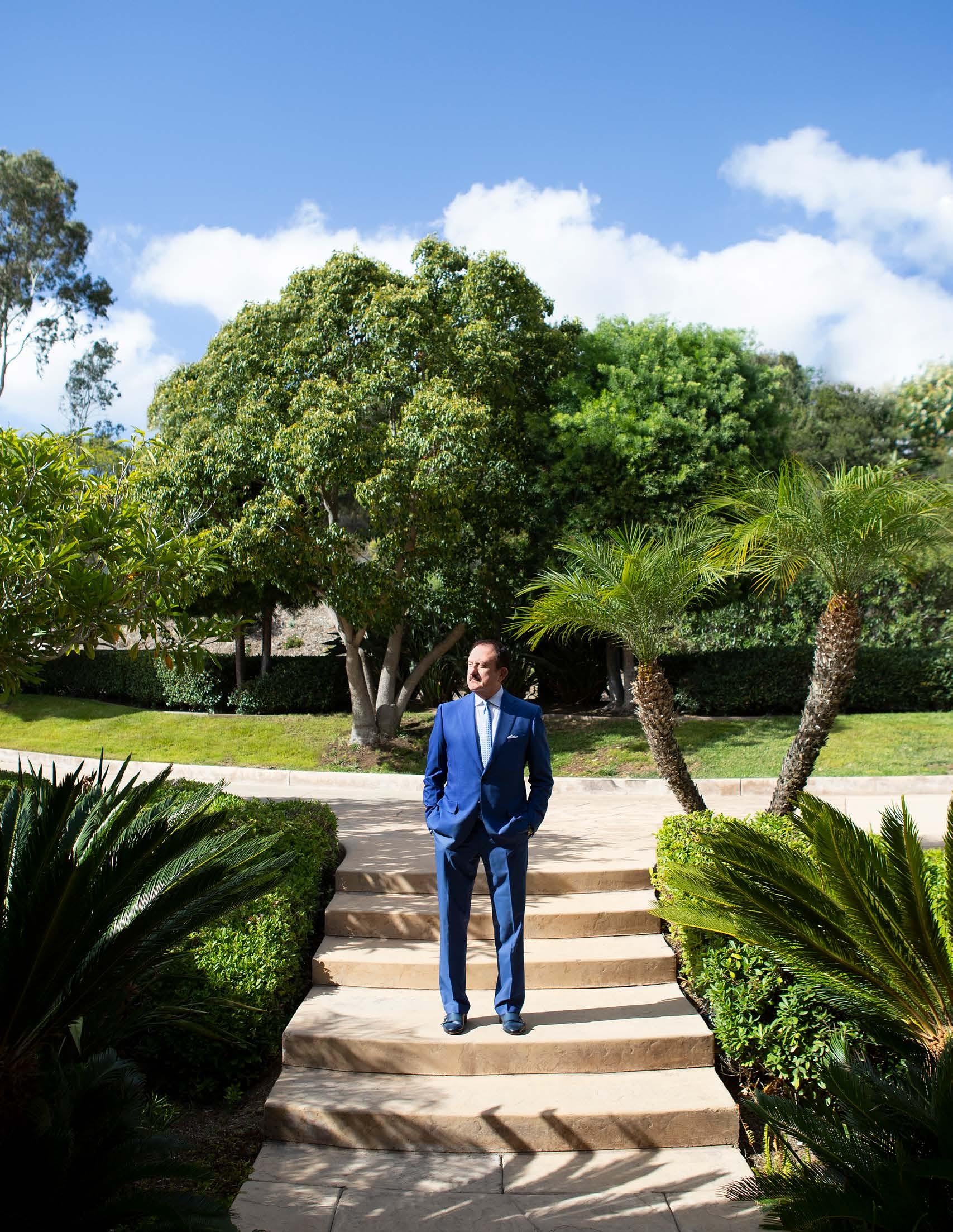

Sol Power
The premiere of our interview series by Ruben Navarrette features a no-holds-barred conversation with legendary businessman Sol Trujillo
The Talent Issue featuring Magda Yrizarry, Verizon | Troy Acosta, Sodexo | Marta Ramirez, DB Schenker and more
BEFORE YOU CAN SUPPORT AMERICA’S JOB CREATORS, YOU NEED TO KNOW WHO THEY ARE.
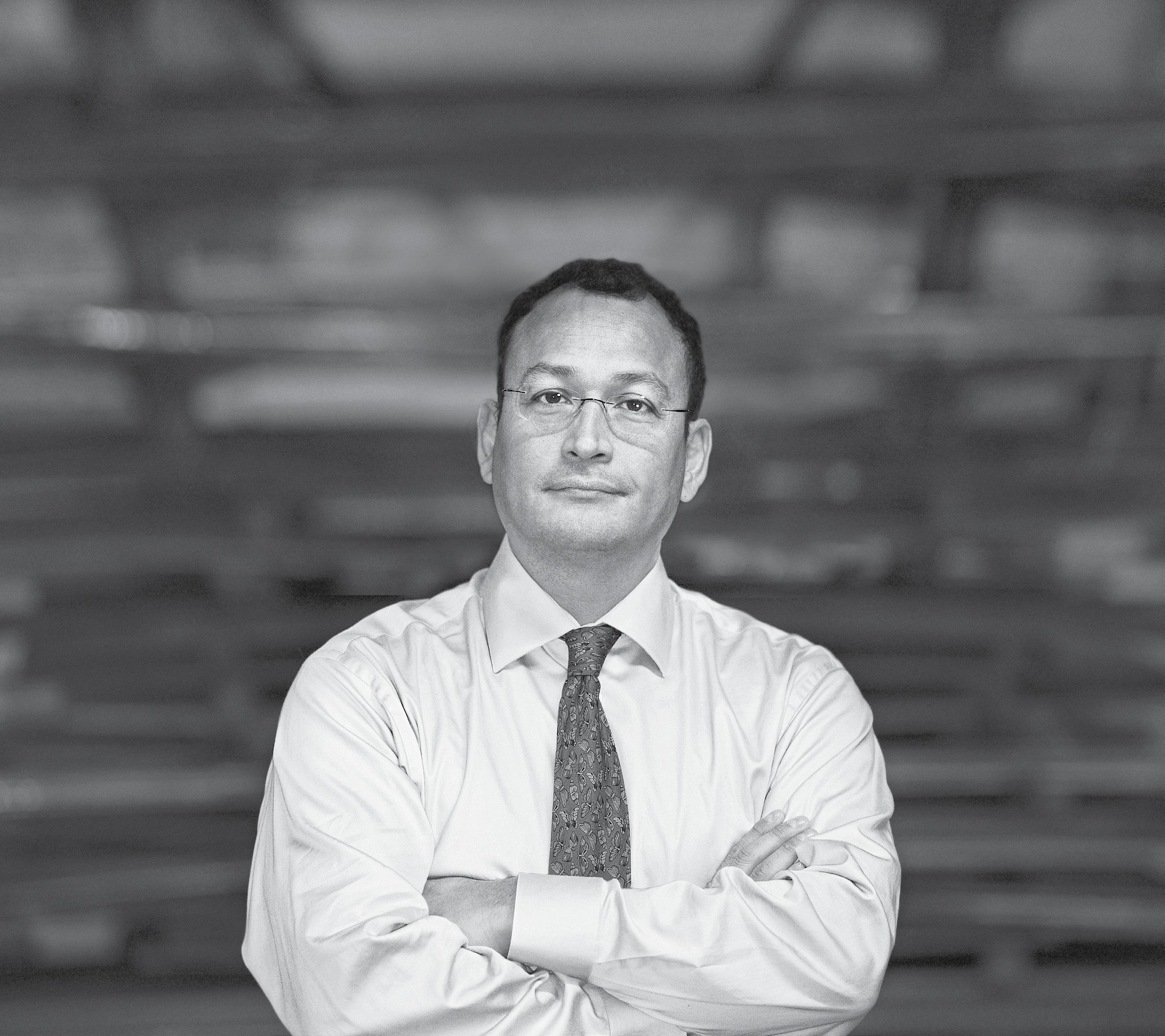
To everyone who believes in supporting and incentivizing the American entrepreneurs who generate thousands of jobs every day, we couldn’t agree more.
• Latino-owned new business formation skyrocketed 47% between 2007 and 2012.1
• Non-Latino new business formation declined by 2% over the same period. 2
• Latino-owned businesses created 1.9 million jobs in 2007 and have been outperforming non-Latino job creation every year since. 3
For even more eye-opening facts about this extraordinary group of American taxpayers, neighbors, soldiers, churchgoers and job creators, visit www.thepowerofall.us
Brought to you by the Latino Donor Collaborative. LDC is a group of Latino business leaders committed to a bigger, more prosperous US economy that includes and benefits everyone.
1. Rivers, Douglas, J. I. Porras, R. Arteaga, T. Chapa, J. Salinas. State of Latino Entrepreneurship, 2015, Final Report, Stanford Graduate School of Business, https://www.gsb.stanford.edu/faculty-research/publications/state-latino-entrepreneurship-2015, 11.
2. Rivers and Porras. State of Latino, 11.
3. United States, Department of Commerce, Minority Business Development Agency Office of Public Affairs, 21 Sept. 2010, https://www.mbda.gov/news/press-releases/2010/09/commerce-department-report-shows-hispanic-owned-businesses-are-growing.
“As leaders we have to be immensely aware of our impact over people. Help people
Lisa Perez solves the Twin Cities
Marta Ramirez launches DB Schenker’s innovative digital-
Terilyn Juarez Monroe centers Varian’s culture around the
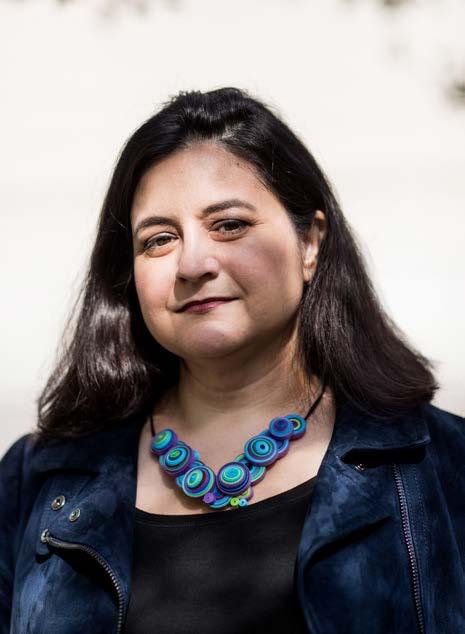
Over the past twenty-seven years, Peggy Turner has helped Toyota evolve its views on work/life balance so her team can succeed in its goal of providing omotenashi

Mónica León Bernstein is continually evolving her leadership style to thrive as an in-house lawyer in the hospitality industry
Shrinking Regional Poverty with Education
Through her work at the University of Texas Rio Grande Valley, Veronica Gonzales is helping to lift a community in need
Luis Ayala of Children’s Hospital Los Angeles works to ensure that the families that need the hospital’s care most receive it
Pedro Ejzykowicz leads by example, creating a culture that embraces risk at Southwest Generation
Jessica Gonzalez developed a heightened sense of perception at an early age; she’s now using that skill to succeed at BP
Marta Carreira-Slabe is helping Aon bring its Women’s International Network to Latin America
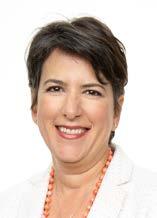
Why Alejandra Montenegro Almonte is the go-to lawyer for Latin American compliance programs
KLEKAMP (TOYOTA), GILLIAN FRY (BP)
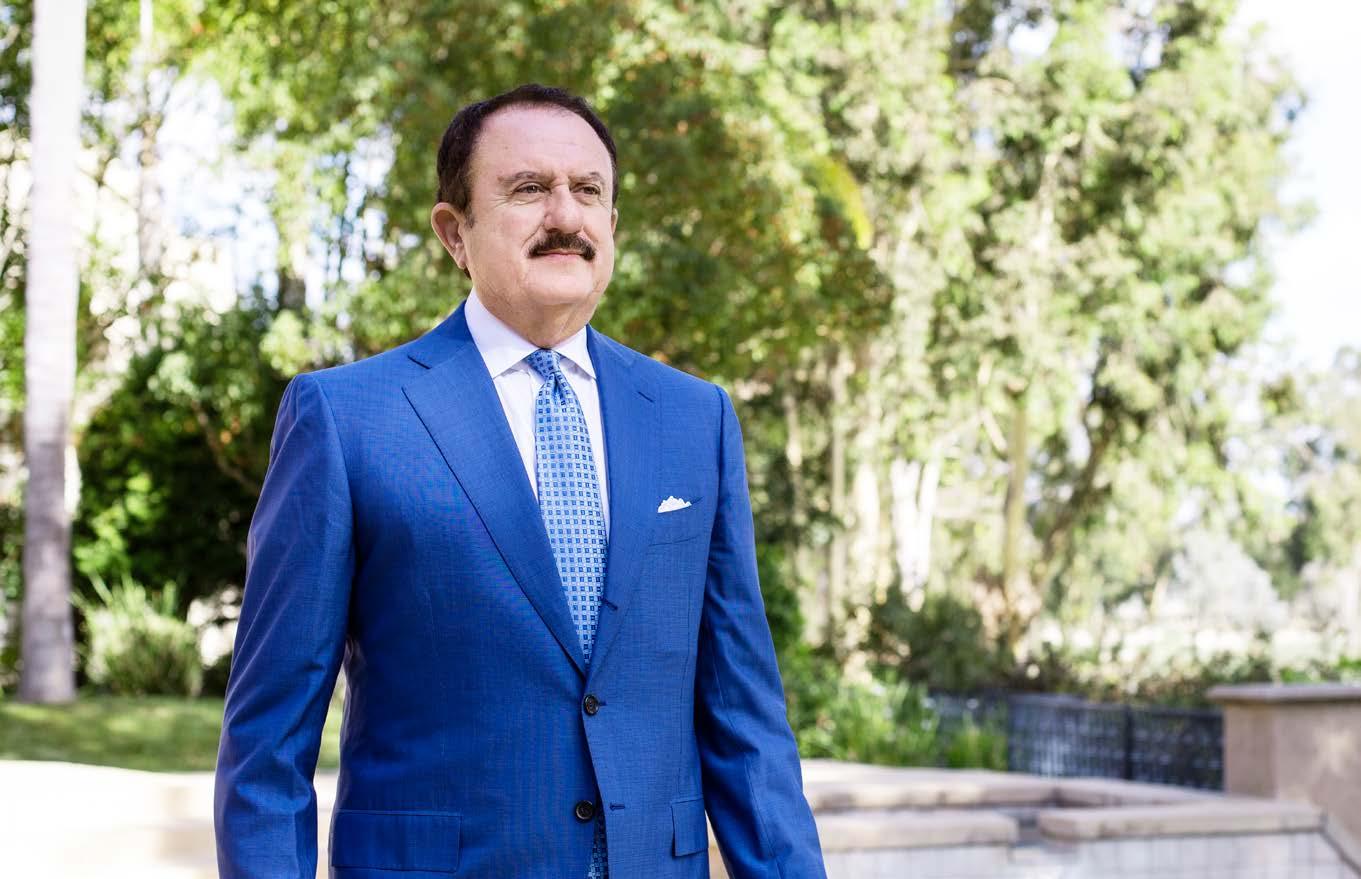
A Letter from
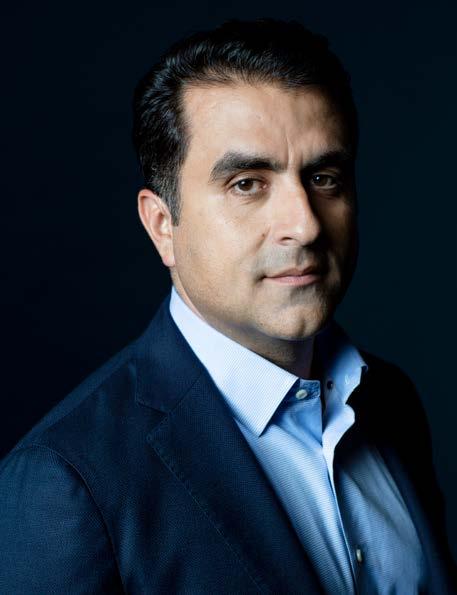
From the beginning, the idea for Hispanic Executive was a simple one: there was a need in the marketplace for a magazine that told the stories of successful Latino executives and presented those narratives in a high-caliber way. I had grown up watching my father, an educator, regularly receive a business magazine for Hispanic professionals that he regularly threw away. Not only was my father not in their target market, the magazine was flimsy and poorly designed. It almost begged to be overlooked and thrown in the trash.
But our stories shouldn’t be overlooked. Our stories merit a platform that has weight, that has a presence, that tells the reader: take the time and read about these distinguished Latinos.
Pedro A. Guerrero CEO of Guerrero Media Publisher of Hispanic Executive
When I started Guerrero Media thirteen years ago, a few years after earning my MFA in painting, I had this unverified hunch. I believed that the Hispanic market was ready for a luxurious magazine that reflected the caliber of its community; a brand that would reflect a refined aesthetic; a publication that I even thought could someday become the Forbes of the Hispanic business community.
the Publisher
The problem was: I didn’t have a plan around that vision. I didn’t have a strategy. What I had was an idea, a hunch, and a creative sensibility. And, like many entrepreneurs and business leaders found in this issue, I took a risk, venturing forth without knowing if this concept would become a reality.
Fast-forward to today.
Hispanic Executive is now one of the most respected, sought-after brands for Latino professionals. I am amazed at how far we’ve come.
With this being the talent issue, I can attest that we would not be here today if it had not been for the talented members of the Hispanic Executive team. Since our launch in 2007, we have also established great relationships with our readers and our community. And what we’ve heard from them, what we have heard from you, is that you want more from Hispanic Executive
Well, we want more, too. We have been dreaming big since day one and we still
have those big aspirations. We want a brand that speaks directly to our audience of both tenured, successful executives and aspiring business leaders. A brand that captures who they are and that provides them with valuable content and shared experiences they can apply in their professional life.
So, I introduce you to: the new Hispanic Executive.
With the new Hispanic Executive, we wanted to dive deeper into the habits of our readers and the executives we profile to understand how they consume media in order to segment each media platform with an intentionality. We also wanted to focus a big part of our efforts on our roots: the print magazine.
There clearly is a different experience reading a magazine than reading something on a screen. I think there is something declarative and interesting now to say, “No, this content is specifically designed for you to read more slowly, in a more focused way than content that’s going to be read in two seconds
on a screen.” Something that won’t be easily overlooked or discarded.
We have made a clear decision to treat the content in our magazine differently than what is experienced on the screen. Aligned with that, for the magazine we have changed not only our type, colors, and content, but also our publishing frequency. For business professionals, there’s a quarterly cadence to the fiscal year; it’s a time where you sit and review how the company performed in the past quarter. We want to mirror that in our frequency. We want to create an experience where Latino professionals pause to review the community every quarter.
For our digital media, much of our content will be posted in advance of the print publication so that executives and readers can access and share the stories in real time. While the content may be slightly different to maximize the experience of reading on a screen, the leadership stories are as insightful and evergreen as they are in print—the advantage with digital is that they are released in a continuous stream.
Relaunching our magazine and its editorial calendar with the theme of talent is prescient. I would argue that the most dynamic and interesting talent demographic is Latino. The enthusiasm that we see for the future of the Latino business community is omnipresent; the Latino executive market is rich in talent.
This past fall I had the pleasure of hearing a great discussion in a closed-door session at the Latino Corporate Directors Association’s annual Convening event in Chicago. In the discussion, a Fortune 500 executive candidly albeit shockingly remarked that the executive recruiting agencies his business works with simply do not present them with the résumés of female or Hispanic candidates. Companies and agencies that can’t find Latino talent either aren’t looking hard enough, or are looking in the wrong places, because it’s abundant. Latino talent is abundant.
Look no further than Hispanic Executive to find a window into the breadth of talent that’s out there. We want our quarterly publication to be a survey of the best, whereby you can find the top Latino professionals. And Fortune 500 business leaders can simply look to our pages to find the diverse talent they’re seeking.
Another new facet of the magazine is a series we’re launching in this issue called Conversations at the Top. For this, we’ve partnered with Ruben Navarrette, a nationally syndicated columnist—the most widely read Latino columnist—to write longform essays intended to be read in a magazine, focusing on the most distinguished Latino leaders in the world today. In his first column, Navarrette interviews a forefather of Latino talent, Sol Trujillo, who graces the cover of this issue. To more fully experience a conversation with Trujillo, head to our website for a three-part video series interviewing him in his Southern California home office.
Trailblazers like Trujillo paved the way for the talent we’re seeing in the pages of this magazine. We’re going to continue to see this talent grow in number and in the magnitude of their impact on the business landscape in the same sort of effect that Trujillo had with his career.
Trujillo and Navarrette are some of the amazing thought leaders we have in our community. And in the past, we’ve included such leaders as guest editors in the magazine, but we’ve done so sporadically. Now, in earnest, we’re going to have guest editors in every issue, every quarter, bringing you their voice, their perspective, and their insights.
For this, our talent issue, our guest editor is the incredible Magda Yrizarry. A Latina talent advocate who serves as SVP and chief talent and diversity officer at Verizon, she works to educate thousands on unconscious bias, and clears the way for diverse talent to succeed in tech, one of the fastest-growing industries in America today.
“Our stories merit a platform that has weight, that has a presence, that tells the reader: take the time and read about these distinguished Latinos.”
We hope you enjoy the new Hispanic Executive. This magazine is designed to be evergreen, to live on your coffee table and pick up as you sit down for a good read.
But for us to actually impact today’s talent acquisition and development efforts, to change the conversation from a lack of Latino talent to an abundance of Latino talent that’s truly there, requires you, the Hispanic executive community, to go beyond just reading this magazine. Engage your networks in sharing the names, the voices, the talent you find here.
As Andrés Tapia and Dr. Robert Rodriguez identify in this issue (and in their book, Auténtico), “Power will come when forged through collaboration, because it leverages our strength in building relationships.”
Dreaming big is a solo exercise. Turning dreams into a reality that impacts many requires an internal team, and an external community to see it through. We Latinos know how to dream big. Now it’s time to engage our teams, and our community, in reaching new heights.
Design elements of the new Hispanic Executive
The design for Hispanic Executive has evolved to reflect the authentic, dynamic, and momentous nature of our community. The colors and typography have been refined, and we’ve improved our readers’ ability to identify others in similar fields with our new industry icon system.
Typography (New)
Color Palette (New)
Typography (Old)
Color Palette (Old)
The Logo (Old)
The Logo (New)
Industry Icon System (New)


NA
lively autobiography by a community activist, judge, and public advocate who blazed a trail
for Latinos in Philadelphia
NOT FROM HERE, NOT FROM THERE/ NO SOYDEAQ!Jf NI DE ALLA
The Autobiography of NELSON A. DfAz WITH A FOREWORD BY HENRY CISNEROS
o soy de aqui ni de alla is a mantra for Puerto Ricans, who feel accepted neither here nor there and seek a place in society In his inspiring autobiography, Not from Here, Not from There, Diaz tells the story of his struggles and triumphs as his perspective widened from the New York streets to law school classrooms and the halls of power in Philadelphia and Washington, D.C. Whether as a leader in economic developm ent, a pioneer in court reform, or a champion of fair housing, Diaz never stopped advocating for others. He was happy to become the first Latino to "do something," but he never wanted to be the last. This story of an outsider who worked his way to the inside offers powerful lessons on finding a place in the world by creating spaces where ever yone is welcome.
"NELSON DIAZ was exactly what a White House Fellow should be: smart, dedicated, and a true believer in public service. We worked together on bilingual education and employment, and his advocacy for fellow Latino voices at the highest levels of government helped usher in a change in national politics. As Not from Here, Not from There/No Soy de Aqui ni de Alla shows, he has spent a lifetime making the most of his chances and has blazed a trail for countless others to follow."
-Vice President Walter F. Mondale
"NELSON DIAZ has written a powerful and engrossing memoir of outstanding leadership, courage, and resiliency. Filled with practical advice backed by fascinating and inspiring personal lessons, victories, and challenges, this book is truly a gema smart read for everyone: the general public and leaders alike. An easy-to -read, invaluable resource that's packed with insight, Not from Here, Not from There provides a solid road map for all leaders who want to better serve their communities."
-Gloria Bonilla-Santiago, Board of Governors Distinguished Service Professor of Public Policy, Rutgers University-Camden
Recommended Reading & Listening
True leaders are always learning. Executives from this issue weighed in on their most influential reads, speeches, and podcasts. Here’s what they recommend:
Read
Auténtico
Dr. Robert Rodriguez & Andrés Tapia
“Today’s most influential Latino executives and Latinx millennials contributed to this fascinating read. It is truly a guide for embracing your Latino heritage and not or—advancing your career.”
Pedro A. Guerrero
Hispanic Executive, P6
Read excerpts from Auténtico on P92
Read Sapiens
Yuval Noah Harari
“It’s changed the way I think and the way I view humankind. It should be required reading for everyone.”
Josean Fernández
OppenheimerFunds, P118
Listen WhiteSpace
Juliet Funt
“My favorite speaker is Juliet Funt, founder and CEO of WhiteSpace, whitespaceatwork.com. She brings humor to the facts of how we deal with the misery of busyness, how it affects our creativity, productivity, and engagement and provides insights to the advantage of engaging in ‘white space.’”
Marta Ramirez
DB Schenker, P88
Read
Crazy Rich Asians
Kevin Kwan
“I have caved. It’s very entertaining and a nice break from the world around us.”
Alejandra Montenegro Almonte Miller & Chevalier, P136
Read
Good Authority
Jonathan Raymond
“This was a great read, presenting a simpleyet-impactful method to drive accountability and encourage employees in a personal and meaningful way to take ownership for their actions.”
Marta Ramirez DB Schenker, P88
Listen
The Minimalists
Joshua Fields Millburn & Ryan Nicodemus
“The only podcast I listen to is The Minimalists. The podcast caters to living a meaningful life with less. It helps remind me about the important things in life and how easy it is to get caught up in material things.”
Josean Fernández OppenheimerFunds, P118
Listen
Revisionist History
Malcom Gladwell
“I really enjoy Malcolm Gladwell’s Revisionist History, which I’ll listen to during my long commute as an alternative to NPR.”
Jessica Gonzalez BP, P112
Read
The Glorious Cause
Jeff Shaara
“Shaara has written a series of historical novels about different wars in American history, writing through the experiences of various important participants. I like to re-read his books every few years. The books are entertaining, and they help refresh my appreciation for where we’ve come from as a country.”
Dennis Calderon Inseego, P109
Read
A Whole New Mind
Daniel Pink
“It’s absolutely captivating. Pink argues that everyday life, including business and relationships, will be dominated by rightbrain thinkers. Empathy, creativity, pattern recognition, et cetera are far more important than many left-brain skill sets.”
Josean Fernández OppenheimerFunds, P118
Listen
The New Majority
The Alumni Society
“We talked to twentyfive Latino leaders from across the United States on elevating leadership within our community. This podcast is a compilation of those interviews, hosted by Mauricio Cruz. Whether they are a millennial in the early stages of leadership or a seasoned C-suite veteran, these leaders are united by their fierce visions for the new majority.”
Pedro A. Guerrero Hispanic Executive, P6
A Day in the Life of Andrés Tapia
Photographer Gillian Fry shadows the senior client partner at Korn Ferry, a leadership and talent consultancy, where he is a global diversity and inclusion strategist working with C-suite leaders across top global companies.

10:35AM
Arriving at Willis Tower
Often on the road to see clients, Andrés looks forward to a Chicago-only day where he is based. His car is a second office where he takes calls, and this morning was just such an occasion. He has completed his call and is about to trek across the street to his office at Korn Ferry’s Chicago location in the iconic Willis Tower.
10:31AM
Morning pick-me-up
Always on the go in his car office, Andrés balances a homemade caffeine fix in his patria-inspired red “Perú” espresso cup. “I love going to work because I believe in the work.”



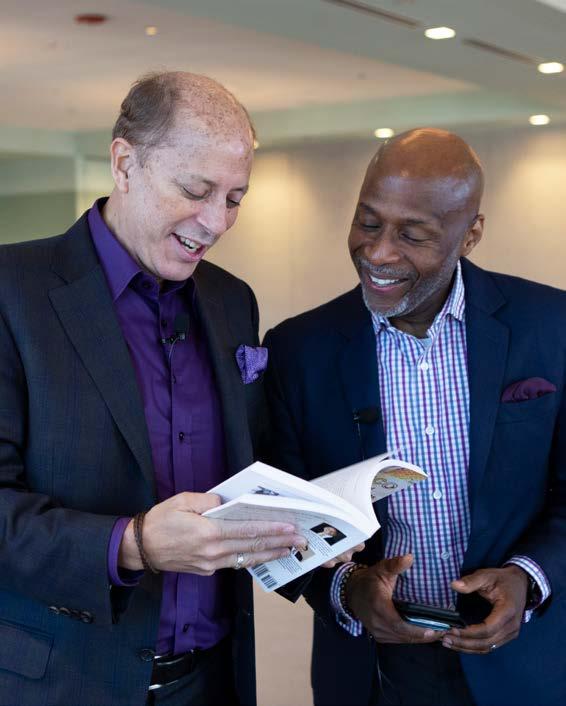
11:25AM
Session prep Andrés’ book with coauthor Dr. Robert Rodriguez, Auténtico: The Definitive Guide to Latino Career Success, was just released in its Spanish edition. Andrés and colleague Senior Client Partner Darryl Smith catch up and review the new version prior to an internal enablement luncheon. “Colleagues like Darryl make me better every day through their loving support, challenging questions, and applied smarts.”
12:19PM
D&I presentation
More than thirty Korn Ferry consultants gather for an internal lunch-and-learn, where Andrés and Darryl partner on enhancing the capabilities of their Korn Ferry client advisors.
The session focuses on skills for selling and delivering diversity and inclusion solutions while elevating their own ability to live by the D&I principles. “One of my favorite aspects of my work at Korn Ferry is the quality—in expertise and character—of my colleagues.”
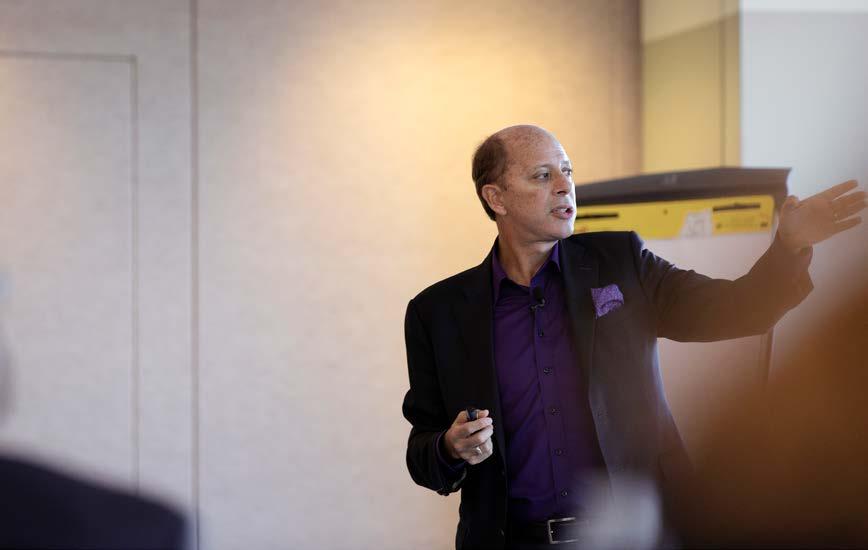


12:56PM
Group activity
Shifting from an approach for how best to serve clients, Andrés now leads the group in an exercise that turns their attention inward, identifying common and not-so-common experiences and challenges they all have in each of their own forms of diversity. They cross the “diversity line” if they meet the criteria Andrés has just read aloud. When participants look around and see the often surprisingly common as well as different experiences their coworkers have had, it is a powerful communal moment.
3:00PM
Mentoring session
In the Dark Matter café space of Willis Tower, Andrés has a coffee (decaf, as he’s already had two espressos today) with his Latina mentee, Maricruz Contreras, a rising Latina leader at Liberty Mutual.
“Without the many mentors in my life I would not have been able to achieve half the things I have been able to do. Having received, it’s essential—and joyful—to give back.”

3:36PM
Advisory call
Andrés holds an over-thephone client meeting in his office, where he provides strategic advice to a corporate client on their D&I initiatives. “Clients only benefit from our expertise if we have truly listened to and attuned our strategic and pragmatic responses to their deepest needs.”

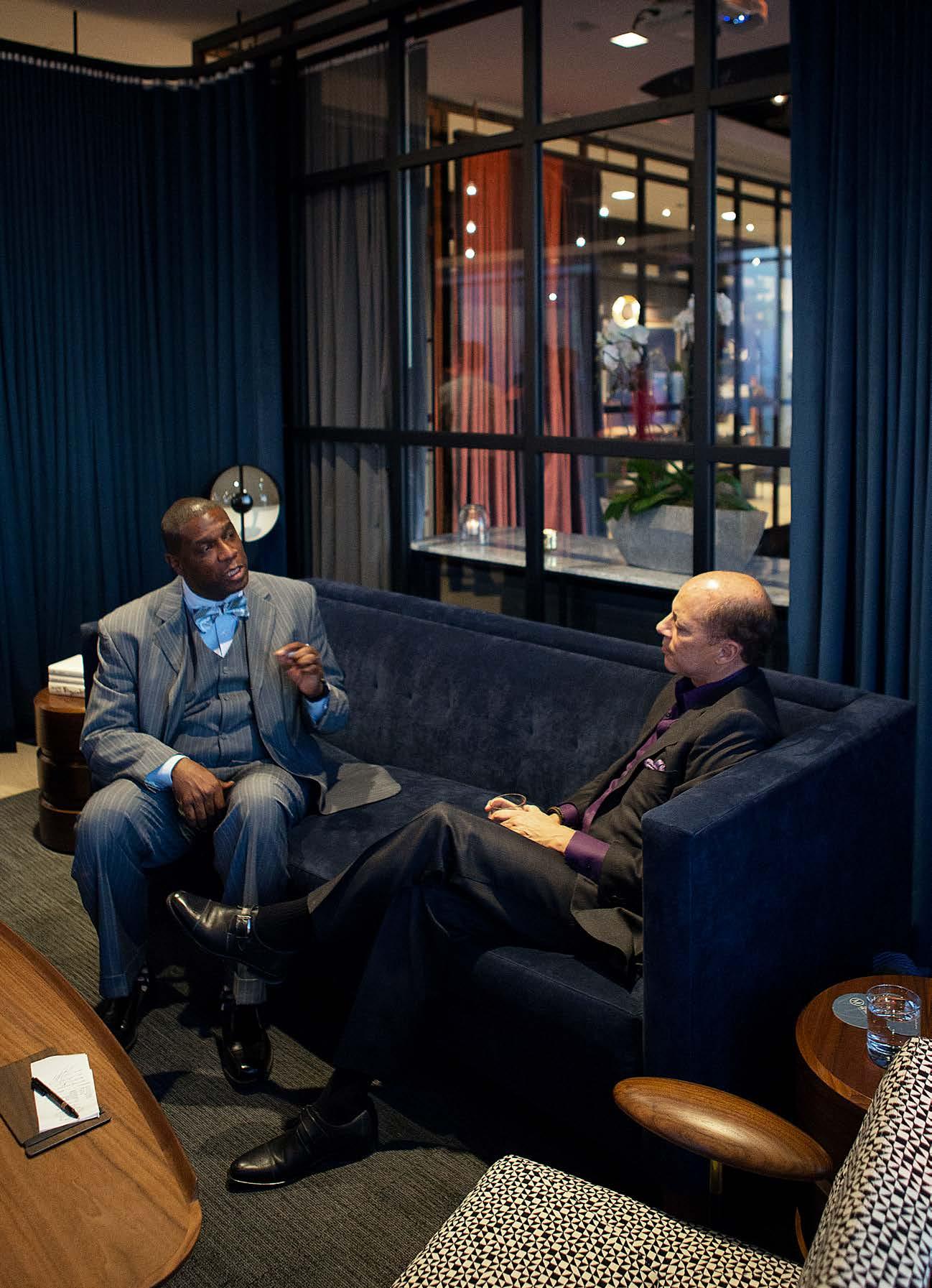
6:04PM
Onboarding a new colleague
At the Metropolitan Club bar on the 67th floor of Willis Tower, Andrés shares cocktails with Johné Battle, a newly hired Associate Client Partner at Korn Ferry, who is in town from Milwaukee and about to relocate to the company’s offices in Miami. The two discuss the keys to success at Korn Ferry and the joys of mission-driven client work. “New colleagues always bring zaps of innovative energy, given their differentiated experiences and backgrounds, that make us better.”
Featured Contributors
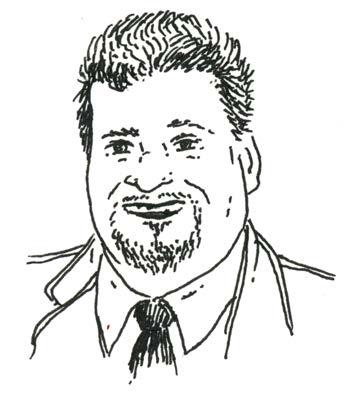
Ruben Navarrette is a syndicated columnist with The Washington Post Writers Group, author of A Darker Shade of Crimson: Odyssey of a Harvard Chicano, and host of the podcast Navarrette Nation. Read his new interview series, Conversations at the Top, on p. 58.
Magda Yrizarry serves as Verizon’s SVP and chief talent and diversity officer, and as the guest editor of our talent feature section (p. 70). Her work with unconscious bias training and ensuring Verizon’s workforce reflects the diversity of its customer base makes her a leader to watch—and emulate.
Andrés Tapia and Dr. Robert Rodriguez are authors of the 2017 book Auténtico: The Definitive Guide to Latino Career Success, described as “A Latino Executive Manifesto.” The book’s research included in-depth interviews with twenty highly successful Latino and Latina “Boomer” executives as well as focus groups with dozens of Generation X and millennial Latinx leaders. The content is so powerful, we are featuring it in this issue (p. 92). During Hispanic Heritage Month in 2018, the authors released the Spanish version of the book.
Creative
VP, Creative
Kevin Beauseigneur
Director, Creative Operations & Editorial
Cyndi Fecher
Director, Editorial
Kathy Kantorski
Editor
Jonas Weir
Digital Content Manager
Frannie Sprouls
Contributors
Olivia Castañeda, Kasey Cheydleur, Randall Colburn, Tricia Despres, Joseph Kay, Russ Klettke, Kelli Lawrence, Joan Livingston, Valerie Menard, Bridgett Novak, Jeff Silver, Alison Ver Halen
Director, Design & Photo
Caleb Fox
Senior Designer
Anna Jo Beck
Designer
Greer Mosher
Photo Editors & Staff Photographers
Cass Davis
Gillian Fry
Reprints
Reprinting of articles is prohibited without permission of Guerrero, LLC. For reprint information, contact Reprints & Circulation
Director Stacy Kraft at stacy@guerreromedia.com.
Corporate
CEO
Pedro A. Guerrero
Managing Vice President
Marc Jerbi
VP, Hispanic Division
Vianni Busquets
Senior Director, Finance
David Martinez
Director, Client Services
Cheyenne Eiswald
Senior Client Services Managers
Rebekah Pappas
Katie Richards
Client Services Manager
Skylar Garfield
Director, Talent Acquisition
Elyse Schultz
Director, HR & Operations
Megan Thorp
Executive Assistant to the CEO
Jaclyn Gaughan
Senior Directors, Sales
Ben Julia
Sarah Jameson
Director, Sales
Jane Haglund
Associate Director, Strategic Development
Kara Thomas
Director, Strategic Partnerships
Krista Horbenko
Director, Business Development
Jenny Vetokhin
Business Development Manager
Erin Malone
Strategic Account Manager
Taylor Les
Content & Advertising Managers
Hispanic Executive® is a registered trademark of Guerrero, LLC.
©2019 Guerrero, LLC. Industry Partners

Allyssa Bujdoso
Anissa Cristerna
Capri Cutchin
Cristina Ali
Ellen Aleksa
Katie Hartnett
Nicole Haas
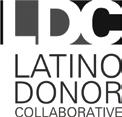
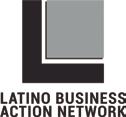
STRA TEGY Strategy
What is your secret to successful leadership?
The impressive executives featured here share theirs, and the strategies engage both the mind and the heart.
20
26
30
33
Peggy Turner, Toyota Motor North America
Matthew Soto, Ally Bank
Alejandro Castro, National Express
Mónica León Bernstein, Interstate Hotels & Resorts
Family First
BY JONAS WEIR
Peggy Turner relies on family values to thrive in her role at Toyota Motor North America as vice president of Lexus customer satisfaction and owner retention
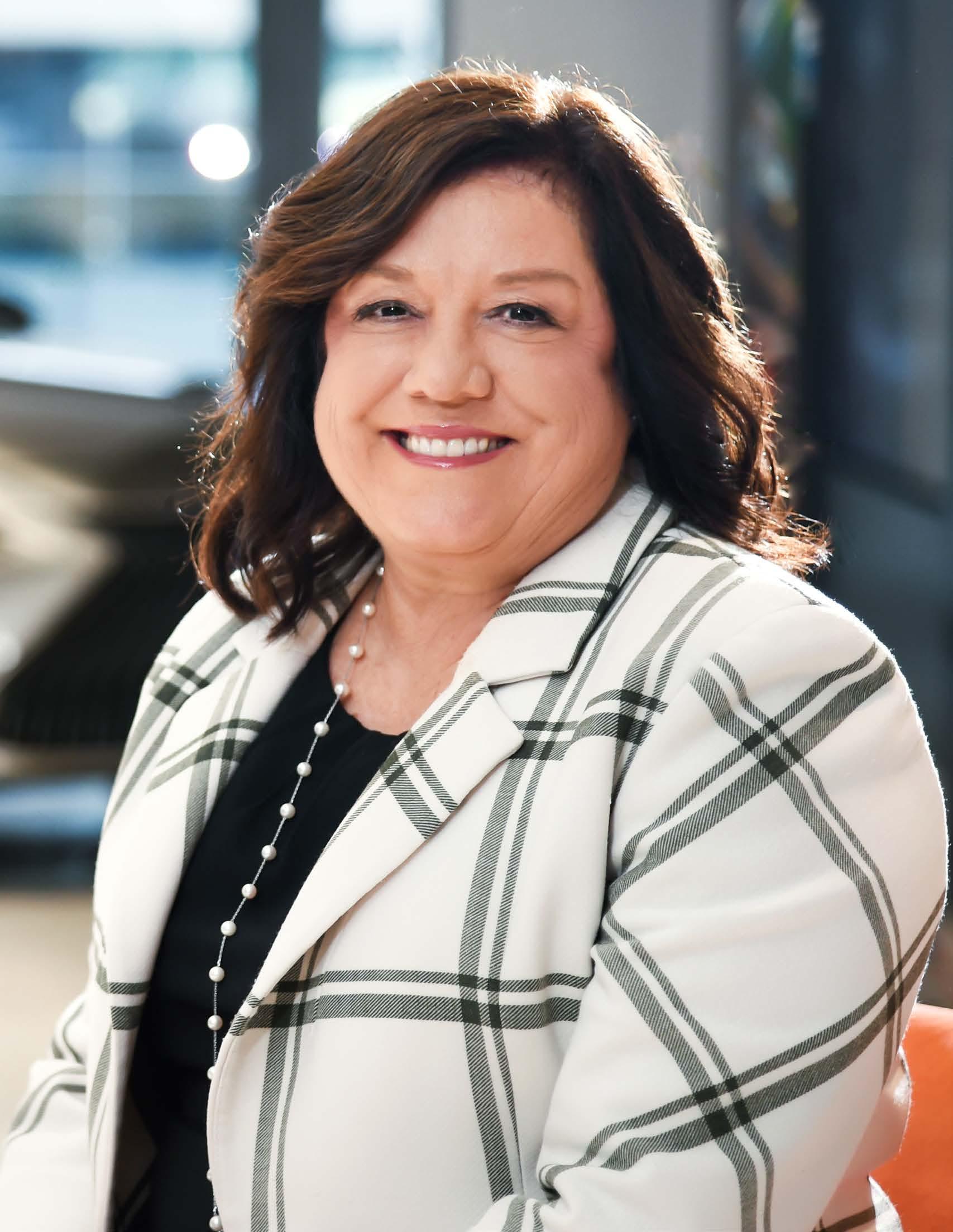
FAMILY HAS ALWAYS BEEN PEGGY TURNER’S NUMBER ONE PRIORITY. Her parents raised her that way, and her mother was a role model for striking a good work/life balance. Now, as vice president of Lexus customer satisfaction and owner retention at Toyota Motor North America, she sees that as an essential part of her success.
“If you don’t have your family in order, you’re not going to do as good of a job at work,” she says. “If you don’t have your job in order, you’re not going to do well with family. You must make choices to excel in both realms. You need to prioritize the things that are very important in your family and what is very important for work compared to what can be delegated.”
Luckily, Toyota is just the kind of supportive environment that ensures Turner can thrive both at work and at home. She points to one instance in particular where the company supported her while she tried to maintain that balance.
Years ago, Toyota did not have flexible hours. The company, she says, primarily stuck to an 8 a.m. to 4 p.m. schedule. However, she was able to negotiate coming in a half hour earlier to also leave a half hour earlier. That way, she could coach her son’s soccer team. When the president of the company scheduled a meeting with her from 4 p.m. to 5 p.m. on soccer practice day, though, she didn’t know what to do.
“I was so frightened that that was going to send the wrong message,” she says. “But the president actually said, ‘I’m so grateful to people that are managing to do those things outside of work.’ At 4:25 p.m. he said, ‘Let’s end this meeting. Great job.’”
Today, Turner says that the company’s policies surrounding flexible staffing and supporting work/life have continued to evolve. As she leads the customer experience team for Lexus, she extends that support to her own team. In fact, she says that 50 percent of her organization has alternative work schedules.
To that end, Turner’s emphasis on family informs the way she approaches ensuring a positive customer experience.
“We often use the term ‘Lexus Family,’” she says. “We don’t even call customers ‘customers,’ we call them guests in our home. Our Lexus Family includes our team members, our dealers, and our guests.”
Turner says that her team is the voice of their “guests.” Lexus wants to ensure a positive guest experience throughout the entire purchasing journey, from the time customers begin looking to the day they buy a vehicle. That experience continues with Lexus servicing their vehicle and with future vehicle purchases.
To accomplish that goal, Turner and her team develop relationship marketing programs and loyalty programs that are personalized and specific to guests, including a variety of communication methods from email and phone to social media.
To help her team thrive, she tries to instill values that will help them succeed in not only meeting guest expectations but also exceed-
“We often use the term ‘Lexus Family.’ We don’t even call customers ‘customers,’ we call them guests in our home.”
ing those expectations so they’re beyond satisfied. Empathy is an important quality, and she encourages the entire team to celebrate when they surprise and delight guests.
“Our social media team was on YouTube, and they noticed that there was a video of a toddler who had 60,000 hits. In the video, the boy’s father was showing him pictures of vehicles, and the little boy, who was just learning how to speak, was naming every brand correctly, including Lexus,” she says. “We wanted to surprise and delight him. We don’t even know if they own a Lexus, but we sent him a remote-controlled Lexus car, and the satisfaction we got out of seeing the YouTube video of him receiving the Lexus remote-controlled car was very rewarding.”
In addition, she says that trust and empowerment are two principles that are essential to her leadership style. Empowerment means that team members don’t have to go to their supervisor for permission
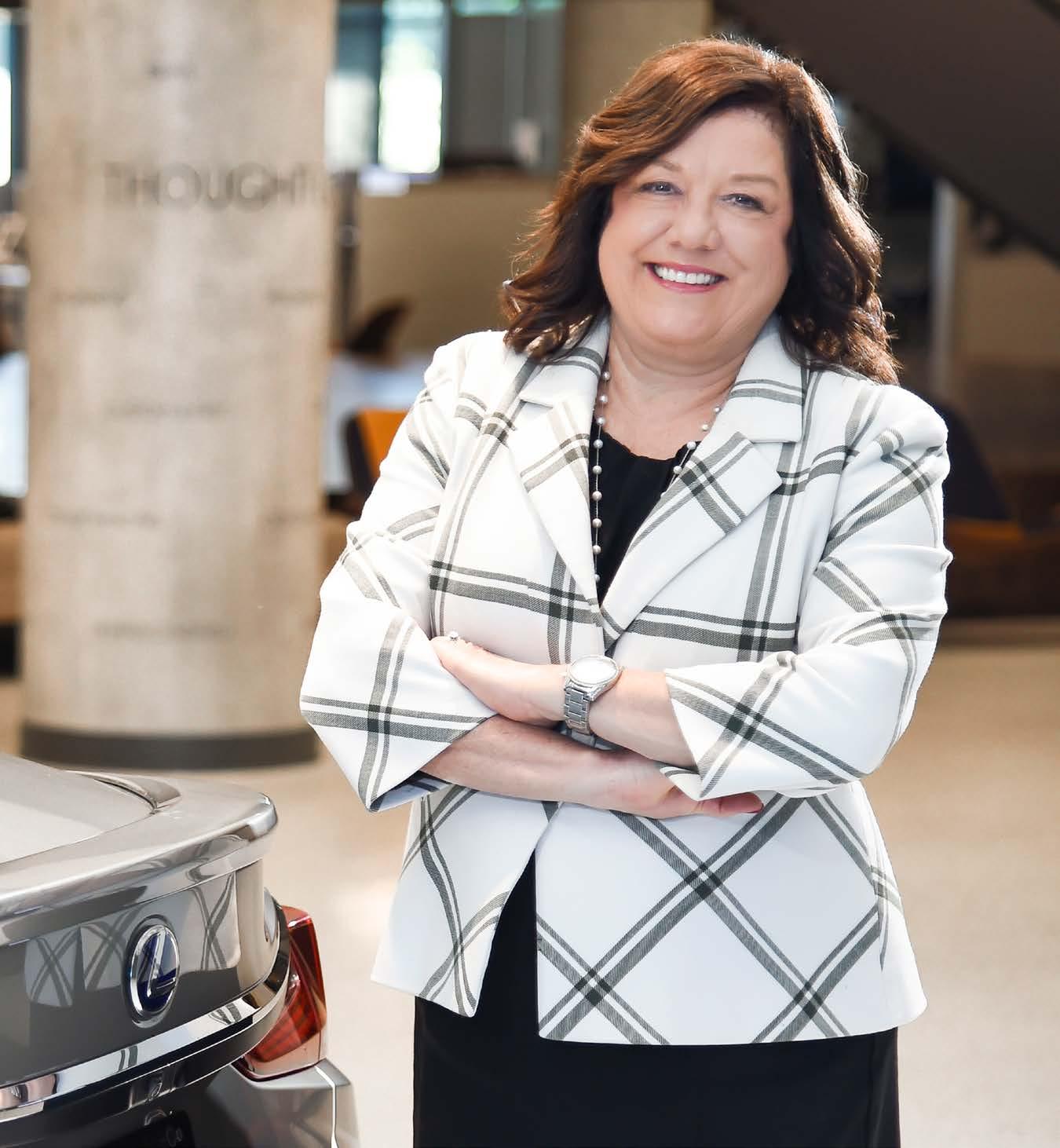
Peggy Turner | VP of

OUTREACH & OPPORTUNITIES
Peggy Turner is not only highly engaged at work, she also has her feet firmly planted in her community.
She’s an active member of the company’s Latino business partnering group, Toyota’s Organization for the Development of Latinos (TODOS), which focuses on recruiting, developing, educating, and engaging Hispanic team members. As a former TODOS executive sponsor, she was involved in mentoring, coaching, and sponsoring team members and continues that work today.
As a board member at the nonprofit In Roads, Turner helps high school and college students find meaningful internships through their programs by leveraging her networks.
Her work at Lexus also touches on innovative ways to provide an experience that’s unique to the changing customer demographic.
“As women, millennials, and the multicultural population increase in purchasing power, we want to ensure we are their brand of choice and meet their ever-changing expectations,” she says. “It’s about understanding the new and emerging demographics, building relationships, and engaging and communicating with guests on their terms. It is our core value of respect for people. We call this the Lexus Difference.”
to satisfy customers; she makes sure they have the tools to do so. To get there, though, she has to be able to trust her team. So, when hiring, she makes sure each team member has a guest-focused, positive mentality. She describes that mind-set with the Japanese word omotenashi.
“Omotenashi is a form of hospitality, but it’s more than just being at a restaurant or being at a hotel; it’s about really making that guest feel at home,” Turner says. “We train very hard on omotenashi. We train on knowing how to assess needs quickly and how to develop a rapport and a relationship with guests.”
In continuing to extend that warm hospitality to Lexus guests, Turner is trying to make sure that Lexus’s culture reflects many new markets, such as millennials, women, and multicultural communities. That translates to educating dealers on what these customers expect.
For example, women and millennials tend to not enjoy negotiating. So, some Lexus dealers have introduced no-haggle, upfront pricing. Additionally, she says that women are sensory and pay attention to details, so one example of what the company has done is develop a Lexus Luxury Scent to make the dealership experience more like a resort experience. All of that is extremely important because, Turner says, women are involved with 50 percent of vehicle purchases and influence more than 80 percent of vehicle purchases.
Turner says that incorporating a diverse array of people to enhance guest satisfaction is not just something that the company focuses on for its customers; it’s also a priority for Toyota’s internal culture. To her, that’s what has made her storied career at the company so fulfilling.
“I’ve been with this company for twenty-seven years, and I’ve seen it grow so much,” she says. “I really want to stress how fortunate I am to work for a company that respects and appreciates diversity and inclusion. There are opportunities for so many people here.”

Lexus is proud to have Peggy Turner, VP of Lexus Customer Satisfaction & Owner Retention featured in Hispanic Executive for her veracity and leadership. Her drive and devotion to continuously improve our service and vehicles are part of the reason why our Lexus brand is #1 among Hispanics.

Disrupting the Banking Industry
BY RANDALL COLBURN
Ally Bank’s app and online interface make banking an entirely digital experience. As the industry catches up to it, Matthew Soto leads his team of innovators in staying ahead of the curve.
SHORTLY AFTER MATTHEW SOTO SIGNED UP for an account with Ally Bank in 2008, he got cold feet. A completely online operation, the company had no branches or branded ATMs, a feature that initially appealed to Soto. The weight of the era’s financial crisis, however, was enough to send him back to the traditional world of brick-and-mortar personal banking. Back then, at least, it felt safer.
Eight years later, Soto, an IT and operations expert, began working with SunTrust Banks, an American bank holding company. There, he heard more and more conversations about the reduction of physical banking locations, causing his mind to wander back to Ally’s model. “I started putting the pieces together,” he says. “Traditional banking, especially with millennials and their growth in the marketplace, is going the way of the telephone and CD player. Also, I couldn’t have told you the last time I stepped foot into a branch.”
As fate would have it, Ally came knocking the following year. An executive recruiter with the company reached out, and Soto not only found an organization that, with its digital services and suite of products, was disrupting the banking industry, but also one in the midst of a major evolution itself. Now, as Ally’s executive director of infrastructure operations, Soto is working to help
“My passion comes from challenging people to stretch themselves and watching them succeed.”
the company achieve a new equilibrium after years of outsourcing while also developing more robust operations.
“Matthew is definitely a change agent focused on meeting the needs of the business and applications at Ally,” says Jeff Worswick, senior client director at Data Blue. “Through his experience, he has been able to garner the support of his team, peers, and executives for the betterment of Ally—not only to support the legacy environment but also to help Ally leverage new transformational technology.”
For Soto, the challenge is also part of the appeal. “We’re not a Bank of America or Wells Fargo, you know? We don’t have a huge
war chest and or massive amounts of individuals to throw at problems,” he says. “We have to be very selective about the opportunities that we go after, and we have to do it fairly quickly to keep our competitive advantage.”
Soto says his first goal in his new role was to address the company culture. “That highly outsourced mentality still existed,” he says. The result, he says, was a lack of accountability and clarity throughout the organization. First and foremost, Soto worked to ensure that every employee knew exactly what they were doing and why they were there.
“We’re not here to turn a wrench. We’re not here to install an operating system,” he says. “We’re here to drive an underlying
core set of technologies that enables Ally to disrupt the industry and to bring the best service offerings to our customers.”
Getting everyone on the same page requires transparency, a key component of Soto’s leadership style. It also requires an appetite for change, which can be tough to foster in a workforce that is still wrapping its minds around the future. Trust must be cultivated, so Soto’s communications with employees made his role clearer and also provided a straightforward dive into Ally’s financial outlook. “It’s about getting them to see me as a human and to help them understand that their voice matters,” he says. “To challenge the status quo here, they have to have as much transparency with me and their peers as I’m having with them.”
It’s here that Soto excels. It’s also the space where he’s able to fully indulge in his passion for leadership and employee development. “I take immense joy in watching individuals transform themselves,” he says. “I want to help them understand that they have much greater capabilities that they realize. My passion comes from challenging people to stretch themselves and watching them succeed.”
Soto cites the chief information officer of United Technologies, where he worked in the late 2000s, as a key influence on the development of his leadership style. “He showed me the value of a positive ethos,” he says. “In situations, positive or negative, he could
“To challenge the status quo here, employees have to have as much transparency with me and their peers as I’m having with them.”
rally people around himself and the goal of the organization. That came from his ability to connect with people as much as it came from the ways in which he could articulate a problem, a goal, or a journey. That really was something I grasped onto, and I try to emulate that every day in my career.”
Now, Soto is drawing upon those lessons as he guides Ally into a future—a future that finds the organization adopting the unification of software development and operations in addition to a more public-private cloud posture. Already, he’s seen great gains in service delivery. In fact, the company reduced its mean time for repairs from roughly 400 minutes per incident to less than sixty minutes on priority-one incidents. He’s also introduced network analytics to the organization, which help to better identify trends and patterns.
“For me, it’s great,” he says. “Here, I had an opportunity leave my thumbprint on an organization that started in a really difficult time for the industry but has, nonetheless, developed into a disrupter that’s growing across the board.”
Still, he notes that Ally is just beginning its automation journey. He hopes to have 30 percent of Ally’s incidents automated by year’s end, and he also says that several artificial intelligence proofs of concept are on the docket for 2019.
“We’re going to continue to be as disruptive as possible,” Soto says.
D
R I V I N G
I N N O V A T I O N ,
T
R A N S F O R M I N G
T
E C H N O L O G Y

A t D a t a B l u e w e s t r i v e t o t r a n s f o r m t h e w a y y o u v i e w t e c h n o l o g y . W e p a r t n e r w i t h t h e
w o r l d ’ s m o s t a d m i r e d b r a n d s t o a c c e l e r a t e i n n o v a t i o n a n d i m p r o v e o p e r a t i o n s . W e
a c h i e v e t h i s b y h e l p i n g o u r c u s t o m e r s a d o p t n e w a n d u n c o n v e n t i o n a l a p p r o a c h e s t o
t e c h n o l o g y d e l i v e r y a n d p r o c e s s . O u r s o l u t i o n s e m p o w e r o u r c u s t o m e r s t o b u i l d , s h i p ,
a n d r u n e n t e r p r i s e t e c h n o l o g y f a s t e r a n d l e a n e r w i t h s u p e r i o r r e s u l t s .


d a t a - b l u e . c o m 8 6 6 . 5 7 7 . 2 9 0 2

National Express prides
itself on its people, from customers to employees.
With every new acquisition, and there have been many, CFO Alejandro Castro asks himself: Is this benefitting both the company and the community?
BY RANDALL COLBURN
NATIONAL EXPRESS LIVES BY ITS VALUES: safety, people, customer, community, and excellence. Each is an equal part of what makes the global transportation company successful, but, for Alejandro Castro, they’re also what makes it so special.
Castro serves as chief financial officer of National Express’s North American division, where he oversees issues of capital, treasury, acquisitions, and more. He’s especially handy when it comes to the company’s mergers and acquisitions; his diverse career, which has taken him from his native Mexico City to the United States, has routinely found him knee-deep in complex deals. He helped shepherd a number of National Express’s transactions since joining the company, which has inked a whopping twenty-five acquisitions in the past four years. All of them, he says, serve to elevate and better illustrate National Express’s commitment to its core values.
“More than most, our business is a people business,” he says, referring to the fleet of
24,000 buses that National Express oversees. These buses ferry more than one million students, from kindergarteners to high-school seniors, to more than 500 school districts throughout 35 US states and three Canadian provinces every day. Roughly 250 customer service centers are spread across North America, ensuring safe travel and up-to-date maintenance every hour of the day.
For Castro, the job has personal resonance with his heritage. “Coming to National Express, I’ve really been able to align my experience in both transportation and finance with my passion for education,” he says. “Latinos have a proud commitment to education, to ensure that the next generation can successfully pursue the American dream.”
So, just as National Express is committed to the safety of its riders, Castro and his team are equally devoted to building a team that’s held to the highest standards of quality and safety. “We work hard to recruit, train, and develop the best possible people
to accomplish our mission, which is to get students to school safely, on time, and ready to learn.”
That means the company’s acquisitions are chosen with its values in mind. It begins, of course, with strategy. As Castro outlines, National Express has a sharp eye for the areas in which it needs to grow, and it has identified the markets in which to focus. The goal, then, is to find a local player who can not only benefit National Express, but also thrive under the company’s umbrella. If the culture of a company doesn’t have a strong focus on safety, for example, Castro asserts that the company will not touch it.
It’s the idea of tapping into a local community, however, that remains especially important for Castro and National Express. He emphasizes several times the value of community, and how much the company strives to have a positive influence on each of the communities it inhabits. “We have a focus on safety and people,” he says, “which

Alejandro Castro CFO North America National Express

THE SYMBIOTIC NATURE OF MENTORSHIP
Castro doesn’t hesitate to emphasize his passion for mentorship. He’s had several of his own mentors throughout his career, including a Latino mentor that helped Castro navigate his transition from Mexico to the United States. “Mentorship has been instrumental for me in my development,” he says, noting that his own experiences have prompted him to seek out mentees of his own.
Right now, he’s currently working with two budding professionals, one of whom he works with at National Express and another who just graduated from Northwestern University. Their meetings, he says, are informal and distinguished by deep conversation and a sharing of perspectives.
“We learn from each other,” he says. “I can tell you, I always learn from the people that I’m mentoring. Probably more than they can from me.”
“We have a focus on safety and people, which means we focus on the local community where we do business.”
means we focus on the local community where we do business.”
The integration of that company, then, is handled with a great amount of care. Of utmost importance to Castro, he says, is the preservation of an acquisition’s culture and relationship to its community.
“We don’t want them to lose that connection that makes them a family,” he says. “The key to National Express is in how we connect with communities, so we need to make sure that the companies we’re buying keep doing what they’ve always been doing.”
That said, these acquisitions still need to adapt to the company’s best practices, and Castro says that it can be tough to maintain this balance between individuality and compliance. “For a company to get used to the corporate environment—to the controls we’ve put in place and new operating metrics—can be a challenge for them.”
He says National Express works to make the transition smooth by engaging directly with the company very early on in the process. That means strategically timed town-hall meetings and employee communications, as well as transparent breakdowns of both the integration process and its planned timeframe. It also helps that National Express is equipped with state-of-the-art technology, which can serve as a huge boon to many of its smaller acquisitions.
This approach has proven effective. Castro explains that, in its history, National Express’s team has shown a deep commitment to the company, with many employees rising in the ranks from driver or mechanic to manager. This is important for him. As a Latino in a company that serves a number of Latino neighborhoods, Castro says that he and the company are committed to culling and cultivating talent directly from the very communities it serves.
“We want to provide them—our customers, employees, and communities—with everything they need to be their best,” he says.
Inspired by her peers in the hospitality industry, Mónica León Bernstein relies on her legal expertise to make sound, fast decisions that impact Interstate Hotels & Resorts
The Hospitality Mentality
BY JOAN LIVINGSTON
MÓNICA LEÓN BERNSTEIN’S LEADERSHIP style is continually evolving. As she understands more about herself, she also learns what works best for the people she oversees at Interstate Hotels & Resorts. As an in-house counsel in the hospitality industry, she’s learned that trust plays a big role.
“I’m a leader who trusts our team,” Bernstein says. “Each person on our team has a great deal of responsibility in their respective areas, and they really take ownership of them. That is key to our success at Interstate, especially in such a leanly staffed but fastpaced environment.”
That environment, she says, doesn’t allow for the luxury of micromanaging, so Bernstein’s approach to leadership is to ensure the legal department has the training it needs. She spends a significant amount of time with her team, especially in the initial weeks when she carefully oversees their roles, responsi-
bilities, and expectations. It’s an investment that pays off.
“We’re constantly having to multitask and address numerous issues at once,” she says. “I believe our most valuable and scarcest resource is time. The challenge, ultimately, is looking at how to be diligent and thorough in your guidance while still remaining swift and nimble. That way, you can jump from one matter to the next—because you’re going to have to.”
As vice president of legal, she oversees the agreements Interstate Hotels & Resorts has with the hotels it manages, which amount to hundreds. Interstate, she says, is the global leader in third-party hotel management with a portfolio of 540 properties in eleven countries, including some under construction or with plans to be built.
To thrive in this role, Bernstein says she has to be a generalist who handles litigation and legal areas that involve employees.
“I believe our most valuable and scarcest resource is time. The challenge, ultimately, is looking at how to be diligent and thorough in your guidance while still remaining swift and nimble.”
Mónica León Bernstein VP of Legal Interstate Hotels & Resorts

Bernstein says her biggest leadership influence has been her Cuban family’s story of survival in the 1960s. Her parents made sure she got a solid education at an all-girls Catholic school, Our Lady of Lourdes Academy in Miami, Florida. She then graduated from Duke University, where she was challenged academically, before earning a law degree at George Washington University. Her first job was an associate at Williams & Connolly LLP, where she spent six years and says she learned how to be a good lawyer.
Bernstein has now been at Interstate for five years, and she says one of her main attractions to the job was the opportunity to learn about a new industry. When she joined the company, she did not have a background in hospitality. “Really, my peers in this industry are hospitable,” she says. “They are here to serve our guests. I think this sort of mentality not only spreads to the hotels but to the corporate offices as well.”
From day one, her work at Interstate’s headquarters in Arlington, Virginia, has been challenging as she transitioned from a law-firm environment to an in-house role, where decisions that impact the company are typically made in real time. There isn’t time for extensive research and consultations, so she relies on her legal background, experience, and talented team.
Interstate also has long-term relationships with law-firm partners, which is critical for coverage.
Bernstein has found working in a fastpaced environment to be rewarding—and exciting—because she sees the results quickly. “The more comfortable you become with that, the more fun it becomes,” she says.
Throughout her career, Bernstein has refined her approach to leadership with the help inspiring mentors, such as Erica Hageman, who became Interstate’s general counsel in 2015. “She expects excellence from us,” Bernstein says. “She helps each of us prepare for the next level in our careers.”

Like many who grew up in Miami’s Cuban exile community, Mónica Léon Bernstein has stories to share about her family.
Her father was eight years old when he accompanied his nine-year-old sister to the United States via Operación Pedro Pan—a program that provided air transportation to the United States for Cuban children from 1960 to 1962. When they arrived in the United States, they stayed with relatives until their parents could emigrate four years later.
Her mother was also a child when her family fled to Spain. The family was so impoverished that her father knocked on a convent’s door for help. Fortunately, a young nun took them under her wing until relatives could help finance the family’s move to the United States years later. The story came full circle thirty years later, when Bernstein, then a student in Madrid, reconnected with the very same nun, who was then the convent’s mother superior.
“The way they came here—the struggles they had to go through—definitely impacted my life,” Bernstein says.
She also recalls how her paternal grandmother carried a red umbrella when she brought her two young children to the airport. She told them to look for the umbrella from their seat on the plane.
“Sure enough, as the plane was taking off, my grandmother was on the ground opening and closing this red umbrella,” Bernstein says. “When I became a mom, it took on a whole new meaning.”
OPERACIÓN PEDRO PAN & THE RED UMBRELLA
Sobre su Familia




Hageman’s support was essential during Bernstein’s transition to becoming a working mother, and Bernstein likes to extend similar support to her team and other up-and-coming legal professionals. To that end, Bernstein keeps in touch with paralegals who have gone on to law school or attorneys she knew at the start of their careers. Bernstein, however, doesn’t just help those building a legal career.
This past year, she volunteered at one of the Tahirih Justice Center’s clinics that help immigrant mothers and their children who are seeking asylum. During her first experience at the clinic, she assisted a young girl with her asylum application. Being able to communicate in Spanish was a plus.

“Just hearing about the experiences that she had to endure at such a young age was heartbreaking,” she says. “It was an emotionally challenging day, but it’s nothing compared to what these people have had to sacrifice and endure.”
This eye-opening experience has inspired her to be more involved in the immigrant community. It reminded her of her family’s experiences immigrating to the United States, which ultimately inspires her to be a better leader every day.
MIS SION Mission
When one’s work makes an impact in the community, it transcends employment and becomes a calling. These executives have answered their call.
38 Veronica Gonzales, University of Texas Rio Grande Valley
43 Rosie Perez, Providence St. Joseph Health
46 Miguel Centeno, Aetna 50 Mariely Bandas-Franzetti, Dell 54 Luis Ayala, Children’s Hospital of Los Angeles
Shrinking Regional Poverty with Education
BY RUSS KLETTKE
Veronica Gonzales was the first in her family to go to college. The former Texas state lawmaker now helps thousands of others become empowered by education in the Rio Grande Valley.
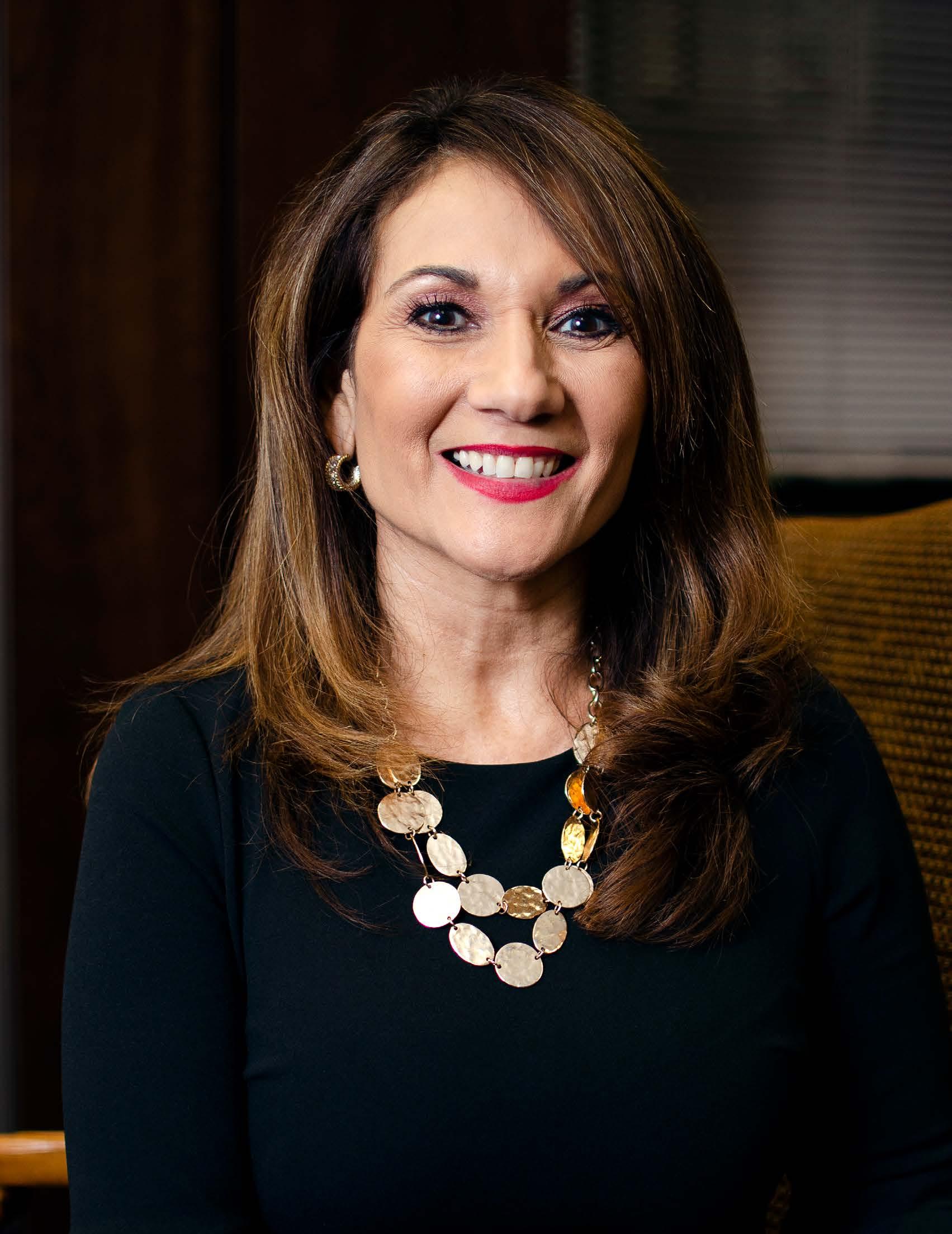
Veronica Gonzales VP of Government and Community Relations
University of Texas Rio Grande Valley
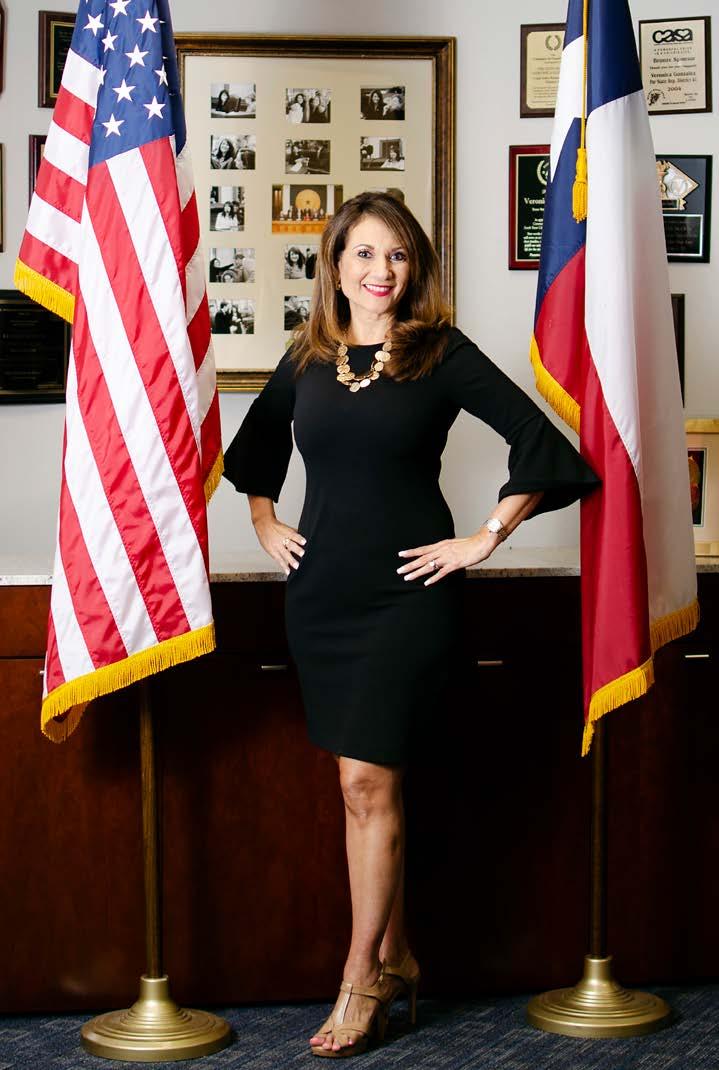
ANYONE
WHO QUESTIONS HOW UNIVERSITIES ARE BENEFICIAL TO their local communities needs to spend time with Veronica Gonzales. The former Texas state lawmaker now plays a big role in higher education in South Texas by overseeing programs that uplift both students and their communities.
Gonzales is the vice president of government and community relations for the University of Texas Rio Grande Valley (UTRGV). In this role, she works with legislators and other government officials on the local, state, and national levels to optimize the resources available to the school. She also takes a lead role with outreach programs, including community hubs that connect academic departments and students with community needs.
Those needs include local economic development and healthcare services. “Services are tailored to the particular community,” Gonzales says. In addition to its largest campus in Edinburg, the university and its medical school have campuses in Brownsville, McAllen, Harlingen, Rio Grande City, and South Padre Island. Based on needs assessments for the communities that house these hub sites, services include providing financial literacy, assistance in applying to college, and guidance for applying for financial aid. In fact, the UTRGV School of Medicine even sets up mobile and stationary medical clinics in these communities.
The school’s Office of Community Engagement and Economic Development also provides a Nonprofit Resource Center and an Engagement Zone, which is an online portal that connects students with volunteer engagements.
To fully understand how important each of these initiatives are to both the students and the area communities, it helps to understand the region that UTRGV serves. The population of the four counties that make up the region is roughly 90 percent Hispanic, and although the region was once primarily agricultural, it is now much more urbanized; the education, government, and healthcare industries employ much of the population.
Additionally, slightly more than half (54.8 percent, as of 2018) of Rio Grande Valley residents live below the poverty line. But that number is shrinking with recent economic developments.
Characteristic of the valley, which is in actuality a floodplain, are settlements referred to as colonias . These are unincorporated areas with substandard housing that often lack potable water, paved roads, and proper drainage. “The resource centers where students and faculty provide services are primarily for colonia residents,” Gonzales explains. “In an area like the Rio Grande Valley—where there is a very high need for access to healthcare and education and where many speak English as a second language—our students and faculty are able to make a significant impact.”
In a job such as this, someone with Gonzales’s legislative background is ideal for the task. She was also a practicing attorney for more than twenty years, and she never forgot where she came from.
“I was a first-generation college student, so entering into the university was somewhat intimidating for me at the beginning,” says Gonzales, who graduated from Texas State University and the University of Texas at Austin School of Law. “I very much remember the struggle of paying for tuition and an apartment and having to juggle work and school.”
When looking at higher education, Gonzales believes in the practice of what she calls “intrusive advisement,” which means having a community of professors and administrators that care about students and want to help them succeed. “We advocate for students to study abroad, to conduct research, and to engage in community service, among other opportunities,” Gonzales explains.
To be clear, this is not a feel-good-and-just-be-happy-with-adegree philosophy. UTRGV performs . BestColleges.com ranked the university fourth on its list of four-year colleges in Texas. In 2018, the school’s chess team won the prestigious national President’s Cup—the same year that three UTRGV undergraduate business students bested five hundred other teams from thirty-seven countries to win the CME Group Trading Challenge, a four-week electronic futures trading competition.
With students largely coming from low-income families, they often have few role models of academic achievement in their midst. In fact, more than half (52.8 percent) of students receive Pell Grants, and 68 percent receive some form of financial aid. Many come from

EMPATÍA Y NEGOCIOS
Veronica Gonzales understands both needs and opportunities.
Her father had muscular dystrophy, and as a legislator, she saw how Easterseals—a nonprofit that provides disability services— helps many people in her community.
“I realized that the disease impacts not only the individual but the entire family,” she says.
Today, she is the incoming president of Easterseals Rio Grande Valley, and UTRGV provides services through the organization, as well.
Her work with Easterseals, however, is not her only way of giving back. With colleagues at UTRGV, Gonzales helped to establish Vaqueros Vote, a nonpartisan group that promotes voting and democratic engagement. She also serves on the board of a similar organization, the Advocacy Alliance Center of Texas, and she serves on several economic development boards and councils.
“We must lead by example,” she says.





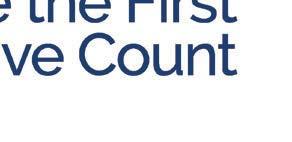

Easterseals RGV


Board President, Veronica Gonzales knows the importance of giving young children access to quality early intervention services so they can have a good start in life and the opportunity to grow, learn, and succeed.





Easterseals RGV provides early learning programs through: Early Childhood Intervention, Parents as Teacher, Home Instruction for Parents of Pre-school youngsters (HIPPY) and inclusive childcare. easterseals-rgv.org
“In an area like the Rio Grande Valley— where there is a very high need for access to healthcare and education— our students and faculty are able to make a significant impact.”
one-car families, and UTRGV is still largely a commuter campus. Some students even cross the US-Mexico border to come to classes.
With those facts in mind, Gonzales champions incentives for all UTRGV students to minimize their costs and post-college debts. Tuition caps off at twelve credit hours in a semester, allowing students to take fifteen or eighteen credit hours at no additional cost and graduate early. Gonzales says that students who participate in an early-college high school program or dual-credit courses are able to earn college credits while in high school, saving both time and their families’
money when they do go to college.
Some students also benefit from Gonzales’s background when they participate in the school’s Legislative Internship Program. Working in their respective districts and at the Texas State Capitol in Austin, students in the program get an experience she didn’t have until she was an elected representative. “After participating in this program, students are much more interested in government,” she says. “Some even want to pursue public office themselves.”
And why wouldn’t they, given the role model they have right there guiding them on that path?
Rosie Perez leads the charge to keep God in the medical profession at Providence St. Joseph Health
Spirituality in the Hospital Room
BY TRICIA DESPRES
GROWING UP IN A WORKING-CLASS FAMILY
in Houston, Rosie Perez remembers the days in which her family would pack in the car and head to the public health clinic for their medical needs. Once there, they would wait in long lines of people who were just like them—people who might have not had medical insurance or any other way to have their medical needs met.
But then, out of the corner of her eye, she would see the nurses.
“The nurses were like angels to me,” Perez recalls. “They seemed so elegant and compassionate, and I was in awe of how willing they were to help others.”
For Perez, it was a crucial moment that cemented her hopes of devoting her life to the nursing profession. Today, as senior vice president of mission integration at Providence St. Joseph Health, Perez’s passion for helping others continues to grow by leaps and bounds with each passing day.
“No matter what is happening in the world today, people still need to be cared for, especially those who are poor and vulnerable,” Perez says. “Making the decision to become a nurse was my best decision ever.”
Her nursing career took off when she began work as a flight nurse. “Rushing to a scene to help people suffering a trauma was something I was drawn to,” she says.
Yet, a helicopter crash at a neighboring hospital led Perez to ultimately keep her feet on the ground, and she instead shifted her focus toward the intensive care unit. “The adrenaline of a code blue is something that cannot be explained,” Perez says. “Not only did I enjoy working as part of a team to save a life, but I also felt compassion for the family that was in the waiting room, anxious for news. I would be the one sitting there holding their hands.”
In that moment, Perez began to consider a career that would allow her to more fully
provide spiritual comfort. She would go on to do just that, working as a community-health nurse and routinely catering to underserved communities with not only healthcare services, but information to help people make better health decisions for themselves.
Eventually, she would take on her current role as a mission leader at Providence St. Joseph Health. “It’s not only about understanding the complexities of healthcare as an industry, but the unique theological, moral, and spiritual expectations placed on a Catholic health system and what those look like in day-to-day operations,” says Perez, who is one of 119,000 compassionate caregivers who serve patients and communities in seven states. “I love being able to be a light of hope in the community.”
Of course, as the healthcare landscape grows more complex, Perez says she has faced her challenges, both personally and professionally. “I do struggle,” she admits. “We have a lot of challenges in healthcare, and I often get concerned whether we have enough capacity to continue to react and respond to the needs of our community, especially because our mission statement calls us to be steadfast in serving the poor and the vulnerable.”
She also often wonders how healthcare will evolve in the future based on the changing needs of patients. “We all need to think differently about how we do the work going forward,” she says. “We need to think more about care within the home and how we will provide mission- and spiritual-based services in different settings outside the hospital. That piece of care outside the hospital walls will become crucial in the years to come.”
As that landscape changes, she would like to encourage more people from the Hispanic community to work in the healthcare industry. “I will go to healthcare conferences and look around the room, and there might be a handful of Hispanics,” she says. “We gravitate to each other. I hope that, in the coming years, more Hispanics find a way into this
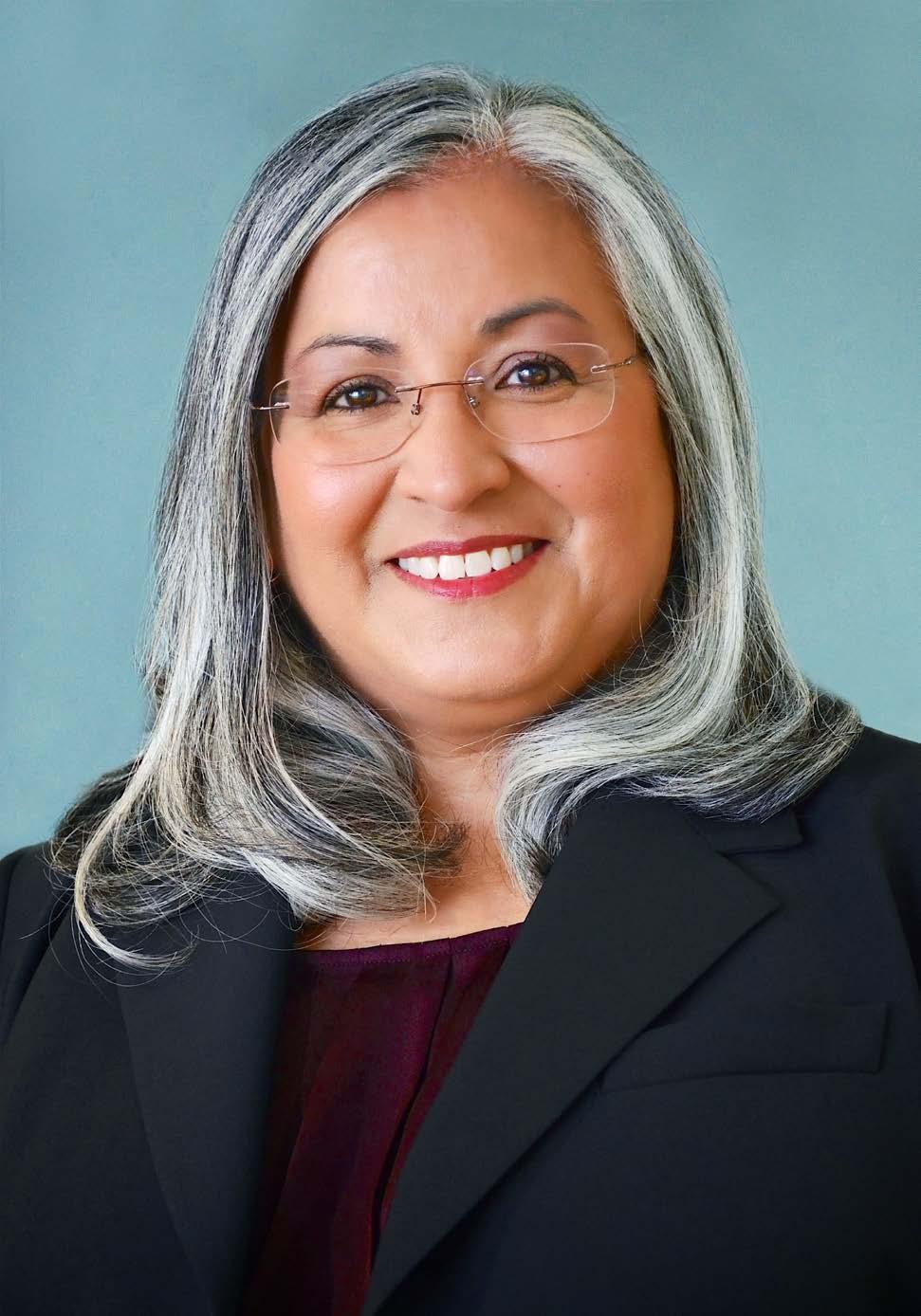
ROSIE PEREZ SVP Mission Integration
Providence
St. Joseph Health
“It’s not only about understanding the complexities of healthcare as an industry, but the unique theological, moral, and spiritual expectations placed on a Catholic health system.”
field. We really need to allow young talent to shine and have representation from the communities we serve.”
While the future often brings a share of uncertainty, Perez says she finds comfort in her faith. “I have always grounded myself in my faith because it provides me hope during life’s struggles and allows me to speak with a courageous voice in challenging times,” she explains. “I am a Catholic at my core, so I often step back and think from that perspective, one of compassion.”
She takes inspiration from her faith and her drive to serve others.
“I see my work as a calling,” she says. “Prayer is so helpful to me, and it keeps me grounded in my calling, so that’s how I start and end my day. I’m here to serve others and help others. That is what is in my soul.”
Health for a better world.
Providence St. Joseph Health recognizes the contributions of Rosie Perez, senior vice president, mission integration, for her extraordinary work improving health for all, especially the poor and the vulnerable. Thank you for your steadfast commitment to exceptional and compassionate care across the communities we serve.
Helping People in His Own Backyard
Miguel Centeno beat the odds. Today, at Aetna, he encourages others to do the same through a community-minded focus
BY BRIDGETT NOVAK
MIGUEL CENTENO WAS RAISED WITH plenty of hardships. “When I was growing up in the Bronx, my family lived in public housing,” he says. “Sometimes we didn’t have heat in the winter or hot water.” Rather than become embittered, however, he turned that early frustration into motivation.
After attending the Ethical Culture Fieldston School, through a program that supported promising minorities, he earned a degree in urban studies from Columbia University and a master’s of public administration from New York University’s Robert Wagner Graduate School of Public Service.
“I knew first-hand that some people have a harder route than others and that unfair policies often prevent them from getting ahead,” he says. “I wanted to do something to level the playing field.”
A five-year stint advancing economic development, minority opportunities, and community engagement in the Brooklyn Borough President’s Office convinced him he was doing the right thing. The opportunity to expand the playing field—to include all of New York City, Long Island, and the
mid-Hudson Valley—appeared in 2001 when he was offered a job with the US Small Business Administration. In his first year as a business development specialist for the Hispanic community, the Small Business Administration’s New York district office saw a 40 percent increase in loans to Hispanics.
One of the businesses Centeno helped was Delicioso Coco Helado, makers of frozen tropical treats. Started in the 1960s by three brothers from Honduras who sold the treats from street carts, the company now has more than three hundred employees and distributes its products in several states. “The company has been described as the Ben & Jerry’s of the South Bronx,” Centeno says. “We provided them with assistance at a critical time in their growth. It’s great being able to help people in my own backyard.”
In 2007, he got a chance to expand his reach further by accepting a job at healthcare giant Aetna. His latest promotion there made him senior director of community marketing for the East, which covers thirty states in the Northeast, mid-Atlantic, Great Lakes, and Southeast. As in his previous jobs, Centeno
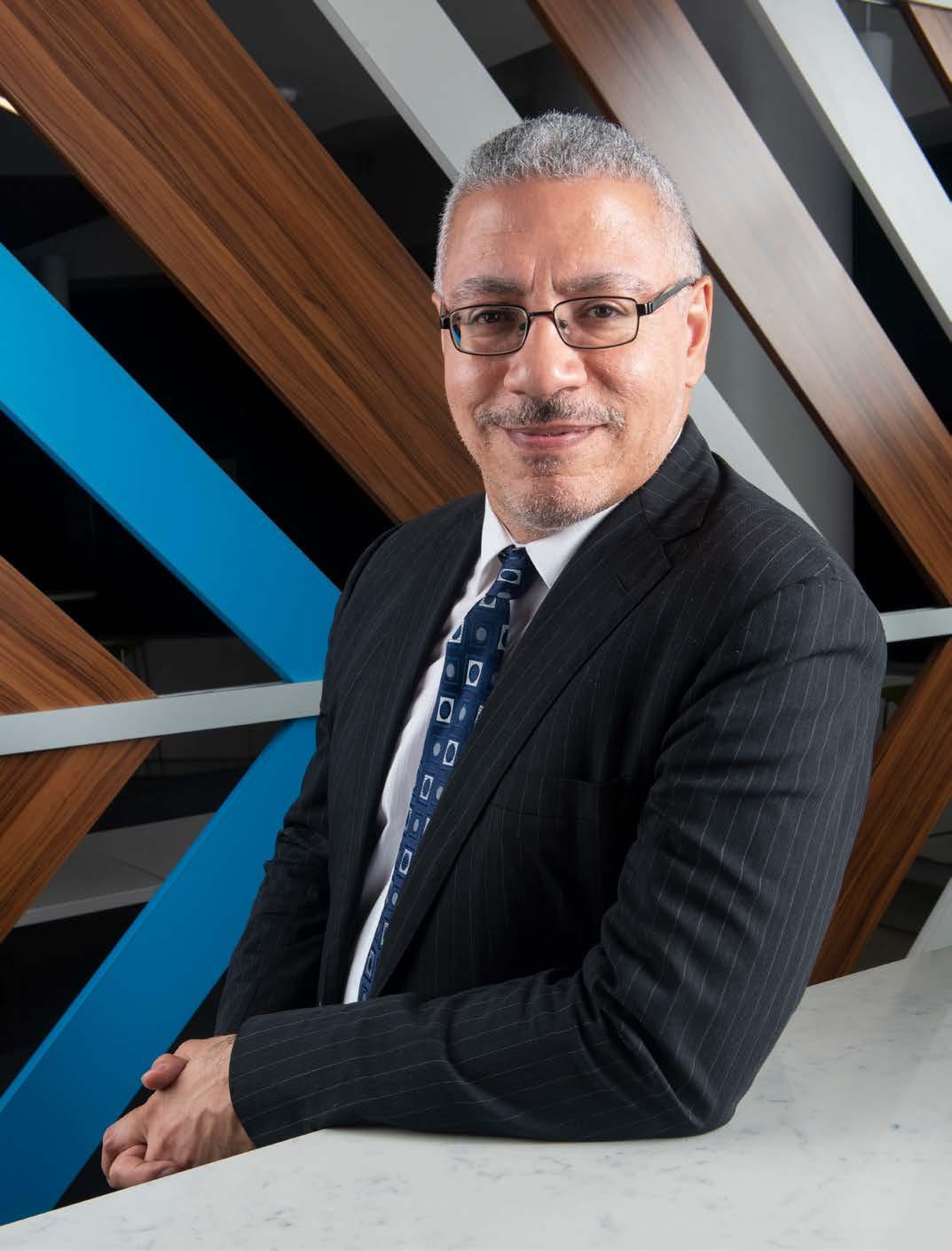
Miguel Centeno | Senior Director of Community Marketing—East | Aetna

taps into local community groups to achieve shared objectives.
One such project involved the Sphinx organization, which is dedicated to expanding diversity in the arts. “Kids don’t get to see African-American and Hispanic classical musicians very often,” Centeno explains. “This organization shows them it is possible.” Aetna decided to help sponsor the group’s national tour, and in exchange, the company asked Sphinx’s performers to become health ambassadors.
In fact, Aetna created a special curriculum for the Sphinx musicians to present in the schools they visited; the program benefits more than 100,000 US students a year. “The health ambassadors/musicians talked about how difficult it is to eat, sleep, and exercise
on the road and provided lots of healthy tips,” Centeno says. “The kids were a lot more receptive to hearing these things since they weren’t coming from a clinician.” The musicians perform in schools that are current Aetna customers, thereby enabling Aetna to do well by doing good.
The Sphinx partnership was the result of innovative thinking, which aligns with the five principles that Centeno encourages the twelve members of his team to embrace. These are: diversity, teamwork, balance, boldness, and performance.
“We have to embrace our diverse perspectives, support each other, and ensure that we are physically, emotionally and mentally healthy. We need to be bold and fearless,” Centeno says. “I urge everyone to take calcu-
lated risks, to try new things, and to stretch beyond where they’ve gone before. Performance means we have to put our plans into action. We can’t just talk the talk; we have to deliver and get results, which means improving the lives of existing customers and attracting new ones.”
Another way Centeno and his team enhance lives is through volunteer activities.
“At Aetna, we have an ethos of volunteerism,” he says. “The latest numbers indicate our employees have donated more than 500,000 hours in their communities, but I think that is an understatement, as not everyone logs their hours.”
Centeno volunteers a significant amount of his own time by serving in leadership capacities on the boards of three nonprofits:
the Hispanic Federation, the National Urban Fellows, and the American Diabetes Association’s Greater New York Chapter. “These great organizations do so much to enhance the quality of life for their communities,” he says. “I am honored that they give me the privilege to serve them in meaningful ways.”
Centeno says his approach to leadership is captured by the acronym BEST, which stands for blessings, empathy, service, and time. Blessings, in this case, is defined as being willing to pass on the gifts he’s received. Empathy is to try to see the world through someone else’s eyes. Service means that Centeno is supporting everyone on his team, both in their professional and personal lives. Time simply means investing time. “I invest the time to get to know my team as people, not just employees, and I celebrate their successes and provide extra help when someone is struggling,” Centeno says.
Sentiments like this and the successes Centeno has had throughout his professional career propelled him onto Crain’s New York Business’s “40 Under 40” list in 2009. “Of all the honors I’ve been fortunate to receive, I’d have to say I am proudest of this one,” he says. “It’s extremely competitive and the 2009 class included lots of talented and dynamic individuals, including Lin-Manuel Miranda,” (who, like Centeno, also happens to be of Puerto Rican ancestry).
In the future, Centeno may run for an elected office. “Over the years, people have encouraged me to seek public office,” he says. “It is something that I am considering going forward.” It is not hard to understand why given Centeno’s commitment to serving others.



Dear Miguel,
Congratulations on your well-deserved recognition.
We are proud and grateful to count on your amazing support and leadership.
What you give – your talents, passion and commitment – makes our community stronger every day.
¡Gracias siempre!
Your Hispanic Federation Family
www.hispanicfederation.org
Mariely
Bandas-Franzetti uses her role at Dell Digital to encourage Latinas and women as a whole to pursue and succeed in STEM careers.
BY OLIVIA N. CASTAÑEDA
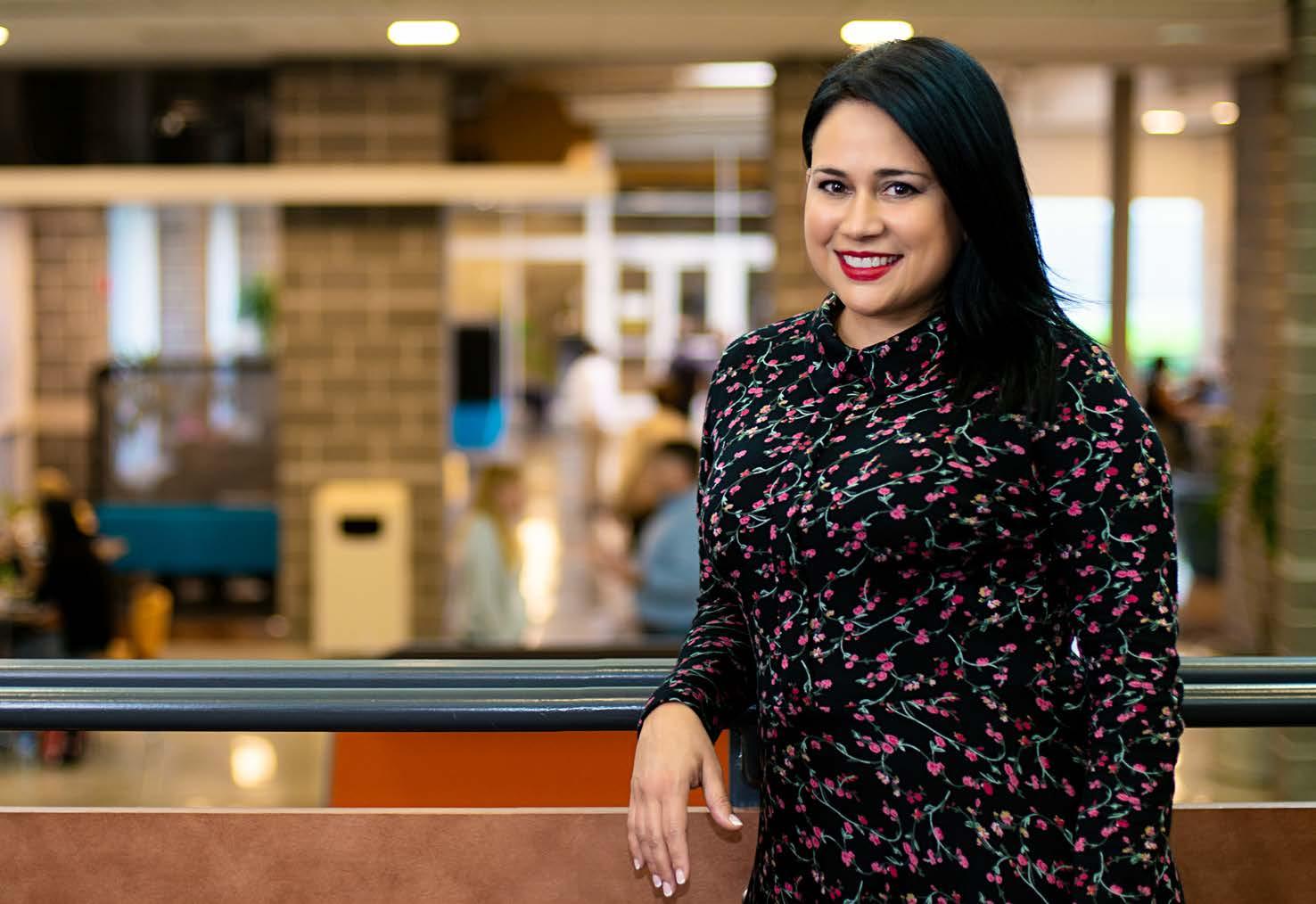
Mariely Bandas-Franzetti VP of Global Services Dell Digital
“ENCOURAGING LATINAS AND WOMEN IN STEM is part of my DNA,” says Mariely Bandas-Franzetti, vice president of global services at Dell Digital. “I think it’s my duty. I want to give back like others did for me.”
Bandas-Franzetti’s interest in STEM took root when she was a little girl, living in Puerto Rico, watching her father almost every Sunday take apart his 1968 red Camaro. While putting the classic back together, he would explain to his youngest daughter the technical logic of how machinery works.
“I have great memories of working with my dad,” she says. “He was very concise and intuitive, and in his simple way, he explained how things work together.”
The father of three was born and raised on the island and sacrificed a lot to put himself through college to become a mechanical engineer. He continuously taught his daughters to focus on their education, self-reliance, and independence, and he ensured that they received an education so that they could be independent on their future journeys.
At the age of twenty-one, after graduating from Universidad de Puerto Rico in 1996, Bandas-Franzetti put her degree in industrial engineering to use by relocating to Austin, Texas, for a job opportunity with IBM. “I moved alone and didn’t know anyone,” she says. “I made that decision just for experience.” Initially, her plan was to work in the United States for just two years.
But in 1997, Bandas-Franzetti started her journey at Dell, leading a variety of initiatives in manufacturing engineering and supply chain transformation. She has since grown and flourished as a successful career woman in IT.
Many of Dell’s leaders fully embraced her and mentored her from the very beginning. “Right after meetings, they gave me feedback, including: ‘Sit at the main table,’ ‘Wait for someone to finish the question before you start answering,’ and ‘Don’t switch to Spanish,’” she says, chuckling at the memory. “They
really taught me the power of having open communication with your team, empowering others, creating accountability, and being courageous and humble.”
One mentor in particular taught her the biggest lesson that she’d ever learn—one that would push her out of her comfort zone and help lead her to her current role: vice president of global services under the Dell Digital organization.
“She told me, ‘I need to ensure you’re ready to change to a new job area where you’re not the subject-matter expert; your next development opportunity is to manage an organization that is global in scope, requires team development, and is in an area where you are not established as an expert.” Bandas-Franzetti recalls. That eye-opening feedback helped her focus and develop the people skills needed to oversee an executive team. “That was my biggest experience: having a leader see potential in me for the next challenge—or challenging me to get out of my comfort zone” she says.
In her role, Bandas-Franzetti oversees a global team of professionals that support the development, deployment, and sustainment of IT solutions. Her responsibilities are to work closely with Dell’s internal business partners to drive business transformation and innovation to more efficiently and effectively serve Dell’s customers.
“I believe a STEM career is great for anyone who is creative, likes problem-solving, is interested in technology, and wants to innovate and be part of something that helps the world,” she says. “That is at the core of what we do here at Dell.”
To promote STEM for Latinas and women altogether, Bandas-Franzetti does a lot of championing internally and externally with Dell’s employee resource groups (ERGs). With the Latino Connection ERG, she is helping to build the pipeline for external leadership engagement with the Hispanic Association on Corporate Responsibility

HIGH (TECH) HONORS
Mariely Bandas-Franzetti is a three-time recipient of the HITEC 100 award from the Hispanic IT Executive Council. The awards recognize the 100 most influential and notable Hispanic professionals in the IT industry.
“It’s an honor to share the award with amazing leaders in this industry,” she says. “I think of how much more we can help and raise awareness on Hispanic talent. It’s really humbling to see the names on this list and the platform that they provide to drive career development, expertise in technology trends, and exposure to the technology community.”
(HACR) and is involved with HACR’s Young Hispanic Corporate Achievers Program. Dell also brings in synergies from across many ERGs in the Austin area to drive common Latino development initiatives. Bandas-Franzetti also partakes in recruiting events with the Society of Hispanic Professional Engineers.
Her mission to help others doesn’t stop there, though.
This year, she created and launched a new program called Women in Leadership, which is designed for Dell’s female employees. The yearlong program hosts workshops and lectures with the key purpose of inspiring, encouraging, and supporting women to reach their full potential. “I’m very passionate in helping females identify unconscious mistakes that may impact their career development and how to avoid career pitfalls over time,” she says. The first thirty employee participants graduate from the program in 2019, which kicked off in Brazil and is expanding to other Dell Digital locations.
Moreover, Bandas-Franzetti encourages women to pursue careers in STEM, regardless of circumstance. In fact, she hopes that women will not see a career in STEM as a limitation for motherhood. “I haven’t had a single challenge since having my son that I felt like my career was in jeopardy,” she says about mothering her now teenage son. When her son was three years old, Dell provided Bandas-Franzetti with the opportunity to pursue her master’s in engineering at the Georgia Institute of Technology.
“There are a lot of opportunities,” she says. “I have found that if you deliver results, always pursue the best interest of the company, and build purpose-driven relationships, then you’ll find mentors and sponsors that
“I believe a STEM career is great for anyone who is creative, likes problemsolving, is interested in technology, and wants to innovate and be part of something that helps the world. That is at the core of what we do here at Dell.”
will reciprocate your effort with an investment in you.”
As another driver to seek women talent, Dell recently launched the ReStart Program. The program is a STEM Re-Entry Task Force initiative led by the Society of Women Engineers and iRelaunch providing support to those returning from a career break due to personal or family reasons. ReStart is an effort to increase the number of women in the STEM industry, and Dell is a member company that will be hiring through this program.
When reflecting on her two decades with Dell, Bandas-Franzetti sees a company with talented people, a noble mission, and a well-founded strategy.
“When you couple this level of talent with clear direction, you get a driven and focused culture that makes Dell a very rewarding place to work,” she says. “Dell is extremely inclusive and global, and we are a melting pot of different people all striving for a common goal—winning results for our customers and partners. It’s key for me to work for a company that sees diversity and inclusion as a business lever critical to the sustainability of a successful global organization, and I love Dell’s purpose of creating technology that drives human progress. I think it’s very simple and a very powerful reason that is absolutely aligned with my personal and professional values.”

It starts with you.
A
single idea from a single person can transform the world. Our single idea is giving anyone the technology to drive progress and move us all forward.
Saving the Safety Net
BY KELLI LAWRENCE
Luis Ayala takes on the challenge of keeping Children’s Hospital Los Angeles available for those who need it most
RAISED BY MIGRANT FARM WORKERS IN agriculture-centered Salinas, California, Luis Ayala found early success for himself on the football field—enough success, in fact, to attend college on an athletic scholarship. When his grades began to falter, however, his motivation to improve came not only from the hard work of his parents but also from a very specific memory of youth: the annual Christmas trip to visit extended family in Mexico.
“I had a lot of cousins back there around my age, and I saw the disparity between the opportunities there versus the ones I had in the United States,” Ayala says. “It really opened my eyes to how lucky I was to live where I lived and get the education I was getting.”
When he turned things around, earned a bachelor’s degree, and was accepted into Harvard’s Graduate School of Education, Ayala envisioned his post-graduate life back on the West Coast as a teacher and football coach, working his way toward a school superintendent position. Then an opportunity to serve a fellowship in the broader arena of public policy alerted him to career options he’d never considered before.
“I discovered there was tax reform, economic development, public safety, and global markets, and I thought, ‘Why just focus on education when there are all these other issues that impact people’s lives?’” Ayala says.
He spent about ten years working for lawmakers before an opportunity in government affairs with the Los Angeles County Medical Association—a trade organization representing both physicians and providers— tipped him toward the healthcare arena. Ayala grew especially fond of the ability to
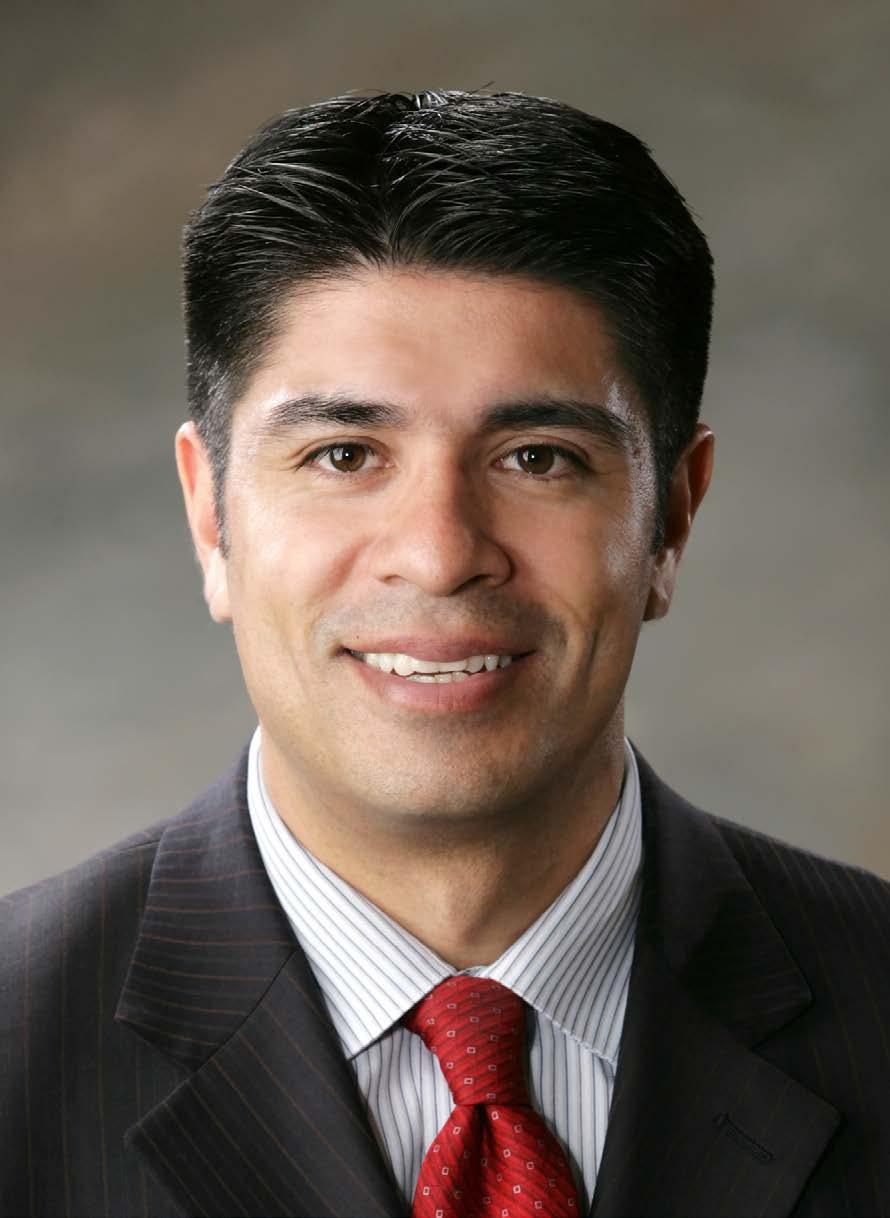
Luis Ayala | VP of Enterprise Government and Community Affairs | Children’s Hospital Los Angeles
help lower-income populations have greater access to healthcare in general. That’s where Children’s Hospital of Los Angeles, and its representation of California’s most vulnerable patients comes in.
Known as a safety-net hospital—with around three-fourths of its patient population on Medi-Cal, California’s version of Medicaid—Children’s Hospital LA has received many accolades. U.S. News & World Report ranked the hospital first in the state in terms of clinical services and specialties and sixth among pediatric hospitals nationwide. To some, those statistics are at odds with each other. Ayala, who has now been with the hospital since 2017, knows better. “The essential part of our hospital’s mission is that we treat children with the best possible care regardless of their socioeconomic status,” he says. “It could be Jimmy Kimmel’s baby, or it can be from a family barely making it through—we give them both the same exact care.”
Ayala had barely settled into his new role as vice president of enterprise government and community affairs when he joined his new team in dealing with, potentially, the biggest challenge a hospital such as this could face: a slew of proposals, brought on by both the Trump administration and the GOP majority party, to slash federal funding to Medicaid and replace it with block grants, offered to each state based on population. If such proposals came to fruition, California would lose about $120 billion over ten years.
Just like that, Ayala kicked into high gear, developing strategies to make his team the
“It could be Jimmy Kimmel’s baby, or it can be from a family barely making it through—we give them both the exact same care.”
most effective advocate possible for the hospital. “We had to partner with our other children’s hospitals in California, as well as general hospitals, physician groups, provider groups, hospital groups, grass roots groups, healthcare groups—you name it,” he says. “We had to form part of that coalition to convince those folks to try and not get rid of Medicaid as we know it.”
This included partnerships with key organizations, such as the California Children’s Hospital Association, a representation of eight free-standing pediatric hospitals in the state, as well as the Children’s Hospital of Los Angeles Medical Group, the Children’s Specialty Care Coalition, and the California chapter of the American Academy of Pediatrics.
When all was said and done in 2017, the deciding vote by the late Senator John McCain kept those Medicaid cuts from becoming reality. Still, Ayala’s team only took the slightest of breathers before researching, restrategizing, and setting new priorities at the federal, state, and local levels. At the time of publication, Ayala and his team were working in anticipation of the 2018 midterm elections and the state elections in California.
To prepare for California’s state elections, Ayala and his team focused on the Children’s Hospital Bond Initiative, which—at the time of
publication—was set to appear as Proposition 4 on the California ballot in November 2018. If passed, Ayala says, it will raise $1.5 billion over the next thirty years for system and service updates for Children’s Hospital LA and the seven other pediatric hospitals statewide.
Another reason—which is decidedly more contingent on nationwide election results—is an issue known as public charge. The National Immigration Law Center defines public charge as an individual who is likely to become “primarily dependent on the government for subsistence, as demonstrated by either the receipt of public cash assistance for income maintenance or institutionalization for long-term care at government expense.”
“The current administration is declaring a need to hone in on noncitizens [legal residents] using the public finance system,” Ayala explains. “Hearing this on the news could prove to be a deterrent to such people coming to the hospital when they need it.”
It’s times like these that he’s grateful for the years of experience—both in healthcare and the government— that his team has.
“It’s difficult to balance all the issues,” he admits. “But having this team we have, as well as a board of trustees and well-connected advocates, we leverage some of that to be able and reach the decision-makers.”
An expert municipal engineering consulting firm providing services to California cities and agencies.
OUR SERVICES
Municipal Public Works & Engineering Consulting
Project | Program |
Construction Management
Building & Safety | Plan
Check & Inspection
Public Works Improvements | Urban Design
Civil Engineering | Design
Traffic & Transportation Engineering
Grant Writing | Funds Management
Surveying | Mapping & Right-of-Way Engineering Planning
Land & Real Estate Development
Community Outreach | Public Relations
transtech.org | 855.595.2495 (TOLL-FREE) info@transtech.org | ISO 9001:2008 certified



CONVERSATIONS AT THE TOP
SOL TRUJILLO
WITH RUBEN NAVARRETTE
PORTRAITS BY GILLIAN FRY
Business magnate Sol Trujillo, fresh from the launch of his L’ATTITUDE event, sits with columnist Ruben Navarrette in his Southern California home office to discuss today’s political and societal effects on American businesses, and his secrets to success for those following in his footsteps
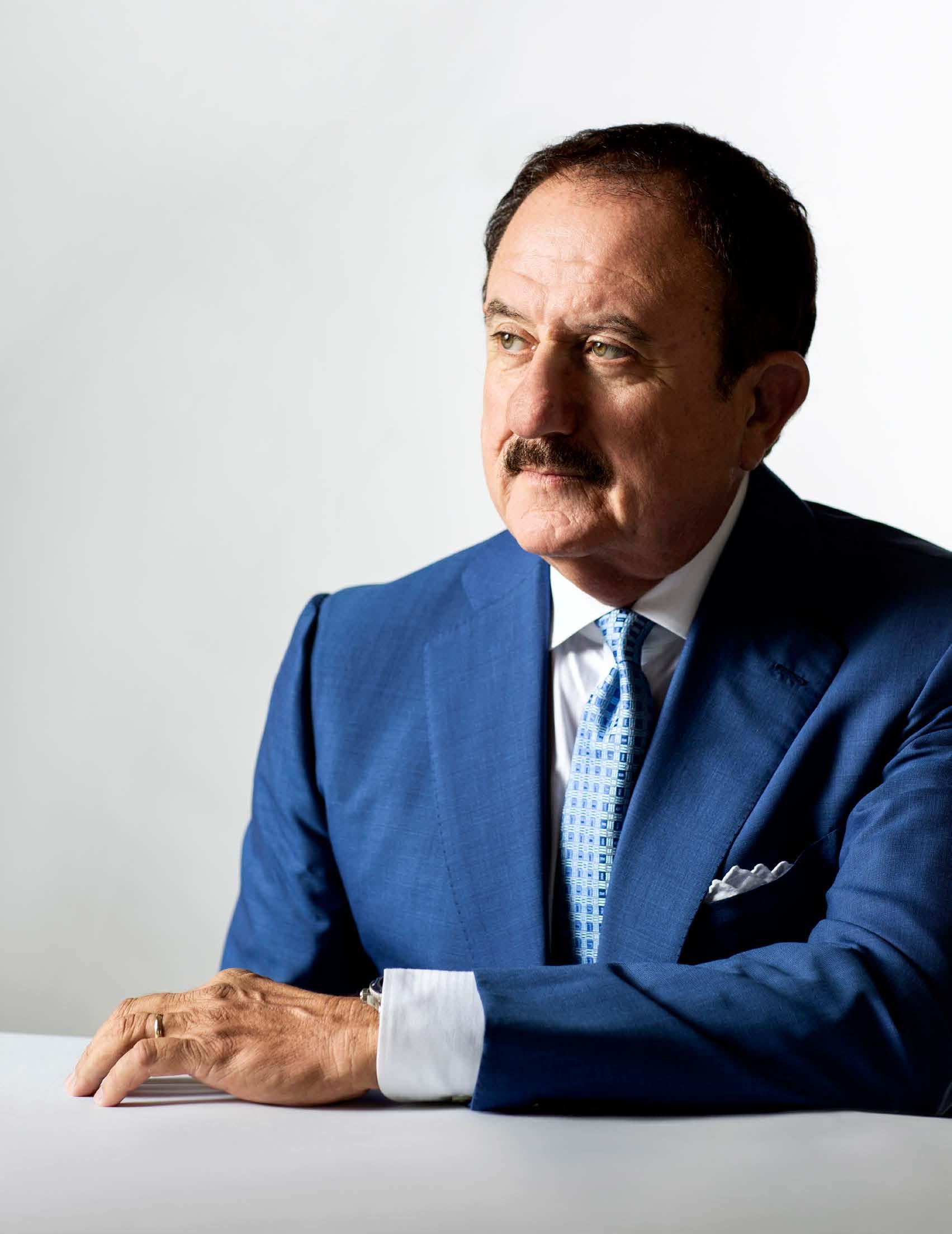
It’s a rare leader who can speak with equal fluency about business, labor, profits, and markets—but also about sports, demographics, music, entertainment, and popular culture—and then somehow weave them all together.
That brings us to Sol Trujillo, a bold and visionary business leader who has successfully managed three $50+ billion market cap companies on three different continents and now calls Southern California home.
Trujillo knows how to make businesses work better, how to create products that consumers buy, how to streamline production to maximize efficiency, and how to communicate a vision to get buy-in from shareholders and employees.
Those are things you learn at Harvard Business School—or, better yet, from the School of Hard Knocks.
But he has another trait that pays huge dividends in life, and it can’t be learned at either of those places: How to be a good person. You know, the kind of person with whom other people want to do business.
Don’t let this get around, but besides being a tough businessman, Trujillo is also a genuinely good person.
To learn about his business acumen, you could read his bio, look over his resume of accomplishments, watch a video of one of his speeches, interview associates, or peruse the dozens of articles written about him over the years.
You can also study the accolades: at age 32, the youngest executive officer in the history of AT&T; the first US-born Hispanic to run a Fortune 150 company, U.S. West; first American to lead a CAC-40 company, Paris-based Orange, SA; one of the first major-company CEOs to build a diverse board of directors; revolutionary leader in the tech space (before anyone called it that) innovating and deploying wireless, broadband, and smartphones; recipient of the Ronald H. Brown Corporate Bridge Builder Award from President Bill Clinton and a member of President George W. Bush’s Trade Advisory Council; member of various corporate boards for companies like Target, Promerica Bank, London-based WPP, Western Union, PepsiCo, EDS, Gannett, and Bank of America; and cofounder of the Latino Donor Collaborative, whose mission includes improving the image of Hispanics in media and entertainment.
Recently, Trujillo helped launch L’ATTITUDE, a four-day business, media, and leadership event celebrating the impact of US Latinos on what the businessman calls “the New Mainstream Economy.” The gathering, which occurred in September 2018 in San Diego, drew thousands of attendees and featured panel discussions, presentations,
“
“You have to be very wealthy in order to win a lot of these political offices— in particular the presidency. To even be a candidate for the presidency, you have to have your own bankroll or relationships that have big funding capabilities. That has been a barrier for US Latinos.
Also, over the last two decades or so, extreme gerrymandering has allowed people to have very safe seats. We’ve seen both Republicans and Democrats gerrymander so they are essentially in control of governors offices and state legislatures.
I believe we are going to need some campaign-finance reform so that only the wealthy or the biggest lobbying groups can’t just control elections. Secondly, we need to find a formula where there’s now a lot of litigation on gerrymandered districts, having some of them overturned because they are so extreme and protective of incumbency. Once that starts changing, we are going to see a dramatic change.
In the meantime, we’re starting to see more and more people running for office, and we will probably have some people start running for president. People who would be viewed by the Latino community as Latinos. Not people in name only, but people who are truly what I would call a fullfledged American, meaning they can be bicultural, tricultural. Not sacrifice any of our core American values, but be enhanced with the ability to be adaptive in a global world.”
SOL TALKS: POLITICAL POWER
and interactive dialogue. Headliners included actress Zoe Saldana, filmmaker Robert Rodriguez, chef José Andrés, journalist Rick Sanchez, and former Major League Baseball player Alex Rodriguez along with a surprise guest—his girlfriend, actress, singer, and entrepreneur Jennifer Lopez.
Top Hispanic executives—Oscar Munoz, United Airlines CEO; Cesar Conde, Chairman of NBCUniversal Telemundo Enterprises; Ralph de la Vega, Chairman of the De La Vega Group—also participated. Sponsors included Walmart, Wells Fargo, AT&T, PepsiCo, Century 21 Real Estate, Quicken Loans, United Airlines, and the Wall Street Journal
All of that is public knowledge. Google it.
The only reason I know about the “good person” part is because he is my friend, and he has been for about eight years. That doesn’t mean we agree on everything—you know better, we’re Hispanic. Disagreement is in our DNA.
Ask Trujillo and he’ll tell you. We probably agree half the time. The other 50 percent, I’m wrong.
HAVING AMASSED ENOUGH WEALTH AND RACKED UP
enough achievements for more than one lifetime, Trujillo has earned a calm, restful, and uneventful retirement—which would drive him quite mad.
What is he supposed to do? Play golf? He hates golf. He loves tennis. But what he loves more is coming up with ideas and making them realities.
And Trujillo’s best idea is the one he hasn’t had yet.
If I had to explain in a nutshell what drives my friend at this point in his life—when he has nothing left to prove to anyone, except maybe himself—it would be this: a passion to convince Hispanics in the United States that they have something great to offer this country, while convincing non-Latino Americans that Hispanics have a lot to offer.
Like having a finger on the pulse of popular culture, and a keen appreciation of the power of social media.
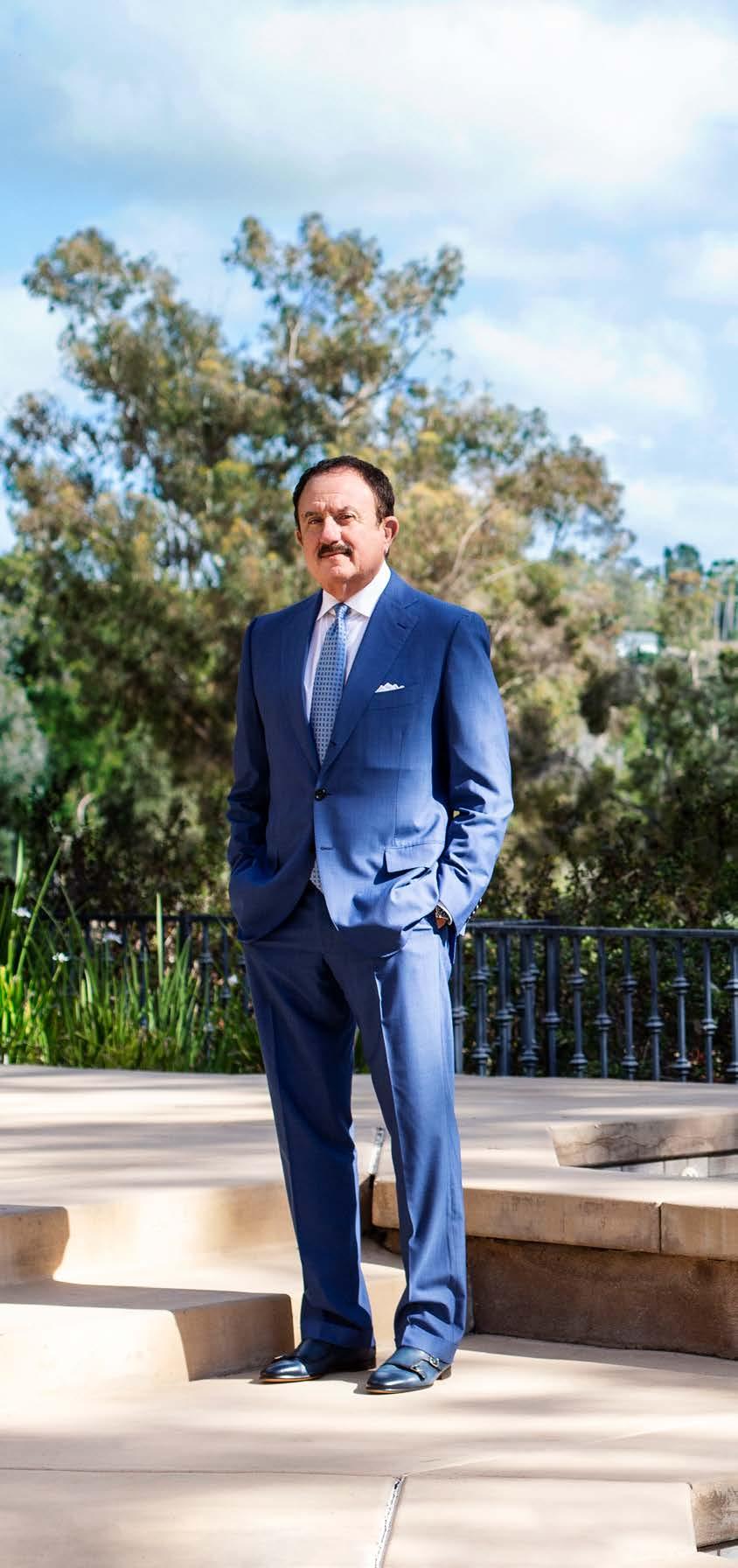

Trujillo’s best idea is the one he hasn’t had yet.
“When people talk about deporting 10 or 11 million people, it’s what I would call economic suicide.”
Like being the driving force behind the majority of economic growth in this country.
Like amassing a GDP of $2.13 trillion, which is larger than the GDP of India and growing faster than eight of the top ten economies in the world.
Like accounting for 70 percent of the increase of the US workforce in the first part of this decade.
Trujillo is well-acquainted with the power structure that runs Wall Street, politics, media, academia, entertainment, etc. He spent his whole life being one of the few Hispanics—if not the only Hispanic—in the room, surrounded by people who knew so little about people like him that they would mangle his name: “True-Jill-Oh.”
Trujillo also knows the Hispanic community—58 million people, $1.8 trillion in buying power, and a presence in all 50 states. He prides himself on not forgetting where he came from, or how to find his way back. “I have always been a guy who is a Latino,” he once told me. “I’ve been a businessman and CEO … but that doesn’t mean that you can’t be who you are and reflect your heritage.”
Naturally, since he knows these two groups so well, he has taken it upon himself to make the introduction.
Meanwhile, Trujillo’s own feet are planted firmly on the ground because they were put there by his parents—his primary role models who, as he recalls, “worked harder than anyone could work” without complaint.
It was Trujillo’s parents who taught him to always look people in the eye—that is, to never look up at anyone or down on anyone. He never forgot that. Even as he traveled a road that was, at times, complicated.
Here you have a guy who grew up in—of all places—Cheyenne, Wyoming, and he and his family experienced their share of racism. Yet there was still more in store for him, many years later and halfway around the world, while he was in Australia serving as CEO of the country’s biggest telecommunications company, Telstra.
Here you have a guy who loves, more than anything, his family—his wife, Corine, his daughters, and his grandkids—but who still dedicates much of his time to his work and the international travel it demands.
“
SOL TALKS: ECONOMIC SUICIDE
“There is one population cohort that sets the United States economy apart from any other mature market in the world: the US Latino population cohort. I’m speaking very clinically: they’re already here and effecting growth on the consumption side of our economy and on the labor side of the economy. The only way you grow an economy is you have to have a growing workforce and you have to have people consuming on the other side of it.
The GDP is a sign of health. With the Baby Boomer cohort, we’ve been growing our GDP anywhere between three and five percent a year for four or five decades. That’s because we had a rapidly growing workforce. But if you look in the last decade or so, we’ve had a dramatic slowing of GDP. The math shows that the growth in our workforce is dramatically slowing. Within the next year, we’re going to be slightly under one percent workforce growth rate.
When people talk about deporting ten or eleven million people, it’s what I would call economic suicide. I’m not talking social policy. I’m going to be very clear: this is business and economic suicide. Immigration has been part of our workforce growth rate.
We all have to be aware of the implications of these decisions. It will affect everybody’s income, everybody’s job opportunities, and it will affect our ability to be competitive as an economy.”

There are also the Trujillo paradoxes.
He is a lifelong Republican who considers the current administration “Trump party members” instead of “real Republicans,” and makes it a point to distinguish himself as not a Trump party member.
He wants Hispanics to not be pigeonholed as a special-interest group but integrated into the mainstream, yet he doesn’t shy away from branding Hispanic initiatives as such, even if it sets them apart from the mainstream. Trujillo would say that Hispanics no longer need to be accepted by the mainstream because they are the mainstream.
RECENTLY, I CAUGHT UP WITH MY FRIEND TO CHECK in on his latest ventures and adventures.
I started by asking him what he thought of a new law, here in California, that requires that women be put on corporate boards of publicly traded companies.
“Well, first of all, I’m not a big fan of government interventions,” he says. “But, in the case of this legislation requiring women on boards, it probably makes sense if the numbers are weak. I would say it’s a business imperative as opposed to regulatory imperative.”

California is 40 percent Hispanic, I reminded him. What if there were a similar law, I asked, requiring publicly traded companies in the state to put Hispanics on boards?
“Well, again, if you know that 70 to 80 percent of your growth is tied to one customer cohort,” he says, “I almost call it a CEO IQ test. If you don’t have a Latino on your board or in senior management, I would question the board. I would question their governance processes. … It’s not about social policy; it’s about good, smart business.”
Speaking of business. I asked Trujillo to assess, on a scale of one to ten, the financial strength of US Hispanics. I could see the glass as half full—or half empty.
“Based on total numbers, I would say it is probably at a five,” he says. “So it’s not where it can be, it is where it is. But it’s dramatically improved from a decade ago. And I can tell you, a decade from now, it will be dramatically better than where it is today because of the number of people moving into income-generating ages, and the people who are already in the workforce today will continue to progress because they’re the highest-educated cohort of Latinos that we’ve seen in the history of our US Latino population.”
“
SOL TALKS: PRESIDENTS
“Ronald Reagan was an enlightened president. He understood what was coming in the 21 st century. He had economic policies and social policies that understood that. He played a huge role in setting the stage for a lot of the success we had in the last couple of decades. He was a real Republican.
I don’t like a lot of regulation. I think businesses should be able to run. I’m a believer in letting markets work. I’m a believer in fiscal strength and control. So I don’t buy running deficits up by a trillion, trillion-and-a-half dollars a year. That is not leadership.
I like to use the word leadership because leadership is when you’re trying to solve problems, not only for today but for tomorrow. That’s what Ronald Reagan, to me, stood for.”

“Be relentless about performance.”

The future of the Hispanic community, Trujillo insists, is all wrapped up in the educational system.
“The US Latino is matriculating on to college higher than any other cohort,” he says. “Those are all positives. I mean, if you were to write an optimistic story about the United States of America, this is the story.”
Finally, given that one’s career is a marathon and not a sprint, I wondered what advice my friend would give Hispanic executives who are in the middle of the race.
“Well, I’m a performance-based person and ever since I was young in my career, I learned that I had to be ten times better than everybody else,” he says. “So I could have sat back and whined and complained and said, ‘It stops here.’ [But instead] I said, ‘OK, if those are the rules of the game and I have to be ten times better, then I’m going to figure out how to be ten times better.’ I think it’s not that way today; it’s not that extreme. But, in some cases, some people have to overcome perceptions and other [adversities]. My answer is: Always figure out what is the performance that people find great and go be great. Go perform at those levels because people like people who perform well.”
But what if they are performing, and they have already put in twenty-five years, and hope to put in another twenty-five years before they step away from the course? How do they finish strong?
“Figure out what you want, number one,” he says. “Number two: [figure out] what gets you there. I would argue that eight-and-a-half times out of ten it’s always performance. Be relentless about performance. Be relentless! You have to take risk. The most successful leaders I’ve seen are people who, along the way, had to take risk. You have to have that appetite, to sometimes be wrong, to sometimes fail. But you get back up and you go at it again, and you succeed.”
Take it from someone who has, in more ways than one.
—Ruben Navarrette is a syndicated columnist with The Washington Post Writers Group, author of A Darker Shade of Crimson: Odyssey of a Harvard Chicano, and host of the podcast Navarrette Nation
THE CONVERSATION CONTINUES
Want more Trujillo? Watch our continued interview in a three-part online video series. hispanicexecutive.com/watch-sol-trujillo
“
SOL TALKS: IMMIGRATION
“What do we need to protect our country from the criminal and terrorist element of immigration? We don’t need to protect from a mother or father coming over with their babies. And building a wall does not protect against the smart people who can come over in a very sophisticated way.
If you go into any kind of business building, there’s security. You have a system. Not walls, but systems. Because you use technology to find and scan people that are coming in, and you record it and you know where they are. And then you have systems again to know when people leave.
Building a wall is a 12 th century kind of thing, and everybody is spending their money and their efforts on a wall versus fixing the system. But putting up technology walls, sensor walls, where you can identify and track people, scan irises and fingerprints, you can do all kinds of things. That’s how you fix border security.
And you can do it all without destroying the US economy. This is what President Trump doesn’t understand. He’s trying to remove immigrants—or at least those who didn’t come from Norway. The data doesn’t lie. The math is clear. We can’t grow our GDP as we would like without the workers who are already here, and the ones we still need to replace those we’ll lose in the years to come. We have seven million more jobs than we have workers to fill them. We need immigrants at least as much as they need us—maybe more. And, because his policies don’t add up, Trump needs to take a course in basic economics.”
Attract
Recruit Train Talent
A look at the trends, tactics, and techniques for full-cycle talent leadership of today’s ever-changing workforce
Develop Retain
A letter from our Guest Editor
Webiases all have
—and it’s critical to understand that these can actually limit us from reaching our full potential, which has a business impact.
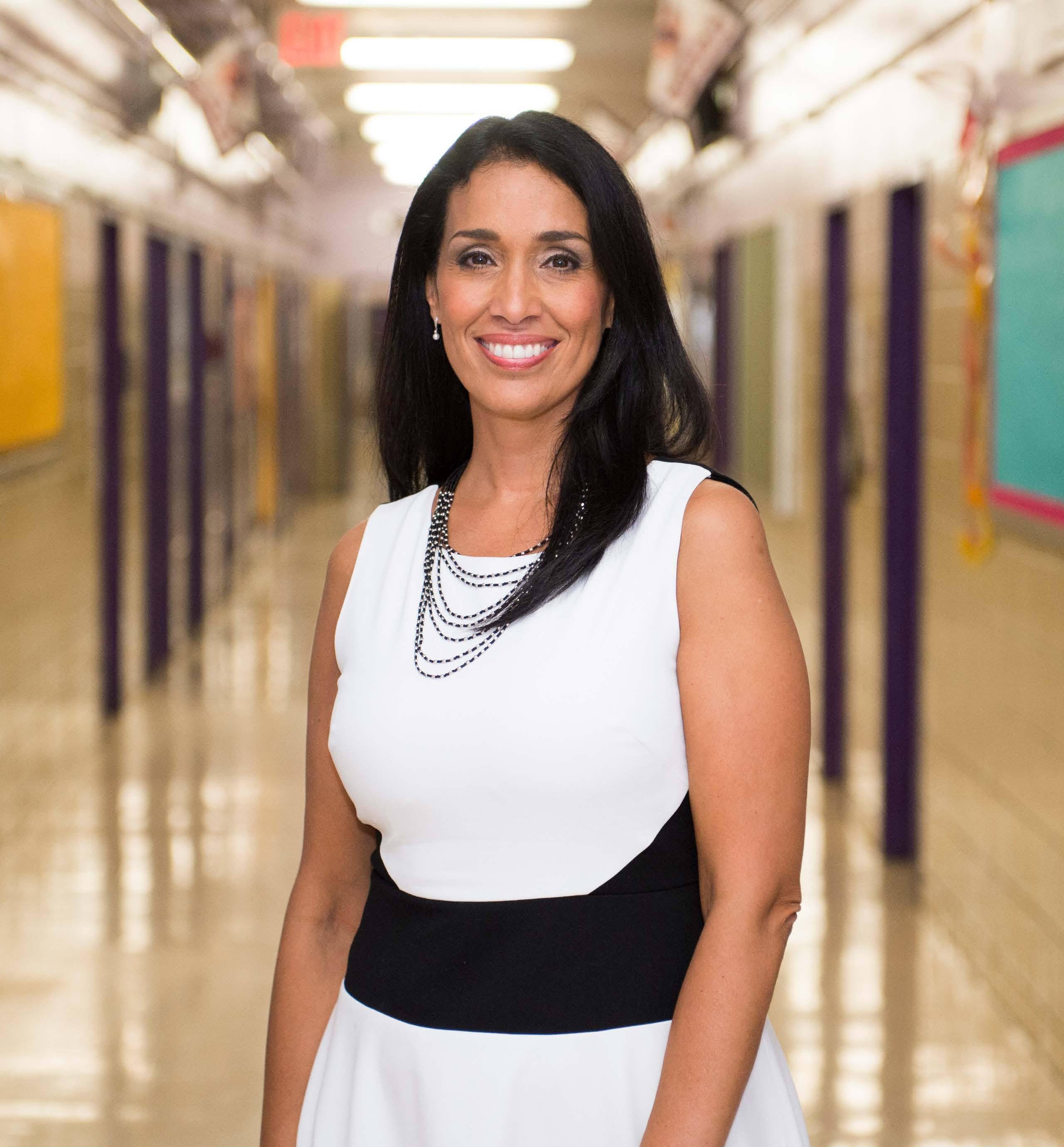
SVP & Chief Talent and Diversity Officer
Magda Yrizarry
Unconscious bias is common in the workplace, and we know that certain scenarios can trigger unconscious attitudes and beliefs about others. We can’t afford for anyone to feel they have to leave a part of themselves out in order to fit in. We always want to create an environment where we’re helping people be more, and not less. As leaders, we have to be immensely aware of our impact over people—even when our intentions are positive. Biases are part of human nature, and I believe training helps people understand this and appreciate the impact it has on others and on our business.
At Verizon, we’ve been able to have a conversation around unconscious bias with thousands of employees, at all levels of the organization. Just recently we had a very senior executive talking at an event about how much “unlock” happened for her because she initially thought, “Why is this important? I don’t need this training because I don’t have any biases against people.” She’s not alone—many people entered the class with apprehension but left it feeling enlightened with a new understanding about why this conversation is so important.
The program surprised participants about how much more awareness, openness, and listening is required, and how, by changing a few of their own behaviors, they can actually have an impact and make others feel more included.
Following the experience, employees reflect on what they can do. One quote that I lean into in terms of my approach
*See Magda’s thoughts on the challenges faced by our featured executives in talent throughout the following pages
to daily life is, “To whom much is given, much is expected.” It reminds me of a need to pay it forward. At times, this could result in disappointment, and that can discourage you from doing more. Sometimes you don’t see the results—you want to be part of systemic work, making big decisions, but in reality you find yourself in a position that is different than what you envisioned. Stay there—that’s where the influence is.
Model the behaviors that you expect inclusive leaders to have. Be willing to be bold and teach people. Be open and willing to listen so that you can understand where others are coming from without defense.
Everyone can be a difference maker.
Those of us who have this pursuit of impact can feel good every single day because every time we look at a person, every time we interact with a person, we see them. We don’t pass by them. That innate part of us that’s saying, “I want to do something for someone,” will feel fed.
We survey employees about our diversity and inclusion efforts, using questions such as, “How proud are you to work at Verizon? Would you recommend Verizon as a great place to work? Do you feel valued and respected?” I’m proud to say that women and people of color have always been extremely positive in their responses.
But that doesn’t mean we don’t have work to do. We have to go deeper to keep our workplace positive and inclusive in the context of the societal environment.
“Model the behaviors that you expect inclusive leaders to have. Be willing to be bold and teach people.”
This year, I’m most proud of the work that we’ve done to assess, move and develop our talent. There’s a lot of transformation happening at Verizon. Operating models are changing, leadership is changing, and with that comes plenty of opportunity for movement. I’m proud of the way we’ve been able to build a pipeline that is diverse, that is ready for the opportunities that are going to enable this transformation.
Verizon was first to launch 5G. I see the people who built 5G, who are rolling out the fiber enabling 5G, and who deliver amazing experiences for our customers every day. It’s a diverse team of people, and it reflects the diversity of our customer base. We are continuing to have a culture where people are able to contribute, to be valued, to be heard.
We believe we’re uniquely positioned to deliver the promise of the digital world. We have all of the assets to do this, and that includes our people. I’ve been here twenty-eight years, and we have many times been able to reinvent ourselves for the future to put ourselves in a winning position. It’s continuous.
Amidst all of this transformation, we must have the right people. And we must consider what our customers want. We have to digitize the experience inside the business for our employees, as well as outside for our customers.
In today’s workforce, we’ve found that we need a balance of remote people and people who physically sit together. It’s absolutely dependent on the job, and it can also depend on the project. More and more employees are seeking flexibility
and have different work styles, preferences, and needs. Technology enables us to find efficiencies while also making sure we maintain our productivity.
We’ve found success in pilot programs for remote work—such as our in-house agents, who traditionally have worked in a physical call center. Our customers decide when they need us, so it’s critical that we find unique work solutions to keep up with that demand.
Being aware of our biases, we have to continue to question the ways of working that we prefer, that we are comfortable with, and that give us the trust and confidence that people are being productive. The world is mobile, and we need to challenge some of our biases and assumptions and evaluate new strategies for our employee base to be able to do their jobs. We might find, as in the case of our in-house agents, it is indeed possible.
This new thinking opens up a lot of possibilities for us to continue in this journey. Which jobs, which projects, which people lend themselves to remote work? We have to be flexible in all directions that way, with an eye to our customers. The customer is at the center of everything we do.
We live in a world where the majority of public discourse is so divisive. Companies are simply microcosms of that world. And even though we have been able to stay the course on diversity and inclusion in the midst of massive transformation, we can’t stop. We need to continue the conversation.
PalateADiverse
Troy Acosta draws on his culinary background to lead and develop a global supply chain team at Sodexo
By Jonas Weir
ofTalent
The culinary palate of New Orleans runs the gamut of cultural influences. French, Spanish, and African cooking merged with a blend of American ingredients—and the spices the city afforded with its status as a major trading port—to create the cuisines known as Cajun, Creole, and Southern soul food. Combined, these cooking styles have birthed some of the most iconic and uniquely American foods.
Troy Acosta—vice president of supply chain North America at Sodexo—grew up in this same diverse, cultural hotbed, a circumstance that has informed his entire career.
“Being from New Orleans, it’s very food-centric,” he says. “My dad cooked a lot. I thought my choice of careers was either go to college to be an accountant or go to culinary school. And culinary school seemed a little more exciting than accounting.”
After graduating from the Culinary Institute of America, Acosta spent the early part of his career as a chef, working in hotels, including Marriott, Hyatt, and The Peabody Hotel Group. In fact, he first joined Sodexo, a global food services and facilities management company, as an executive chef. It wasn’t until later that he was brought on to the operations side of the company, and as he moved up the ranks at Sodexo, his role in the company and approach to work has changed significantly, while staying true to Sodexo’s core values.
It is the company’s core values that strengthens Acosta’s relationships with key partners, such as Chef Works. “Sodexo has been one of our strongest national account partners since 2007,” says Dave Roth, COO of Chef Works, makers of high-quality culinary apparel. “Both companies are built on foundations of
Troy Acosta
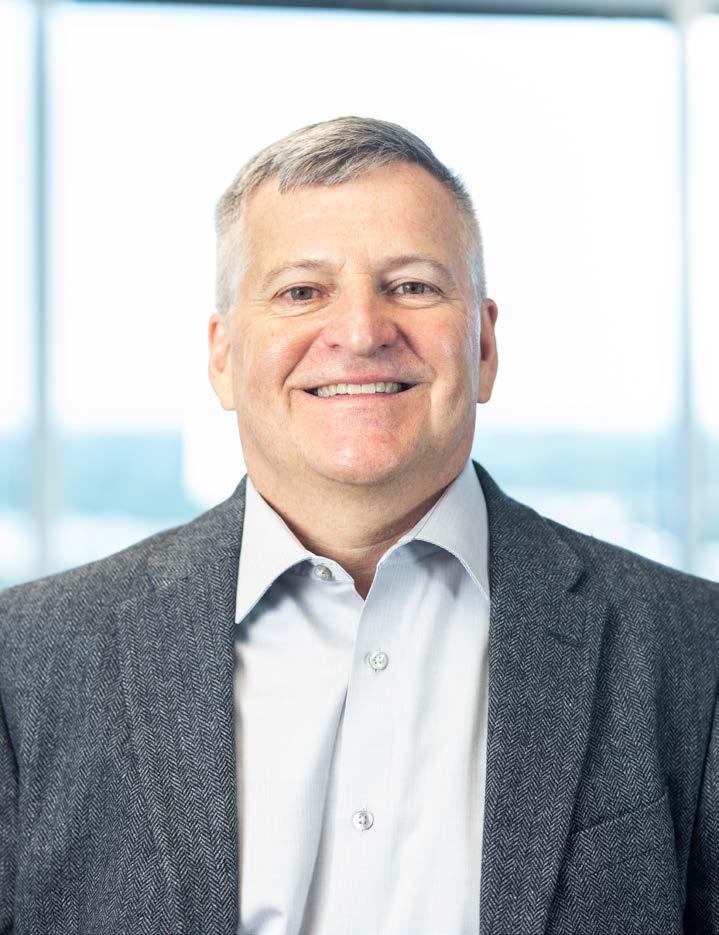
Sodexo
VP, Supply Chain North
“You have to build not only the data and the story, but you also have to build relationships so they understand the numbers and trust the guidance you’re providing.”
America

exceptional customer service and the shared values of honesty and integrity.”
Today, with Sodexo’s core values in tow, Acosta oversees a team of sourcing professionals responsible for hundreds of contracts in addition to leading multiple global and regional initiatives to support Sodexo’s sourcing strategy. It’s a strategic, supply chain role for North America, and it spurred Acosta to develop a new set of leadership skills.
“I would look at the early part of my career in a kitchen as very tactical,” he says. “Now, it’s much more about long-range strategies, influencing management while serving clients and key stakeholders.”
When he was a chef, Acosta mostly planned for the short term, ensuring the kitchen staff met deadlines while looking into menu preparation for special events. In contrast, he now has to develop
strategies for 3–5 years and forecast 12–24 months in advance to build long-term sourcing strategies and prepare for major catastrophic events to ensure it does not disrupt Sodexo’s supply chain. For example, when it’s hurricane season in the United States, Acosta is in crisis management mode, tracking storms weeks ahead of time to communicate with and fully prepare his team, Sodexo leadership, vendors, and other key stakeholders.
“You have to build not only the data and the story, but you also have to build those relationships with the individuals so that they understand the numbers and trust the guidance that you’re providing to them,” Acosta says.
Acting as a leader in supply chain for the company is a lot more numbers-driven than the skill set required for a chef. In fact, Acosta returned to school to re -
ceive a bachelor’s in business in 2005 and a Six Sigma Black Belt in 2011—and he now admits that it’s closer to the career path he originally chose to avoid.
“A lot of what I do in the supply chain has to do with accounting,” he says with a laugh.
Not only has the scope of his responsibilities and focus of his work changed, but Acosta says that taking on a strategic role also shaped his approach to leading his team.
“In the kitchen you’re trying to be one of the team members,” he says. “When you’re in the position I’m in now, you’re much more of a coach to a broader team.”
Today, Acosta leads a team of about thirty, spread across North America, with members from Canada to Ohio to Maryland, where Acosta himself is based. In managing his team, Acosta says that
*“The business landscape, inside and outside, is constantly changing, and Troy has had to metaphorically lift his head up from the table where he was cooking in order to strategically influence and define the future of that landscape. Now, the technical work he has to focus on is in the fundamentals of developing his people. With his global reach, Troy is a ‘net-exporter of talent’ as he continues to share his story in hopes of helping others find unique and fulfilling career paths of their own.”
—Magda Yrizarry
the most important thing is to create is a learning environment. So, he’s personally committed to developing his team members and encouraging them to continually grow and challenge themselves. In fact, he considers himself to be a “net-exporter of talent.”
Being a net-exporter of talent means he helps others achieve their career goals and decide their career path. That not only translates to succession planning for his own position at Sodexo, but it also means mentoring that extends beyond his official capacity at the company.
At Sodexo, Acosta participates in official mentoring relationships through the company’s program, Impact Mentoring, which pairs leaders from across the organiza tion with mentees for a yearlong mentorship. For Acosta, however, those relationships often extend beyond a year. In fact, he believes so much in mentoring that he’s even mentored people after they’ve left the company. Additionally, outside of work, he mentors through his involvement with the Eagle Scouts, and he says that friends and col leagues will recommend mentees to him.
“I enjoy it because I’m a re sults-oriented individual; I enjoy seeing people grow,” he says. “With the right interaction, people learn, people grow, people become better.”
Although he mentors and coaches outside of the workplace, Acosta also found the perfect place to learn and grow himself with Sodexo. In his role, he interacts with people all over the world, and he often mentors people across




generations, geographies, and cultures. It’s as rich a melting pot as the multicultural culinary city that first inspired him to pursue a career as a chef, which developed into a career as a respected global supply expert. Ultimately, it’s the type of diversity that his role as a mentor and strategic leader at Sodexo affords that inspires him to continually grow, lead, and succeed.
“First and foremost, the word diversity, to me, means allowing the richness of the various cultures and individuals’ backgrounds to be blended into a greater outcome,” Acosta says. “For me, diversity is very much like learning about new foods. The more you try new foods, the more interest you have in trying different foods. So, your palate becomes very rich, and you look for different tastes and different flavors. When you work within a diverse company, not only do you learn about different people’s culture and the richness that brings into the workplace, you want more of it.”
Cintas congratulates Troy Acosta on this well-deserved recognition. We value our partnership with Sodexo and the opportunity to keep their facilities Ready for the Workday®. We offer a wide range of products and services that enhance a business’ image and help keep facilities and employees clean, safe, and looking their best.
PERFORM SHARPER LOOK SHARP

“Sodexo has been one of our strongest national account partners since 2007. Both companies are built on foundations of exceptional customer service and the shared values of honesty and integrity.”
- Dave Roth, COO
Addressing the Twin Cities TalentShortage Crisis
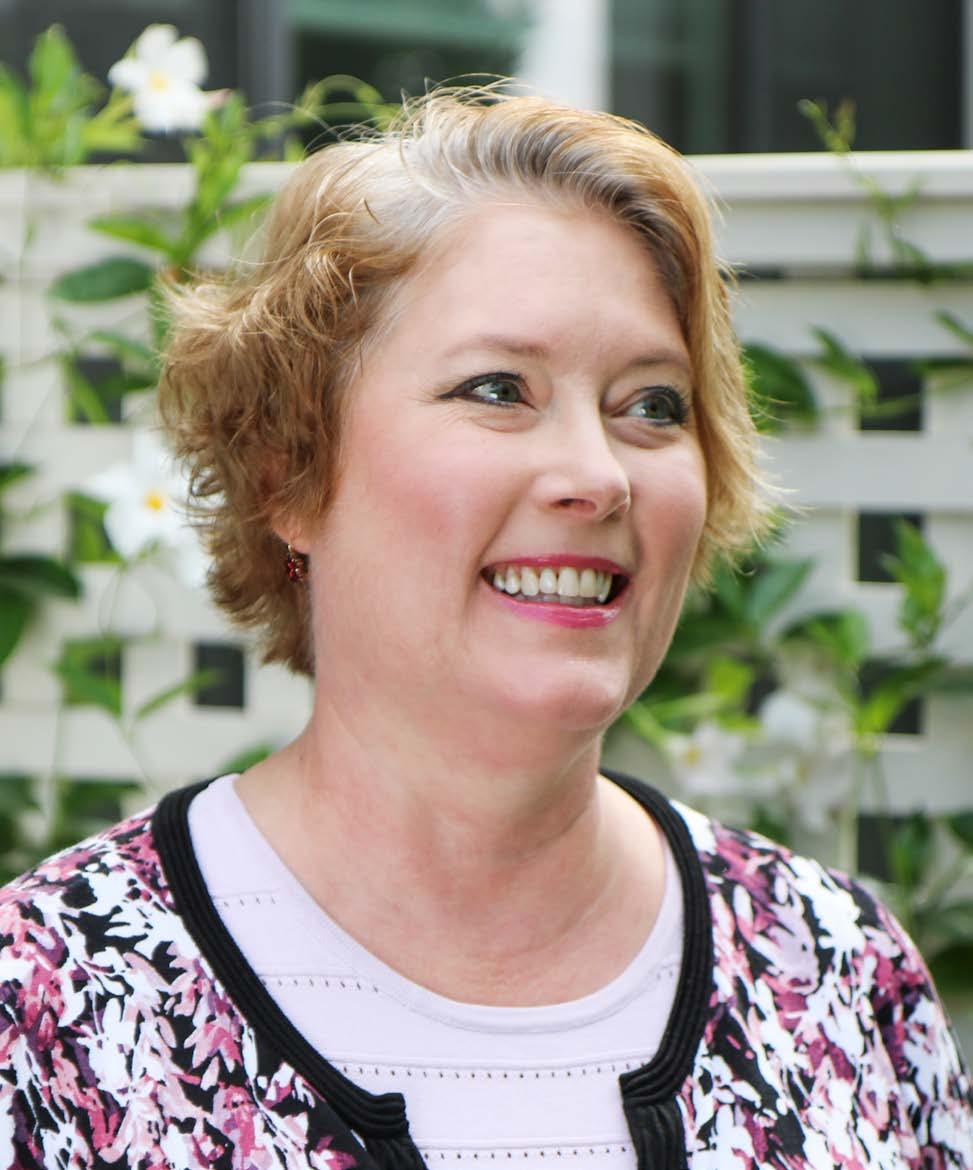
BY JONAS WEIR
HR veteran Lisa Perez is founding a nonprofit to both address Minnesota’s talent shortage and help immigrant populations
Human capital is the US economy’s most valuable asset. That’s not just a positive sentiment from the HR department; it’s a fact. A study by the Korn Ferry Institute shows human capital outvalues physical capital nearly four to one. The institute, however, projects that a global shortage of talent will cost the world economy $8.5 trillion in unrealized revenue, and the United States is not immune.
Lisa Perez sees this issue as not only a problem but an opportunity to help. Her own state, Minnesota, is facing its own talent shortage head-on. In fact, a 2011 survey by the Minnesota Department of Employment and Economic Development found 47 percent of the state’s businesses had unfilled jobs due to a lack of qualified applicants.
“It’s a huge problem that we face in the state of Minnesota,” Perez says. “Our leaders, both in the public and private sectors, are very clear that we have a talent shortage crisis. By the year 2020 we are estimated to be short 250,000 workers in our region.”
With more than twenty-five years of corporate HR expertise, Perez knows the challenges of talent acquisition firsthand. She saw talent shortages in the food service industry in her most recent role as vice president of talent management at Buffalo Wild Wings. As she looked for solutions to this very real talent crisis, she turned to her local community for inspiration, and one staggering fact inspired an “aha” moment for Perez: Minnesota accepts more refugees than any other state. With just 2 percent of the nation’s population, the state is home to 13 percent of the country’s refugees. The idea for the Prosperity Ready was born.
Prosperity Ready
Lisa Perez
Founder & CEO
Prosperity Ready is a nonprofit with the mission to develop the vast potential of immigrants to help overcome our talent shortage crisis and enable organizations to reflect the communities in which they serve. Subject matter experts with the organization focus on bridging the gaps in the employment lifecycle for immigrant talent. This lifecycle addresses everything from sourcing talent to training and development to retention. Although the organization is still seeking additional funding through donations, Prosperity Ready is now a sponsored project of the Social Good Fund, a nonprofit, full-service fiscal sponsor.
“We are excited to sponsor Prosperity Ready and look forward to seeing their vision and mission realized,” says Oliver Hack, executive director of the Social Good Fund.
That vision and mission is to support the full continuum of the employment life cycle to build a skilled, robust, and reliable talent pipeline. With these goals in mind, Perez reengineered the employment life cycle for immigrant populations.
“Rebuilding a life cycle that addresses specific needs of the immigrant population is not something that is being done in a holistic fashion by subject matter experts,” Perez says.
Perez’s expertise will be vital throughout the entire life cycle because she knows how important each step of the process is, from recruitment to onboarding and continuing development. Over the course of her career, she held high-level HR roles at many large corporations across many industries, including Accenture, GE Healthcare, and Kohl’s. In those positions, she saw how much high turnover rates could impact companies, and she learned to address those issues through everything from providing positive leadership
*“By focusing on refugees, Lisa is not only giving back to underserved communities, she’s also building a framework that will solve real-world problems. Her hard work, passion, and innovative approach will bridge the gaps in the employment life cycle for immigrant talent. This pilot program is one to watch out for—because it has the potential to transform not only big corporations but entire industries, such as hospitality and retail. It will identify and develop the needed capabilities, and make connections to future talent.”
—Magda Yrizarry
to implementing company-wide HR tools. Now, as CEO and founder of Prosperity Ready, she will be pivoting her skills to a new, more niche mission.
“This whole process is where I’ve lived for the past twenty-five plus years,” Perez says. “It’s really about aligning talent and sourcing to connect corporations with settlement agencies. It’s the same steps as a traditional life cycle; just different techniques.”
Essentially, Prosperity Ready will partner with nonprofits to find and develop potential talent and with corporate partners to ensure employers are equipped to receive diverse, ready-now talent.
On the nonprofit side, Perez is looking to partner with immigrant and settlement agencies to connect with immigrant populations. Additionally, she would like to work with nonprofits that are already established in providing services to these communities. She points to organizations like Comunidades Latinas Unidas en Servicio (CLUES)—which has been working to empower and engage the Twin Cities’ Latino population since 1981—as vital resources in this space.
“We provide holistic, family-centric training opportunities in the community, thereby creating new career pathways for Latinos,” says Ann Meyers, CLUES’ associate director of employment and career development. “It is important that employers look to the talent our programs are creating for their staffing needs and make solid commitments to hiring newly trained, qualified applicants.”
While CLUES can help to prepare immigrant populations for the workforce, Prosperity Ready’s team of subject matter experts can provide training for corporate partners on how to create culture
shifts to be able to hire and retain the diverse workforce.
On the corporate partner side, Prosperity Ready will work with large corporations to connect them with talent and educate employees on onboarding, developing, and retaining immigrant talent. Initially, Perez says that the nonprofit will be looking specifically at addressing the gaps in the hospitality, retail, and restaurant industries, but she hopes to eventually branch out to manufacturing. The Minneapolis-St. Paul metropolitan area is rife with potential partners. The area is home to Target, Dairy Queen, Coffee and Bagels, Best Buy, Famous Dave’s, and many other corporate headquarters that are a part of key industries for Prosperity Ready.
In connecting corporate partners to immigrant talent, Perez sees many benefits. First, there is a wealth of potential in immigrant talent. She says many immigrants arrive in this country with many skills, some that are innate traits— such as tenacity and loyalty, that many argue cannot be developed in training programs. The next is that connecting immigrant talent will bolster many companies’ diversity and inclusion initiatives.
Addressing this talent shortage head-on by tapping into the immigrant and refugee talent pipeline is a passion of Perez’s for many reasons. Not only will it will help the local business community, more importantly, Perez sees this as a way to give back to underserved communities, and giving back has always been important to her.
“I think it’s always been part of my DNA to want to help those who are in need,” she says. “This is something that we have to figure out from a social perspective, a moral perspective, and a business perspective.”
Moreover, she is impassioned to help serve the local Latino popula tion. Although Perez is not Hispanic, her husband is, her son is, and feels that her husband’s grandparents’ story of immigrating to the United States from Mexico is emblematic of what makes Minnesota such a re markable community to serve.
“Our Latino community has been here since the 1900s,” Perez says. “When immigrants like my husband’s parents arrived in the Midwest, they built institutions for support. They created unions, churches, arts collectives—all to make sure that they have the support and infrastructure that they need to be successful. In addition to building institutions, settlement agencies have become a draw for immigrants and Latino immigrants. So, it’s become well known that people will get solid support here.”

Bridging the gaps in the employment life cycle for immigrant talent by offering years of experience in the following areas:
With all these factors to inspire her, Perez is officially launching Prosperity Ready with a pilot program in 2019. The pilot will work with 18–20 immigrants over the course of six months to assess the validity of her reengineered employment life cycle. With her passion, HR expertise, the clear need for solutions to the talent crisis, and the innovate idea behind Prosperity Ready, Perez feels confident this ambitious endeavor will succeed.
Let us work with you to build a skilled, robust, and
Immigrant Talent and Entrepreneurship
CURATED BY KATHY
DESIGNED BY ANNA
KANTORSKI
JO BECK
13.5% of the total US civilian labor force are immigrants1 17%
of the US population is foreign-born, more immigrants than any other nation1 in business income is generated by DACA-eligible entrepreneurs2
$658.7M of DACA-eligible immigrants sixteen years and older are employed2 90% of the employed are entrepreneurs, as federal and state laws do not require proof of immigration status for the formation of a business2
4.5% of all US immigrants are from Mexico, the top origin country of the US immigrant population1 26%
A Statistical Story
Profile of Latino Immigrant Millennial Entrepreneurs
Age: 18–34
Education: College degree(s)
Languages: English (fluent) Spanish (semi-fluent to fluent)
Company size: $1M+
Characteristics:
Higher rates of entrepreneurship than their permanent resident/citizen counterparts, due to an attraction toward business ownership as part of acculturation, also due to limited opportunities in employment as a result of immigration status
Strong social networks through civic engagement and advocacy
1 Pew Research Center
2 New American Economy Research Fund
3 “2017 State of Latino Entrepreneurship,” Stanford Latino Entrepreneurship Initiative
4 “The Power of All,” Latino Donor Collaborative
New Tools, TimeTested Values
Marta Ramirez combines modern tools and homegrown traits to deliver a winning mentality for DB Schenker
BY KELLI LAWRENCE
Global logistics are the backbone of DB Schenker. Whether it’s via the air, land, or sea, seamless integration in the flow of goods and services is how the company has made its name for more than 140 years. Today, HR operations, based out of DB Schenker’s Americas headquarters, are just as seamless—and chief human resources officer Marta Ramirez makes sure of it.
“In 2015, we embarked on the PRIMUS journey, embracing a sustainable transformation process that is focused on specific strategic initiatives in the fields of growth, efficiency, and culture,” Ramirez says. “It’s exciting to work with these three pillars—efficiency goals, growth goals, and an entire culture shift—knowing that HR is a driving force behind the change.”
It hasn’t always been this way, though. When Ramirez joined the company in spring 2016, she did so knowing the company was in the midst of a transformation journey—specifically, a journey that focused on top profitability, market leadership, and a winning mentality.
PRIMUS—which is the Latin word for the first—is a response to DB Schenker’s

CHRO, Americas Region
Marta Ramirez
DB Schenker
intent to grow and strengthen its global relevance. In the Americas region, particularly in the United States, the goal is transformation, and by Ramirez’s account, it’s working. “We are taking customers further by attracting the right talent,” she says. “We are pushing the limits to pursue new productivity drivers, and we live the behaviors of our six values to become a global market leader.”
With the goals of efficiency and growth in mind, DB Schenker is getting ready for the future. With the recent launch of NearMe, a digital recruiting platform, candidates can search for hourly jobs and book themselves based on skills and availabilities. Ramirez sees the online portal as a vital tool for attracting blue-collar workers—which make up more than 65 percent of the DB Schenker workforce in the United States—and particularly satisfying for those seeking flexible work schedules. When partnering with renowned customers within contract-logistics operations, a platform like NearMe is more important than ever to address recruiting needs.
The same might be said of Co-Relate, a tool that DB Schenker’s HR innovation/ digitization team recently introduced as a way to get real-time, near-instant, employee feedback on engagement and during exit interviews.
“The tool itself can interpret the text fields written by employees and analyze them in terms of feedback and action plans,” Ramirez says. “We’re implementing many state-of-the-art tools that can help us better understand how to keep
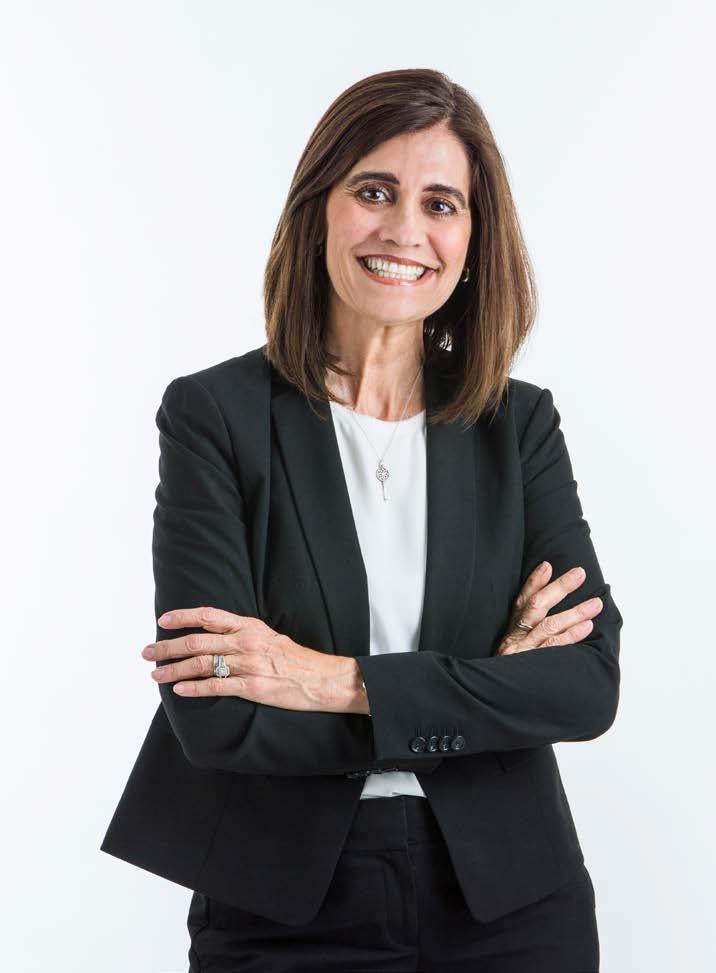
*“Digitalization is critical to talent strategy. As evidenced in the tools Marta is rolling out at DB Schenker, people are more digital than ever before. You have to be where people are and keep it simple from their perspective. Empowering people to match their own skills to specific jobs that also work for their schedules is a smart way to attract and retain talent.” —Magda Yrizarry
employees engaged and also develop action plans around the feedback they’re sharing. It is leading-edge, and we love it.”
Still another new tool in Schenker’s HR arsenal is a project called AIR (Attract/Invest/ Retain). The result of a partnership between HR and the contract-logistics business unit, the tool is designed to help better understand how to attract and retain employees.
“We’re putting together an action plan for quick wins, as well as long-term actions to help us approach the PRIMUS goal of being a preferred employer,” Ramirez explains. “Now that we’ve been able to look at various areas, we can fine-tune all the different programs we have, targeting them toward what the employees are saying and the way that they’re looking to leaders for guidance.”
There is an incredible amount to learn from a leader such as Ramirez. A Cuban immigrant who spoke very little English when she arrived in the United States at age nineteen, Ramirez worked the ramp for American Airlines with fifty-seven men. That job translated to sixteen years of ever-increasing seniority with the company. It was there that she found her path to a career in human relations. Fourteen additional years of HR leadership followed and reinforced her place as a leading force in the industry.
Crediting family-learned traits— such as service, perseverance, and a strong sense of faith—Ramirez adopted a servant-leadership style that is designed to enrich the lives of those around her. By working directly with her team and joining in their struggles, she finds her ability to serve—and thereby, strengthen— her team. “Yes, I am the leader,” Ramirez says. “But my highest priority is that my team understands what needs to be accomplished. I’ll be here to support them in unleashing their potential while they become more robust, more impactful in the way they interact with others, and achieve results.”
The support Ramirez offers has been especially valuable in helping DB Schenker in its culture transformation. Throughout this transformation, she underscores having managers focus on the employee-relations agenda. “To me, it is key that in every circumstance, we think of our employees as people—not as numbers or subjects,” she says. “Our approach is to take the time to listen to the people and give them a chance to make successful contributions every day.”
“Marta Ramirez models the strategy and tactics required of an inspiring servant leader. She’s a world class executive who has proven that employee engagement at every level is an essential executive skill. It is a pleasure and an honor to work with her.” —Brooke Bovo, Principal, Bovo-Tighe, LLC
Marta Ramirez, the entire Bovo-Tighe team wants to publicly congratulate you for exemplifying everything an outstanding executive can be. Your recognition in Hispanic Executive is hard earned and well deserved. We are proud to have partnered with you on DB Schenker’s leadership initiatives. May your achievements continue to inspire every life you touch. Including ours.

How To
A tactical guide based on the writings of Dr.
Robert Rodriguez
and Andrés Tapia
BY KATHY KANTORSKI
How will we advance Latino leadership in corporate America? This is the million-dollar question— or, more apt, the $2.13 trillion question, looking at the GDP of the Hispanic community.
The Hispanic community. What a powerful group. And, at the same time, what an underrepresented group in the power structure of American business.
The answer to the aforementioned question?
“Power will come when forged through collaboration, because it leverages our strength [as Latinos] in building relationships,” say Dr. Robert Rodriguez and Andrés Tapia in their book, Auténtico: The Definitive Guide to Latino Career Success. “Yet we must accept that we won’t always
maintain simpatía with others when we are advocating for the advancement of the Latino talent agenda. We have to learn and accept and live with uncomfortable power dynamics instead of perpetuating our acquiescence. …
“We can all rejoice when every Latino executive has a ready answer when asked, ‘What have you contributed to the greater Latino collective?’”
Recruit Develop& Latino Talent
So, what’s your answer?
Recruiting
Whether or not you are directly in charge of talent acquisition, you can influence hiring efforts with your knowledge of Latino strengths and culture. Ensure culturally sensitive screening during interviews. When creating a profile of competencies and qualifications for the ideal candidate, keep in mind these six generalized and normed differences between European-American and Hispanic cultures (note that not all Latinos and not all European-Americans behave according to these documented generalities).
Cultural Dimension
Locus of control
EuropeanAmerican Hispanic
Internal control (God helps those who help themselves)
Ascribing status
Identity
Egalitarianism
External control: Si Dios Quiere (God willing)
Hierarchy/Paternalism
“We”
“I”
Process Follow the rules; rules apply universally Go with the flow; context dictates fairness
Managing emotions Stiff upper lip: Don’t show emotion
Time management
Clock-oriented
Pura vida: Embrace and show emotion
Event-oriented
If any of these cultural dimensions is critically important to success in the role, consider whether it can be a point of training and development before ruling out candidates who possess it. At the same time, find the balance between forcing assimilation and valuing diversity.
“Advancing Latino talent requires everybody,” Tapia says. “It requires talent to step it up, and it requires organizations to adapt and accommodate … to develop Latino talent in a way that speaks to their ‘Latinicity.’ How can you encourage and invite Latinos/Latinas to be more themselves?”
In his work at Korn Ferry, Tapia collaborates with his colleagues on offering their clients a program called The Power of Choice, geared toward talent that is underrepresented. The program is based on research evaluating the confidence levels of executives in three areas that have an impact in their ability to achieve their career goals: social/relational, political/influential, and technical. “All three
Development Mentorship
“Our Latinx professionals collectively felt that older, more successful Latinos are not providing much help or mentoring,” say Tapia and Rodriguez in Auténtico “Either there were few or no Latinos to look up to in their organization, or the Latinos they did have as mentors or role models failed to help them, sometimes even making it harder for the Latinx generation to succeed.”
The sentiment seems to be that Latinx professionals believe they are seen as competition, and successful Latino exec -
are necessary for professional success,” he explains.
Yet when Korn Ferry filtered its research by affinity, they found that the groups underrepresented in corporate leadership (Latinos, African-Americans, Asian-Americans, and females) devalued or underestimated the importance of the social/relational area and overvalued technical prowess. The result? These minority groups had more education and skills training, yet smaller networks.
To address this, Tapia emphasizes the importance of professional mentorship/ sponsorship programs. “These programs are so important,” he says. “They enhance the social/relational and political/ influential wherewithal of talent.”
Another area of development that he recommends is in teaching calculated
risk. This point is illustrated by an experiment he describes: a group of businessmen and women were taken to a room where three ring-toss games were set up, each at a different distance from the player. The closest target was worth a few points, the middle was worth a medium amount of points, and the furthest was worth an extraordinary number of points. Each person was given one ring to toss. Patterns emerged based on the affinity group of the player. Latinos and women threw the ring toward the closest target—the safe bet. Where did the white males aim?
“One might assume the furthest target, but actually, white males threw their rings to the middle, because it was the calculated risk,” Tapia notes.
Being adept at taking calculated risk is a valued trait of high-level executives and should be a key point in talent development programs.
utives are not willing to sponsor them to advance the careers of the younger generation.
The Latinx group recognizes this, yet they also abdicate responsibility for making a change. Tapia and Rodriguez report: “While young Latinos lament the lack of Latino role models and Latino mentors, when asked if they mentor young Latinos, almost two-thirds indicated they do not.”
So the issue is perpetuated. It’s clear that the entire community of Latino executives must adopt a pay-it-forward mindset in order to break this chain of individualism. Iremos más lejos juntos que solos. We will go further together than alone.
A 10-Point
An audience-centric how-to for furthering the success of Latinos/as published in Auténtico: The Definitive Guide to Latino Career Success
Corporations
1
Shed the self-image that you are color-blind, and instead proactively address the conscious and unconscious biases that have kept Latinos from rising to the height of our potential.
2
Be willing to adapt to and capitalize on the differences that Latinos bring to corporate culture. Embracing Latino culture will create more inclusive environments for Latino talent and equip companies to better serve Latino consumers and clients. Non-Latinos will benefit from Latino cultural assets in the same way Latinos have been enriched by other cultures. Latino Leaders
3
Engage with and resolve your own cultural identity. Conclusions will vary for each leader about what this means for them, so we must allow for variances. But this can’t be ignored and the sooner it can be addressed, the more effective Latino leaders will be.
4
Reclaim our communal spirit to overcome intra-Latino divides. Focusing on our national, socioeconomic, and regional rivalries leads to a lack of unity and weakens the power of our numbers, our institutions, and our leadership.
5
Give back to the community. True excellence requires leveraging high personal achievement reached to help others achieve success. The journey of the Latino executive is incomplete if they don’t give back to others.
Latino Community
6
Embrace ambition as an honorable talent. While maintaining humility, we also must not be naïve. No one is going to hand us opportunities if we are not openly seeking them. The community should celebrate those who demonstrate this ambition because we all benefit.
7
Double down on the relentless pursuit of higher education and rally behind it as a civil rights issue. Latino college attendance is trending upward and we need to accelerate this trend significantly by any means necessary in the face of massive budget cutbacks. Education is the greatest bulwark against hostility and biases, and for achieving the highest levels of leadership.
8
Get over our ambivalence about power by claiming more of it and redefining it on our own terms. Where ambition is personal, power is collective. The impact of Latino power in corporations, government, and society is incongruent with our massive numbers. Yet, even as we operate with more power, we must contribute to a differentiated way of wielding it.
Next-Generation Latino Leaders
9
Pursue the path of a bicultural identity. Resist assimilation. Instead develop a differentiating AmericanLatino identity that embraces and celebrates the multiple influences of mainstream American culture and that of one’s specific Latino heritage(s).
10 Master the rules of corporate culture so you can break them when the right time comes. Master the rules of your own culture, as well, and in the crucible of being a successful Latino in corporate America, find ways to have both cultures shape and influence each other. In this, create the conditions for greater creativity, innovation, and transformation.
An Evolution, Seventy Years in the Making
Evolution,
BY KELLI LAWRENCE
There’s an easy way to see how Varian differs from other organizations, and that’s by noting the official job title of Terilyn Juarez Monroe: chief people officer and senior vice president of people, places, and communications. Her title might be long, but it brings context to the term “human resources” in a way the mere words cannot. Her organization uniquely combines three organizations under one umbrella to align and coordinate the company’s business strategy with its people, workplace, and communications strategies.
In a similar vein, Varian’s vision of a world without fear of cancer is far more to the point than the actual name of the cancer care company. Given that Monroe’s mother was so frightened by
Makingher own cancer diagnosis that she did not tell a single family member about it for two months, Varian’s vision fiercely resonates with Monroe.
If that wasn’t enough to entice Monroe to come on board with Varian in 2017, the company’s plans for the future were focused on extending beyond the radiation therapy machines for which Varian is best known.
“To do this, Dow Wilson (CEO of Varian) and the leadership team became laser focused on putting our customers and their patients at the center of our thinking,” Monroe says. “This had us thinking more about the entire cancer treatment journey, the patient’s care team, and how software, data, and analytics could be used in new ways to improve patient outcomes.”
Varian’s new focus keeps Terilyn
Juarez Monroe on her toes—and she couldn’t be happier about it
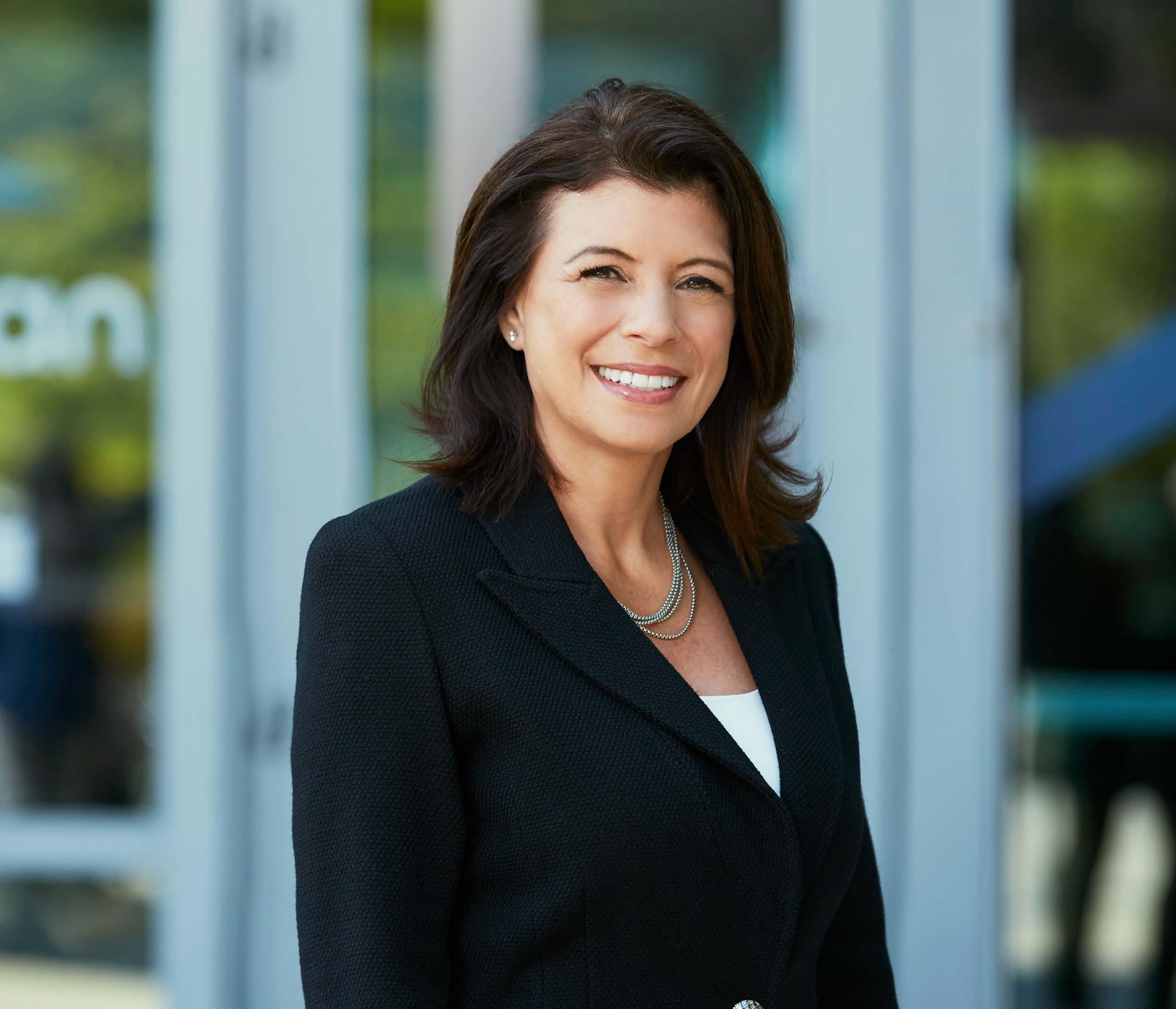
Chief People Officer & SVP of People, Places, and Communications
Terilyn Juarez Monroe
Varian
“This is a pretty special place,” she says. “We are proud of our seventy-year history and at the same time, I—along with our approximately seven thousand employees around the world—are continuing to evolve both strategically and culturally to find new ways to beat cancer. It’s really exciting and a rare opportunity.”
Fortunately for Varian, Monroe brings an impressive amount of depth to the arena. Born and raised in California’s Bay Area with a Central American-born father and a mother whose roots stretch back to Italy, she was the first in her family to graduate college. She came to the corporate world by way of a college internship when she was pursuing a degree in journalism/mass communications. During a thirteen-year run at computer software giant Intuit, Monroe met a mentor that challenged her to move out of her communications comfort zone into bigger roles outside her area of expertise, such as employee engagement and HR business partnering. She eventually took over the role of chief diversity officer at Intuit, and her efforts led to her being named one of the Top 50 Diversity Professionals by Economist magazine in 2015.
“One of the key things I’ve learned over the years is that we need to balance two things: getting the right business outcome while creating the best possible experience for people,” she says. “Our team is in the people business, the experiences people have and the way they feel as a result are what attracts them to a company, and that’s what makes them stay.”
“Our team is continually looking at ways to infuse culture into the moments that matter most.”
Varian had established four core values—Customers First, Inspired Innovation, Partner for Life, and Doing Well by Doing the Right Thing—long before Monroe arrived, and as the company continued to evolve, it became clear that the company’s values were enduring and stood the test of time. To complement the company’s values and to reinforce some new mind-sets and behaviors, Varian created a new set of cultural beliefs. The crisp statements, their descriptions, and their associated competencies are designed to accelerate its strategy with new expectations: Beat Cancer, Engage Now, Inspire People, Act as One, and Count on Me.
Monroe says these beliefs have been rolled out through a series of culture workshops at Varian offices worldwide. Rather than the workshops being led by consultants or HR teams, Varian’s leaders serve as the teachers, role-modeling and describing the beliefs in a way that she hopes will prove much more meaningful and relatable. In due time, she says the beliefs will inform the end-to-end experience people have with Varian—whether they are hearing about what makes Varian special for the first time, interviewing for a job, collaborating within or across one of its campuses, receiving performance feedback, or volunteering in the community.
“We are a purpose-driven company, and our cultural beliefs reinforce who we are, what we do, and what makes us special,” Monroe says. “Our team is continually looking at ways to infuse the culture
*“Terilyn understands that you can’t be a great company without great people. And you can’t deliver superior employee and customer experiences without taking the time to listen, learn, and inspire with purpose. Change is never easy, but by rolling out culture workshops, creating an inclusive environment, and role-modeling, the company will reach more meaningful results.”
—Magda Yrizarry

into those internal and external experiences and the moments that matter most.”
Leadership development is another key step in Varian’s transformation.
Monroe and her team, along with management, are focused on building leadership capabilities to drive business growth. “During times of change, every day brings a new opportunity for growth for our company and for each us leading teams,” she says. “Ensuring leaders can confidently lead change while creating an inclusive environment and appreciating and applying the learnings along the way is critical for our success.”
To that end, Varian will hold its first-ever CEO leadership conference for Varian’s senior leaders from around the world this year. Since Monroe came
to Varian, it’s been a “first-ever” kind of time for the company in many regards.
With the kind of growth it’s experiencing—four acquisitions in the past year, for instance—she believes there’s no time like the present to keep the “why” (its vision) and the “how” (its newly-stated cultural beliefs) front and center.
From the feedback she receives from employees, it appears their efforts are already making a positive impact.
“People are saying, ‘Yes, we want to be part of this evolution, and we’re ready for it,’” she says. “We’re a seventy-year-old company with a rich history, an amazing purpose, talented and engaged employees, and a very exciting go-forward strategy. There’s something very special about that.”
INSIG HTS Insights
The philosophies of innovative leaders have the power to inspire and spark change. Read on for the thought-provoking insights of these successful executives.
104 Pedro Ejzykowicz, Southwest Generation
109 Dennis Calderon, Inseego
112 Jessica Gonzalez, BP
118 Josean Fernández, OppenheimerFunds 121 Marti Cortez, Ameren
Allow and Advertise Mistakes
BY JOSEPH KAY
CFO Pedro Ejzykowicz creates a risk-embracing culture to power Southwest Generation’s next chapter
PORTRAITS BY CASS DAVIS
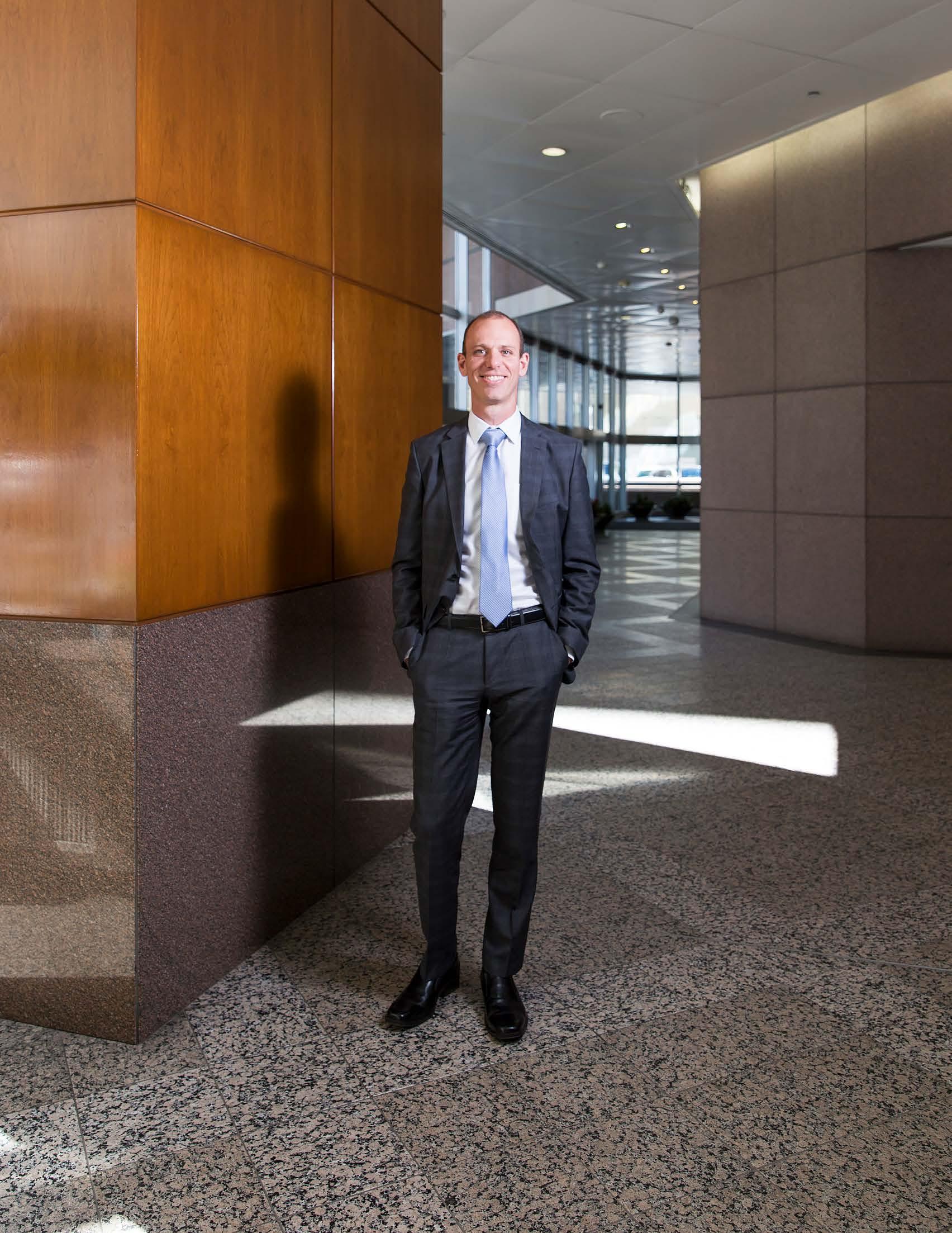
PEDRO EJZYKOWICZ HAS NEVER LIVED SO FAR FROM THE OCEAN.
The son of second-generation Polish immigrants, Ejzykowicz grew up in Rio de Janeiro. When he announced he was leaving for the United States in 2003, his parents were hesitant: the family had a relatively stable and comfortable life in Brazil with opportunities that not everyone had. Ejzykowicz, however, still felt too close to robberies, kidnappings, and death, and the year he had spent studying in Germany as an undergrad offered him a vision of a different way.
“My parents’ perspective was, ‘We saw how difficult it was for our parents, and now you are second-generation, and you have access to all these things. Are you sure you want to give that up?’ And I said yes,” he says. “I wanted to give it a try because I thought that it would be best for my family.”
As he ventured north to the United States, Ejzykowicz stayed near water, living in New Orleans and southern California. When his big opportunity came knocking, it meant moving to Denver—away from the ocean and into the mountains. For that move to be worth it, he needed a special opportunity: a growing company in an evolving industry with stellar mentors and opportunities to learn.
In 2014, he met John Foster, who was consulting with an independent power generation company called Southwest Generation (Foster would later become the company’s CEO). At the time, Foster was working to restructure the company, sell assets, and refinance debt to position Southwest Generation for future growth. Ejzykowicz previously worked in bankruptcy and restructuring, and knew he could help stabilize the company. The real question was whether Southwest Generation would turn the corner and become a growing company that would challenge his professional capabilities.
Knowing it was a risk to uproot his family and move to Colorado, Ejzykowicz decided to accept the challenge. In 2015, he came aboard to handle finance and accounting, and the company named him CFO in 2017.
“I always had an entrepreneurial spirit, and if I could be entrepreneurial in a smaller environment with other people like me, that would be even better,” he says. “That’s what Southwest Generation presented.”
As CFO, Ejzykowicz is responsible for finance and accounting, overseeing a small but highly skilled team. So far, Ejzykowicz has helped the company move toward a more mature, process-oriented state; automating and streamlining systems that freed bandwidth for more complex projects and strategic planning. The results have been
“It’s really about giving people the opportunity to fail. If you’re in an environment where risk is accepted, you’re going to try things.”
extraordinary. Since 2015, the company has quadrupled, with more growth on the horizon.
Most of this growth came through acquisition, which stretched the organization. Southwest Generation hadn’t completed an acquisition since it was formed in 2008.
“The team here had not really worked on acquisitions and didn’t know how it would actually happen,” Ejzykowicz recalls. “We benefited from having a new accounting system in place by the time we did our first acquisition, but as we continued to acquire more assets, we continued to improve that process, which allowed us to keep the same number of people. That became our competitive advantage.”
Ejzykowicz says he often works outside his comfort zone, so he encourages his teammates to do the same—to attack new projects, develop new skills, and take risks—even if that means failing from time to time. In doing so, his promise is to support them according to their needs and drive them toward new experiences. He points out that enjoyment and competence often have little to do with each other; if you enjoy doing something, it’s worth taking the time to fail and learn from those mistakes, he says.
“It’s really about getting people to build confidence and test their own limits and giving them the opportunity to fail. If you’re in an environment where risk is accepted, you’re going to try things,” Ejzykowicz says. “The point is to understand what you like to do and what you’re capable of doing. Being capable doesn’t mean that you’re going
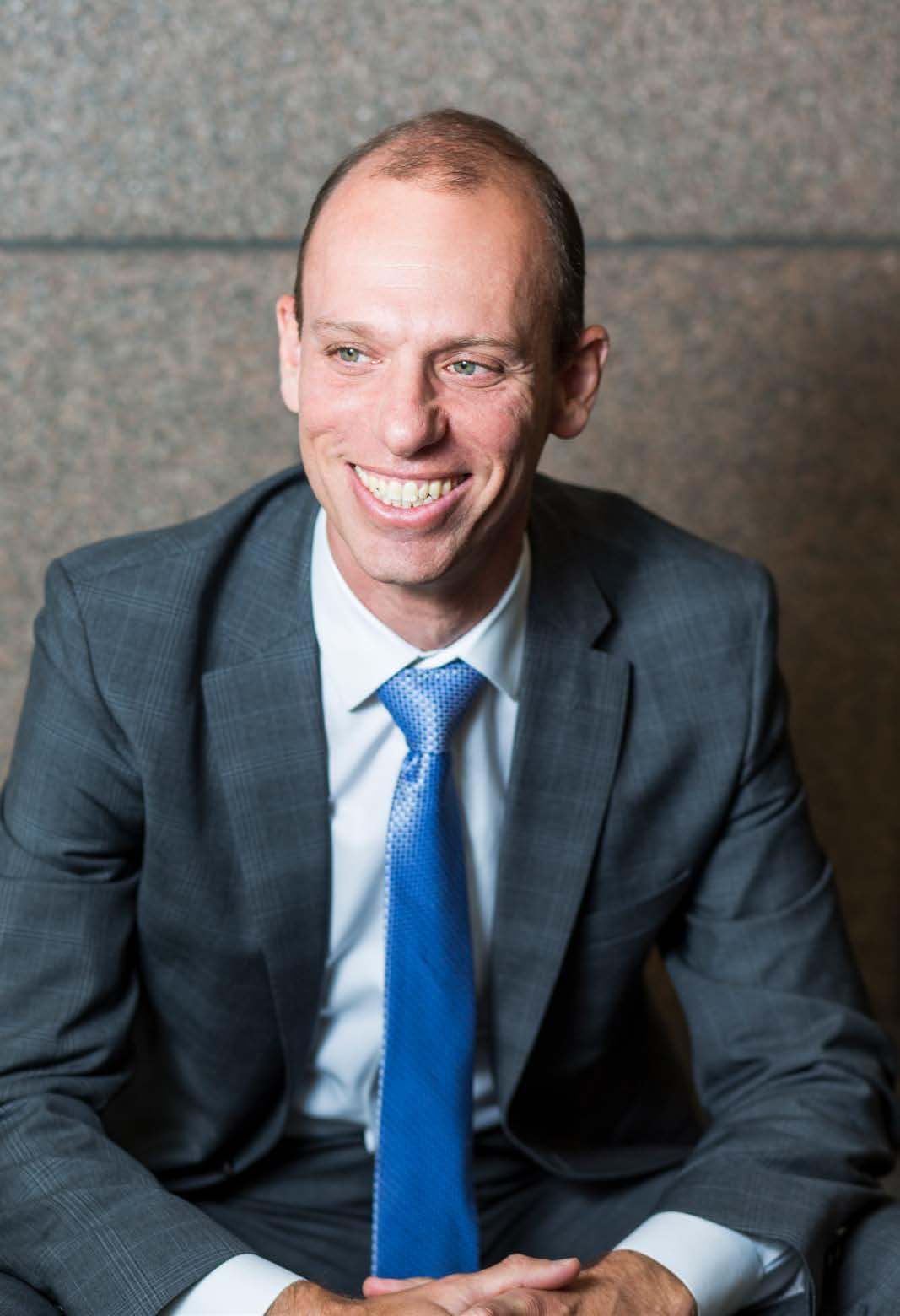
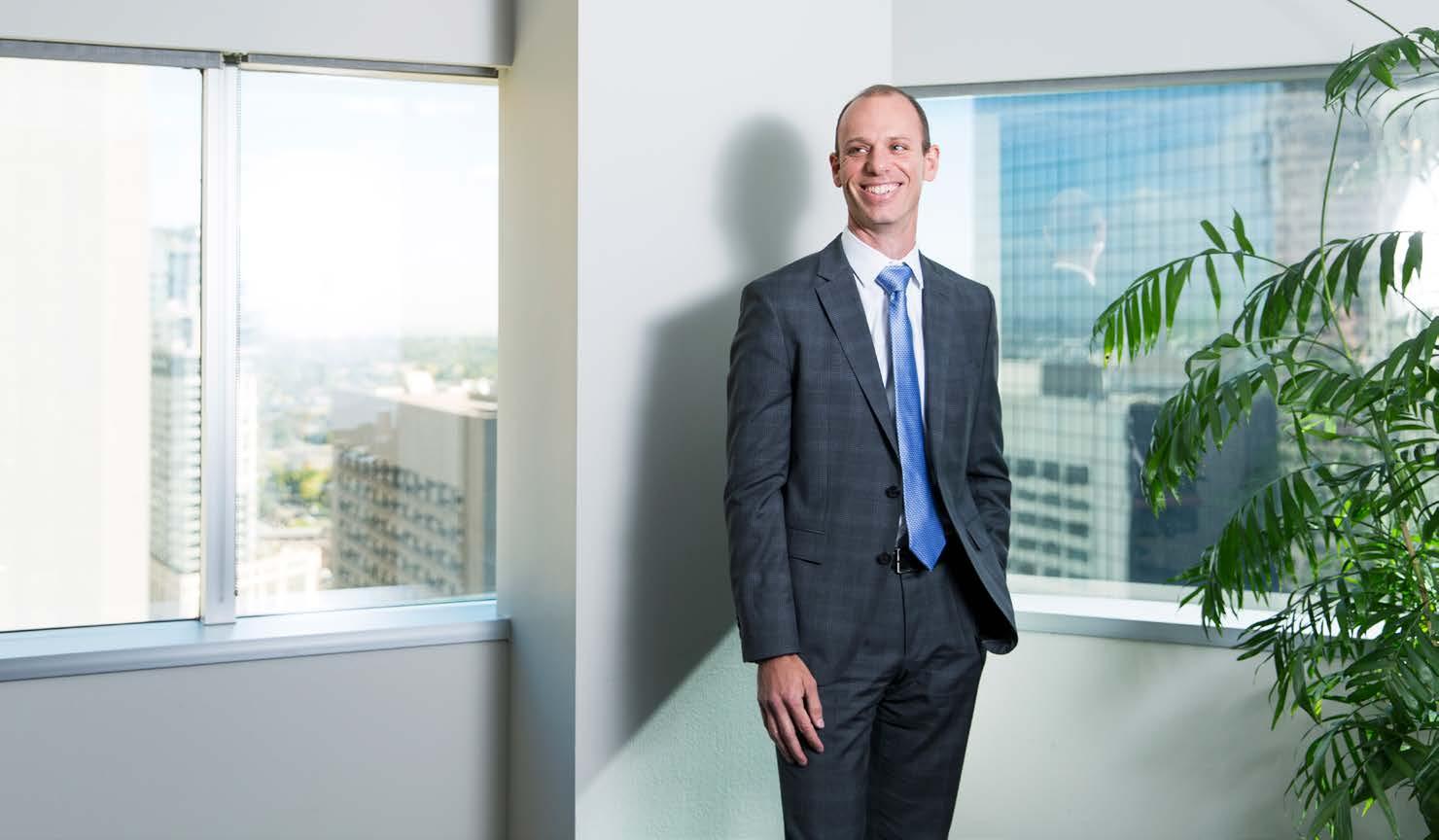
to like it, and not being able doesn’t mean that you’re not going to like it, either. It’s not for me to decide, but to give opportunities.”
In order to make Southwest Generation a safe place to take risks—and, therefore, a safe place to grow—Ejzykowicz does his best to embody that attitude. He makes sure to advertise his own mistakes—more than his successes, he jokes—and to let his team see him asking for help. That way, the team doesn’t conflate asking for help with failure. Ejzykowicz believes it is important for people to enjoy what they do, and visible support can make the difference.
The company’s start-up culture will remain a strength as it continues to grow, Ejzykowicz says. Given Southwest Generation’s current size (fewer than one hundred), all the executives are both doers and strategic thinkers, and the company is evolving from a people-oriented enterprise toward a more process-oriented one. It’s a natural transition,
he says, given the company’s rapid growth in a short amount of time.
“In the executive team, we all enjoy doing the work, but we also have to be strategic,” he says. “As we grow, the capacity to do the work gets diminished over time. I think that’s going to mean constantly looking for ways to improve processes, be efficient, understand risk, and look for the right people.”
Going into these next stages, Ejzykowicz has no doubt that taking on the CFO role at Southwest Generation was the right move. The cold weather in Denver has demanded some adjustments, but he and his wife and two kids are taking the opportunity to try new things themselves.
“It’s a challenge; I try to make it up by going to the pool when I can, but it’s not the same as the ocean,” he says, laughing. “The family really enjoys the outdoors, so we’ve been enjoying the mountains and learning different things: road biking, skiing—all of those.”
Dennis Calderon shares his unique approach to career-building and how it led to a leadership role at Inseego
Your Career is Your Brand
BY JEFF SILVER
ONCE MOST PEOPLE FIND A COMFORTABLE
job, they tend to follow its path in a fairly passive and reactive fashion. Without much long-term planning, they work their way up the ranks or find a position with another company in the same industry.
Dennis Calderon, on the other hand, approaches his career with a different strategy. He believes you should handle your career like a business, constantly refining and reinforcing your brand along the way.
“Running a business, you have to consider your goals, objectives, and strategies for success, and you have to be proactive about recognizing new opportunities,” Calderon says. “Your career shouldn’t be any different.”
Here’s how Calderon built his brand as a technology law expert with a wide network.
FORECAST THE FUTURE
Today, Calderon is vice president of legal affairs at Inseego, but he got his start practicing corporate law at Cooley Godward LLP, now known as Cooley LLP. This was at the dawn of the initial Internet boom, and he saw the possibilities of a career in technology law. His interest in tech law led him to two in-house positions prior to his current role—one at Medibuy, an e-commerce company within the healthcare industry, and NextWave Broadband, a wireless technology company. Each job enabled him to expand his skill set and refine his strengths—building a name for himself in the niche field.
SEIZE OPPORTUNITIES
Calderon did well in the fast-paced, rapid-
growth environment and began to consider opening his own boutique firm that would provide external general counsel services to technology companies. When Medibuy decided to move its headquarters away from the West Coast—a move that Calderon and his wife did not want to make—he happened to have a conversation with a friend and former colleague from Cooley. The firm had a conflict of interest on a project for a client Calderon had worked with extensively when he was there. That client ended up being the catalyst for Calderon launching his own firm, Venture Counsel Group (VCG), and it became VCG’s first core client.
VCG ultimately positioned Calderon to work with a variety of clients in a range of different industries. Furthering his expertise, he gained insight into a diverse set of best practices and other business strategies— everything from conceptual initiatives to day-to-day tactics—that he could then use when working with other clients. For example, in one case, a client tried to negotiate a royalty arrangement for a licensing deal but was unhappy with the proposed royalty arrangement. Using his problem-solving skills, Calderon suggested using a structure that he used with a client in a different industry, and the structure was ultimately adopted for the deal.
BUILD A NETWORK
During VCG’s early years, Calderon reinforced his personal brand and indulged his
“Most of the accomplishments in my career haven’t been the goals I had when I started out.”
interest in entrepreneurship by establishing a series of informal roundtable discussions. He brought in experts in marketing, company-building, and various evolving online platforms and invited friends and acquaintances who could benefit from their advice. The events helped build an entrepreneurial community and enabled Calderon to develop strategic relationships for himself and to help attendees make connections for potential partnerships. Networking is now key to his brand and career.
EXPAND EXPERIENCE
His extended network proved invaluable in helping Calderon to find his current position.
An HR contact from an earlier in-house position put him in touch with the general counsel at Novatel Wireless. The company ended up being a VCG client for a year, and then Novatel offered him the position of in-house director of legal affairs. Calderon recognized the potential to expand his range of experience within a publicly traded company. At the same time, he could leverage the core elements of his brand, which he identifies as being creative, adaptable, efficient, and able to offer insights beyond the typical boundaries of the wireless industry.
“In solo practice, I learned that the legal role is a service business,” he says. “I kept that mind-set when I joined Novatel by responding quickly to clients—which are the principals and managers within the organization—getting to know their businesses and
challenges, keeping them informed, and following through on what I promised. That approach keeps you in business and helps breed success.”
ADAPT TO CHANGE
In 2016, in connection with an agreement to sell the company’s mobile broadband business to T.C.L. Industries Holdings H.K. Limited, Novatel reorganized its business and created Inseego as a parent company. Calderon took over as chief legal officer of Inseego in July 2017. Along with new business prospects and a reinvigorated, refocused, and highly engaged team, this role presented Calderon with new opportunities to further develop his brand. As Inseego establishes a leadership position in 5G and IoT technology, he is developing additional relationships and leveraging his experience to introduce new best practices that help to reduce expenses, develop more beneficial business relationships, and streamline legal operations.
“Most of the accomplishments in my career haven’t been the goals I had when I started out,” he says. “Now, I have a chance to be part of something very exciting—something I would have missed if I hadn’t stayed in touch with my own strengths and interests and with what was happening around me every step of the way.”


























Weintraub Tobin is a full service law firm that believes in outthinking to get better outcomes.
Weintraub and its Intellectual Property Group are pleased to work with Dennis Calderon and Inseego Corp. Our IP attorneys have extensive legal experience and specialized academic backgrounds that help our clients achieve their business objectives throughout the U.S. and abroad.
Reading a Room and Leading in Legal
Jessica Gonzalez uses soft skills to further her success as a senior counsel at BP
PORTRAITS BY GILLIAN FRY BY KELLI LAWRENCE


Jessica Gonzalez | Senior Counsel
JESSICA GONZALEZ TENDS TO READ A ROOM WITH MORE EASE and accuracy than the typical corporate attorney. While her fourteen years with BP America Inc. surely helped her hone this skill—particularly regarding internal and external teams with whom she engages regularly—she knows there’s much more to it than that.
The learned skill stems from years of heightened awareness waiting for her father to come home from work. Did he walk in easily tonight, or drag his feet? What were the first words out of his mouth? Were they loud and/or slurred? Did he seem happy or have a sadness in his voice? The answers to those questions determined whether it would be “a good night” as a family or a night spent holed up studying, away from the alcoholic dysfunction downstairs.
It’s a harrowing way to grow up, but Gonzalez, who describes her beloved late father as a functioning alcoholic in denial of his addiction, learned to parlay the hand she was dealt to her advantage.
“There are lessons you learn as a child of an alcoholic that stay with you your whole life,” she says. “How that plays out in the workplace is very clear to me to this day. When I am on any team, I can see where there are potential frictions. You’re so attuned to tone, undercurrents— things that aren’t visible to everyone else in the room. So, if someone on a team is getting annoyed with me, I know when to throw in the humor to diffuse the situation, to keep the unit working as a family.”
Such attunement is crucial at a place like BP, where Gonzalez moved up into the role of senior counsel in 2010.
“This is a company that’s based on relationships,” she explains. “The ones we make, and the ones we nurture. . . .how you get things done, who you talk to, how you pool the diverse knowledge of different people and other teams into your team to address specific issues that may have a lot of different stakeholders.”
The company is rooted in core values, known by the acronym SRECO:
Safety : a concern for any company in the oil/gas industry
Respect : for our differences as well as what connects us
Excellence: what each employee is expected to strive for
Courage: speak-up culture
One Team: multiple teams, or stakeholders, uniting as one
The One Team value is particularly resonant with Gonzalez, whose small but nimble team of environmental specialist attorneys engages with everyone from commercial lawyers and labor and employment teams to intellectual property and technical engineering teams. The more daunting the terminology—be it with greenhouse gas issues or the intricacies of an oil refinery or gas pipeline—the more she values the strong rapport she has built over time with the experts behind these teams.
“We know how each other works, we know our push-points, and we know where the gaps are in each others’ knowledge bases,” she
“There are lessons you learn as a child of an alcoholic that stay with you. ... You’re so attuned to tone, undercurrents— things that aren’t visible to everyone else in the room.”
“The tech people must think, ‘I can’t believe I have to explain this to these lawyers again.’ But that’s where the rapport—and sometimes humor—comes in.”
explains. “We know that lawyers have gaps in understanding the technical nature of a question. They can explain to me the legal question they might have, but I have to understand the bigger picture in order to answer it.”
The bigger picture is even more challenging when you take into account all the varieties of personnel involved in an issue at, say, a BP refinery. Gonzalez in the lead attorney role, at least one corporate-level technical expert, an expert from the site itself, and often outside counsel at the state or local level as well. It requires immense patience and proper communication, Gonzalez says, for everyone to understand the issues at hand, the risks involved, and the interplay among different pieces of equipment in a refinery to resolve the issue to everyone’s satisfaction. She admits the technical trajectory can be tough to follow, even after all this time in the oil and gas industry.
“I can only imagine it from the other side sometimes,” she laughs. “The tech people must think at times, ‘I can’t believe I have to explain this to these lawyers again.’ I get that. But that’s where the rapport— and sometimes humor—comes in, and above all else, you have to make sure you’re listening. That’s the most important thing.”
Gonzalez’s soft skills—listening, communicating, being a team player, etc.—keep her busy beyond her regular BP duties. In addition to being the communications co-lead for the in-house women’s network, BP WIN, she also worked with the Latinx business resource group Energia and has served a term with BP Legal’s US Diversity & Inclusion team. With regard to the latter, Gonzalez says it’s important to note that, while longstanding relationships with external counsel are cherished, visibility to upcoming diverse attorneys is a priority.
“I’ve said to some of them, ‘I love working with you, but who else do you have? Who’s moving up in the ranks?’” she explains. “We, as clients, have the ability to demand that.”
On top of all this is the fact that Gonzalez herself is often the only woman in meetings and conference calls—and almost always the only woman of color. Although she has no recollections of being treated differently as a female minority at BP, she’s always dialed in to the micro-aggressions that she feels make it difficult to break through the glass ceilings. “There’s definitely a recognition that more needs to be done,” Gonzalez says. “BP has set ambitious diversity goals because we know we have to push ourselves.”
Which is part of why, on top of all this, she’s also a huge advocate for mentoring—both to understand how the game is played and to help less experienced women as a means of bringing up the next generation. As someone who has been on both sides of the equation, she knows the priceless value of such a relationship. “I’m not always going to tell you what you want to hear if I’m your mentor, but I will always be in your corner,” Gonzalez says.
She supports an open-door policy as well, underscoring the importance of being someone that people feel comfortable approaching with their dilemmas. Given Gonzalez’ lifelong penchant for reading people and situations, it’s no surprise where many BP colleagues tend to take their troubles.
“I do get a lot of people coming in here and shutting the door,” she admits with a chuckle.
These are the kinds of heartfelt conversations Gonzalez has daily that are making a difference.

The Growth Mind-Set
Why Josean Fernández believes abilities are not fixed traits, but things that can be developed over time
BY WILL GRANT
JOSEAN FERNÁNDEZ IS WELL ACQUAINTED WITH PRESSURE.
As a managing director at New York City-based OppenheimerFunds—a leading global asset management firm—he oversees partnerships with global private banks whose accounts invest billions of dollars in assets with the company.
His talent for communicating his vision and leadership are what set him apart in a field not known for an overabundance of Latino influence. At OppenheimerFunds, he tasked himself with finding more ways to make Latino voices heard in addition to providing a mentoring hand for those who see the value in what Fernandez calls a growth mind-set.
Here, he shares how his background prepared him for this role, how he has lacked professional mentors, and how he’d like to change Latino representation in leadership within the finance industry.
Your upbringing bridged the gap between two different cultures. What did you draw from your experience dividing your time between Puerto Rico and the United States?
I was born in Puerto Rico, but I left at a young age and attended school in the United States. I spent my summers in Puerto Rico. In the movie Selena, the dad said, “She needs to know about Christina and Oprah.” I jumped between Caso Cerrado and Judge Judy. I needed to acclimate to two different cultures. Looking back, it was an incredible lesson on cultural awareness. Being able to adapt to people, their needs, and their backgrounds— it’s a massive benefit, especially as the world has become more global.
You place a high premium on informal mentoring. What does mentoring mean to you, and did you have a strong mentor as you were entering the business world?
I realize this may sound a bit sad, but I’ve never felt like I have had a mentor. There aren’t many high-powered Latinos in finance, unfortunately. Whenever I get a list of CEOs or executives, I immediately scroll down to see if there are any Latino last names: Rivera, Ramirez, Gonzalez, etc.
As a mentor, I’ve always taken the mindset that you should be a guide, not a judge. I try to remind mentees that you can’t make serious change when all the intangibles are given to you—you must be able to make decisions with limited information. This is where you have the biggest impact.
I work to encourage others to think creatively first and critically later. You’ll have enough criticizers down the line.
Finally, one of the most important things I try to keep in mind and pass along is to never stop trying to be qualified for the job. That keeps you more mentally flexible and less likely to lock-in on a fixed way of doing things.
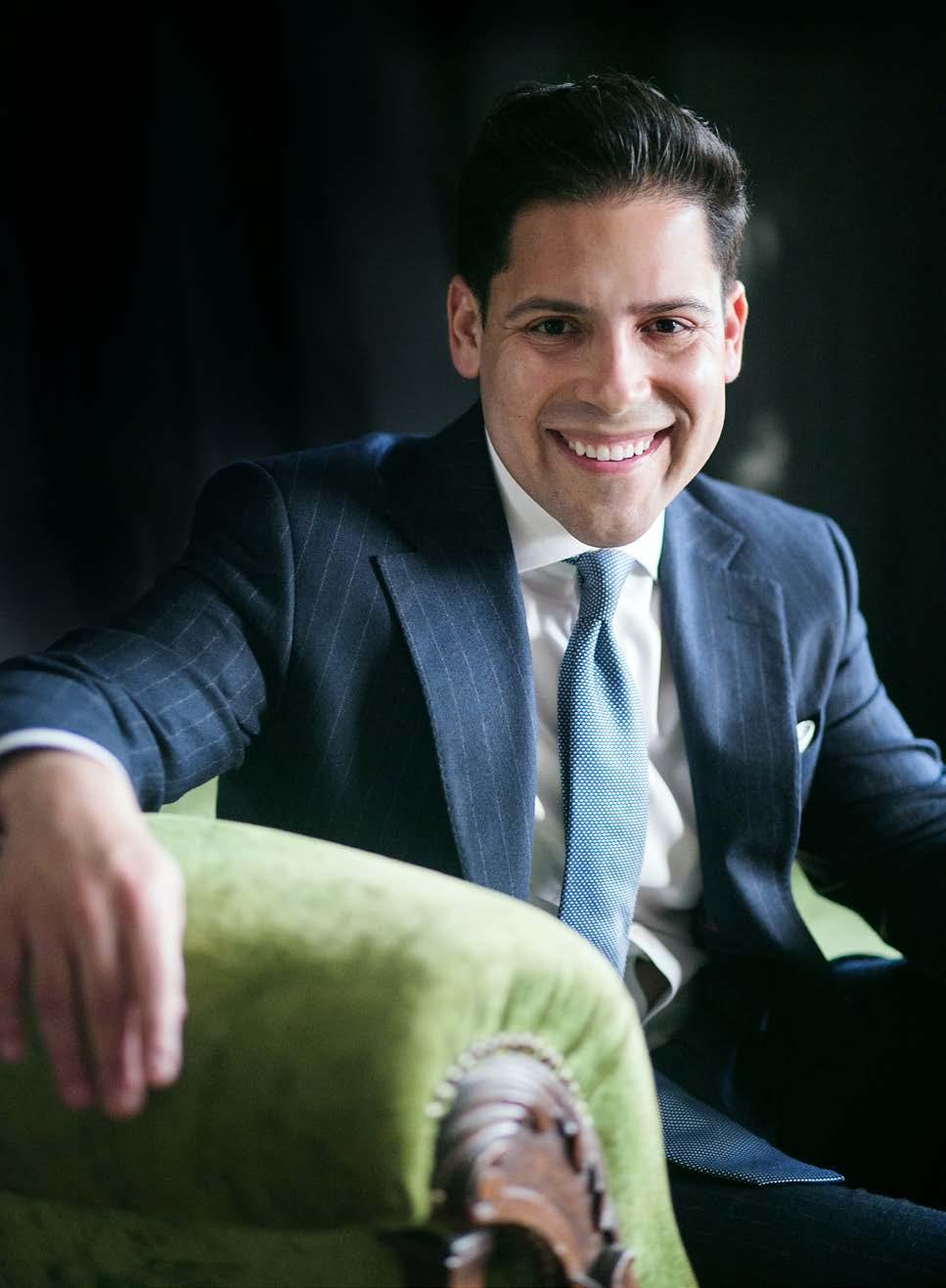
Josean Fernández Managing Director OppenheimerFunds
You helped create the Latino Professionals Network at OppenheimerFunds. What prompted this undertaking?
I am currently the president of the Latino Professionals Network (LPN), one of the firm’s Business Resource Groups (BRGs). As part of its diversity and inclusion efforts, OppenheimerFunds provides employees with the opportunity to connect with the diverse experiences of their colleagues by joining BRGs, which also include the Asian Professionals Network, Black Professionals Network, Disabilities Network, LGBTQ+ Network, Military Network, and Women’s Network. The LPN, in particular, is dedicated to helping OppenheimerFunds to celebrate the diversity of Latino culture and to leverage our perspectives to advance our community and our business goals.
We need more senior Latinos in finance. I think we are making progress in entry-level and middle-management positions, but Latinos are just not as present as I’d like in higher positions.
When we started the LPN, it was initially three individuals, including me. That’s reason enough to continue with it. The lack of Latinos is what motivated me. Today, we’re around forty-five individuals, and that’s only a year and a half in. The idea is to create an appetite for experimentation and a team ready to try new things. It’s a safe environment to take initiative and take risks.
What does a growth mind-set mean to you? How do you encourage it? In a fixed mind-set, you believe your abilities, intelligence, and talents are just fixed
“If someone is willing to take a risk and they fail but they’ve learned a great deal—that’s having a growth mind-set.”
traits. You have a certain amount, and that’s that. In a growth mind-set, you understand your talents and abilities can be developed through effort and time. You don’t necessarily think everyone’s the same or anyone can be Einstein, but you believe everyone can get smarter if you work at it.
You encourage this by admiring effort. Don’t let go of something until you understand it. I am that annoying guy that will stop the meeting and say, “I don’t understand this.” If someone is willing to take a risk and they fail but they’ve learned a great deal, I admire that. That’s having a growth mind-set.
What advice do you have for Latinos who hope to find themselves in a role like yours?
Talk about the value you provide to the organization. It’s not just about the nine-tofive or what falls under your list of responsibilities. Obviously, you have to do that well, but at most good organizations, most people do their nine-to-five well. What many don’t do is go the extra mile. Take on additional projects, or take it upon yourself to fix inefficiencies. I’ve always been proactive and comfortable with stepping outside of my day-to-day.
Latinos are often naturally engaging and relationship driven. Unfortunately, we suppress that at times because we think we might be viewed as boisterous. We should be leaning into that. In a world where emotional intelligence is at an all-time low and effective communicators are seemingly harder to find, Latinos should channel their natural communication style. It is in demand.
Marti Cortez of Ameren Missouri builds bridges through communication and community outreach while representing the legacy of her immigrant parents.

BY VALERIE MENARD
MARTI CORTEZ IS BRINGING THE CREATIVE and innovative skills that she built over the course of her career to lead a team at Ameren Missouri, the largest electric service provider in the state.
Growing up, she did not know that she was going to work for a company that is securing the future of energy; she only knew that she wanted to honor her parents’ legacy by following their example and making a difference in people’s lives.
“Neither Mom nor Dad had the opportunity to attend college, yet their example of motivation and hard work is the moral compass that still guides me today,” she says.
“My parents were salt-of-the-earth people. No matter how many problems they faced and overcame, they demonstrated a strong integrity powered by faith, and they took time to help others.”
In her current role, Cortez fulfills her goal of making a difference by focusing on
Ameren Missouri’s mission to be a good corporate neighbor and by developing ways to improve the business experience for commercial and industrial customers.
“It’s energizing work. We’re powering the quality of life,” she says. “We have a strong presence in the community in which we operate and live.”
The daughter of Mexican immigrants, Cortez believes that the examples of hard work, loyalty, and resourcefulness she saw in her parents guided her and her siblings to excel in their careers.
Cortez started working at age fourteen at a retail store to help supplement the family’s income. She helped to pay for her tuition at a parochial school, which she considered integral for getting into college.
Like many first-generation Latinas, Cortez lacked role models who had attended college, but she, nonetheless, enrolled in the community college in Brownsville, Texas. In the 1980s, college registration was a manual process, so she prepared five index cards with a mix of general education courses to take if she could not get her first lineup. Her resourceful planning would ensure she could take a full course load and still work five days a week to fund her education. Over time, she accumulated classes in strategic marketing and communication.
“I naturally gravitated to marketing,” she says. “No matter the challenge, effective communication about your product or service sets you up for success.”
She would continue to pay her way through community college in Texas and then Missouri, where she enrolled in Webster University in St. Louis to complete a degree
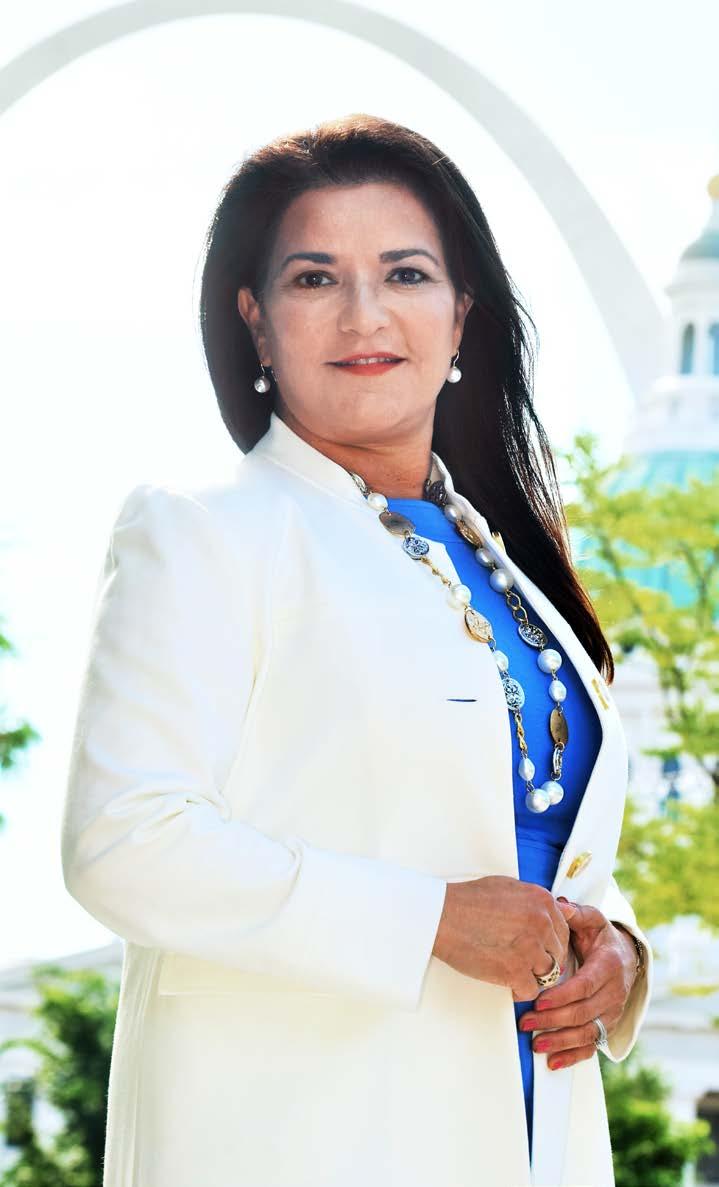
Marti Cortez Director of Business and Community Relations
Ameren Missouri
in marketing. This effort took several years to complete while her roles and responsibilities at work kept growing.
“I enjoyed taking on the most complex clients,” Cortez says. “I love a challenge and am forever grateful to those who recognized my potential. Two of the things that define me most are the leadership integrity and work ethic that I learned from my parents.”
Her professional path is as diverse as her academic one. She has worked in organizations that varied in scope and business models, but they all tapped into her experience and her communication and innovation skills. Early in her career, Maritz hired Cortez to plan incentive travel programs for its customers, and after a series of roles with ascending responsibility, she was promoted to director of brand marketing and public relations.
“My sixteen years at the company were filled with more learning opportunities than some people have during their entire career,” Cortez says. “As I was promoted, I became one of a handful of staffers who had worked in all lines of the performance-improvement business. I learned to project-manage and to marshal the efforts of cross-functional teams and business associates around the world.”
Then, Cortez joined Bank of America as consumer market vice president, where she could apply her knowledge of performance improvement, rewards and recognition, and customer-loyalty strategies. She was then offered a position as vice president of operations and visitor experience for the St. Louis Science Center.
“I was delighted to serve in a position to improve the visitor experience while also promoting science, technology, engineering, and math learning,” she says. “Leading a
“No matter the challenge, effective communication about your product or service sets you up for success.”
museum operation requires a lot of resourcefulness and partnership-building with the community.”
After seven years of six-day work weeks, Cortez was recruited to Charter Communications, where her last role was as acting vice president of philanthropy and community relations. Her commitment to making a difference in the community helped her to develop a foundation for corporate giving and connecting to the community.
“What I’ve been able to experience from all these roles has given me a broader range of strategic moves to deploy,” she says. “Those moves are most geared toward delivering on the brand promise while also looking at how customers and community stakeholders see and experience the company.”
In 2013, Cortez joined Ameren Missouri as director of customer care. Then, in 2017, she was recruited to lead the business and community relations function. Her team is now responsible for Ameren’s relationships with key community stakeholders, local elected officials, and large commercial and industrial customers.
Cortez spent the past year designing business processes and aligning people and technology to enhance business relationships.
“Our company had been providing electric and gas service for more than one hundred years,” Cortez says. “We are proud to offer rates that that are among the lowest in the nation. To complement our offering, we are establishing an account- and relationship-management framework that will enable our team to serve as trusted energy advisors. We have developed a comprehensive approach that takes into consideration





her parents taught her: hard work, loyalty, and resourcefulness. With this in mind, Cortez knows that immigrants like her parents can make a difference in the US business landscape.
“Many good people come to the United States with a passion to do better while seeking opportunity,” she says. “Immigrant families like mine have gifted our country with doctors, medical caregivers, artists, theoretical physicists, and hardworking citizens who have made it their lives’ work to give back to their community. No one eager to work hard should be denied an opportunity. I am proud to represent what a family of hardworking immigrants can contribute in service to others.”
GLO BAL
International businesses present unique challenges— and opportunities—for corporate citizenship in multiple countries. The executives featured here thrive in navigating cultural shifts worldwide.
126 Gustavo Biscardi, JBS
132 Marta Carreira-Slabe, Aon Latin America
136 Alejandra Montenegro Almonte, Miller & Chevalier
Pushing Himself to New Heights
BY ALISON VER HALEN
How the risks Gustavo Biscardi has taken have helped him climb the corporate ladder to become global treasurer of JBS

Gustavo Biscardi Global Treasurer JBS
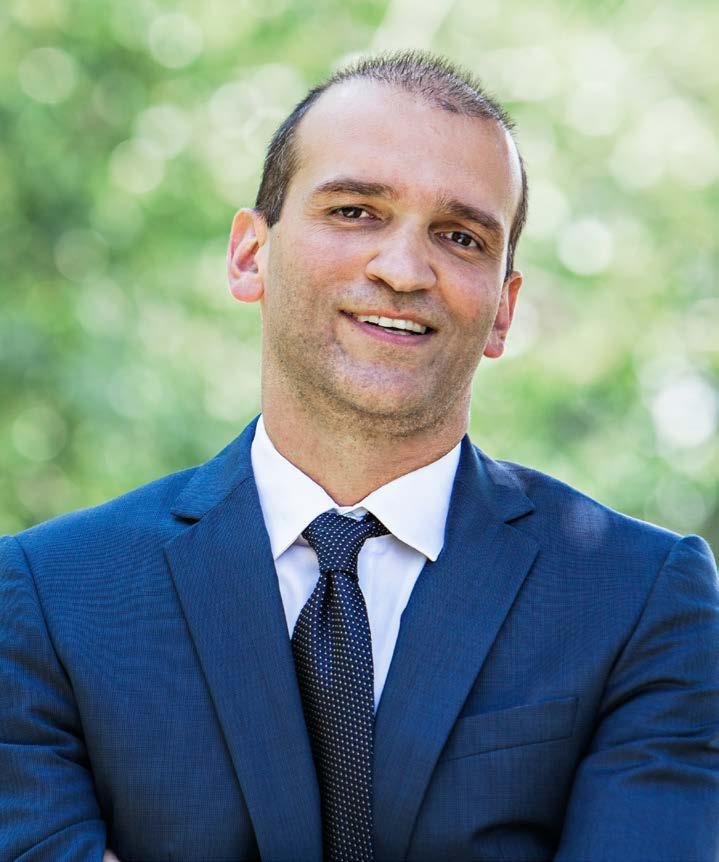
GUSTAVO BISCARDI WAS JUST SIXTEEN YEARS OLD WHEN HE started studying law in Rio de Janeiro. At age seventeen, while he was working on his law degree, he started interning at a local law firm, which offered him a full-time position as a junior partner once he graduated. He held that job for a few years, but he was then made an offer he couldn’t refuse.
“During my tenure as a junior partner, I got really interested in what was going on at the other side of the table: the finance world. Suddenly in 1999, I was offered a position to join a start-up business in Brazil, managing the administrative and finance part of the venture,” Biscardi says. “So, I jumped the boat and went into another career.”
For five years, Biscardi built his management and finance skills with the start-up business, then decided to move to Australia and earn an MBA from Queensland University of Technology. “I knew I needed some sort of a finance academic background, so I chose to close the gap and get my MBA,” says Biscardi, who also later earned a bachelor’s degree in accounting.
Shortly after Biscardi completed his MBA, JBS—one of the world’s leading food companies with operations in more than twenty countries—acquired Swift Australia. The acquisition meant the company now had a branch in Australia, so Biscardi joined the team in 2008 as a treasury and finance analyst.
Before long, the board of directors asked Biscardi to create and present a feasibility study on launching a transportation division in Australia. They liked what they heard, so they put him in charge of applying his research to the real world. “I didn’t know anything about trucks or drivers, so it was a challenging situation. I had to lead a new team while learning about the industry,” Biscardi says. “I knew everything on paper, but I had no experience in the real-world applications of the transport and trucking business.”
Nevertheless, Biscardi succeeded in implementing his plan, and the company saw a double-digit EBITDA margin and positive free cash flow within the first year. After two-and-a-half years of leading the successful venture, JBS invited Biscardi to become the company’s Asia Pacific treasurer, a position that he held for a year and a half before the company invited him to join the team in Colorado as JBS’s North American treasurer. Another year-and-a-half later, Biscardi became global treasurer, a position that he has now held for almost two years.
“We’re responsible for managing all of the cash for the organization,” Biscardi says. Since JBS USA has $38 billion in revenue, Biscardi has his work cut out for him. “We use it as widely as possible, so if we need money in one region and hold a surplus in another region, even if it’s abroad, we can make sure cash is moved efficiently among any of our domestic or foreign subsidiaries.”
Gustavo Biscardi, Global Treasurer at JBS USA, on his exceptional accomplishments and recognition by Hispanic Executive.
We are proud of our longstanding relationship with JBS USA.
“The company has a strong culture; no one has a personal agenda. There’s a global strategy for the company, and we all work together to make that happen.”
With a large, international company, the treasurer also needs to consider the tax structure of each area in which the company operates so that it can be sure to get the most out of its money.
“White & Case has had the privilege of working with Gustavo and the JBS team over the past fifteen years,” says Dan Nam of international law firm White & Case. “As a multinational corporation, JBS has one of the most intricate structures we have seen. This requires constant oversight to ensure that the cash needed to maintain operations is where it needs to be. This responsibility falls on Gustavo’s shoulders, and he has performed admirably. Gustavo’s dedication and hard work have greatly contributed to JBS’ operational success.”
Overseeing the company’s cash flow, however, is not the only responsibility that falls on Biscardi’s shoulders.
“Aside from cash management, we also have significant financial risks that must be managed, which are mainly the foreign-exchange and interest-rate exposure that the company has as a whole,” Biscardi says. “Liquidity is more important than anything. We’re a very active player in the capital market, so we have to manage that and make sure we have the right liquidity there to cope with the markets.”
Considering he manages so much money for such a large company, you might expect Biscardi’s team to be much larger than it is.
“We have a pretty lean team—about six people in North America who work very closely with me,” Biscardi says. “We also have lean local treasury teams in other regions to make sure we walk together in the same direction.”
One of the challenges of operating such a large, global company can be maintaining a cohesive strategy and ensuring every member of
every team is on board with that strategy. Biscardi says JBS works hard to maintain synchronicity.
“We have a high level of communication between the team members in all regions,” Biscardi says. “The company has a strong culture, and we all have to work together; no one has a personal agenda. There’s a global strategy for the company, and we all work together to make that happen.”
At the same time, JBS encourages a sense of ownership. “We have to honor our tasks,” Biscardi says. “I really emphasize the sense of ownership in the company, and that has been cascaded down from the leaders. We try to put that in front of everything.”
Both the high level of communication and the sense of ownership, which are such an inherent part of JBS’s culture, influenced Biscardi’s own self-described “open-door” leadership style. He emphasizes communication and respects his team members’ boundaries and work styles.
Biscardi also makes sure to put a lot of effort into coaching his team members. “We always have the next line of leaders growing inside the company—and not just in my department,” Biscardi says. “We have a program that is training the next wave of leaders inside the company.”
Biscardi received coaching from the company’s leadership, which ultimately resulted in his ability to take the position of global treasurer of JBS. From his opportunity to present ideas to the board of directors early on in his career to his long-lasting and close partnership with the company’s CFO, Biscardi knows the support he was given on his climb up the corporate ladder, and he is committed to providing that same support to the next generation of JBS leaders.



Aon’s Marta Carreira-Slabe sees today as the point in her career where she can help women all over the world succeed in leadership roles.
BY OLIVIA N. CASTAÑEDA
MARTA CARREIRA-SLABE HAS BEEN A professional career woman for thirty years. The first chapter of her career began during the late 1980s as a television news reporter and then anchor for WCIA-TV in Central Illinois. She later decided to pursue the law, went back to school, and worked at a large Chicago law firm before landing in her current role as chief counsel for Aon’s business in Latin America.
“Marta is an outstanding lawyer and manager,” says Robert Ellis, a partner at law firm Kirkland & Ellis. “She treats Aon’s outside counsel as true partners, and she values our contributions. Kirkland is honored to have the opportunity to collaborate with Marta and her team.”
In early 2018, after an Aon regional business meeting, several women approached Marta Carreira-Slabe to compliment her on her composure during a presentation. For Carreira-Slabe, the feedback from female colleagues was the nudge she needed to leverage her experience and position to help other women at Aon, no matter where they are in their careers. So, earlier this year, Marta led the launch of the Aon Women’s International
Network (WIN) chapter for Latin America.
Aon established the WIN business resource group ten years ago to foster women’s professional growth, aid women in their career advancements, and work as a benefit to clients by sharing innovative ideas. There are eighteen chapters in North America and another launching in Poland.
Aon’s WIN chapter for Latin America is initially focusing on Mexico and Brazil, where there are significant employee populations. Carreira-Slabe has partnered with Aon senior executives to provide the women of Latin America a platform to grow professionally and develop friendships with each other, with clients, and with their business colleagues.
“The timing was not planned,” she says. “The network in Latin America came together organically, which is the best part, as we’ve seen the demand for this type of support firsthand.”
Carreira-Slabe would also love for the initiative in Latin America to further build community with Hispanic colleagues in North America and to reveal and leverage the power of women in all of the Americas.
“I strongly believe in the power of women to address challenges.”
Marta Carreira-Slabe Chief Counsel
Latin America
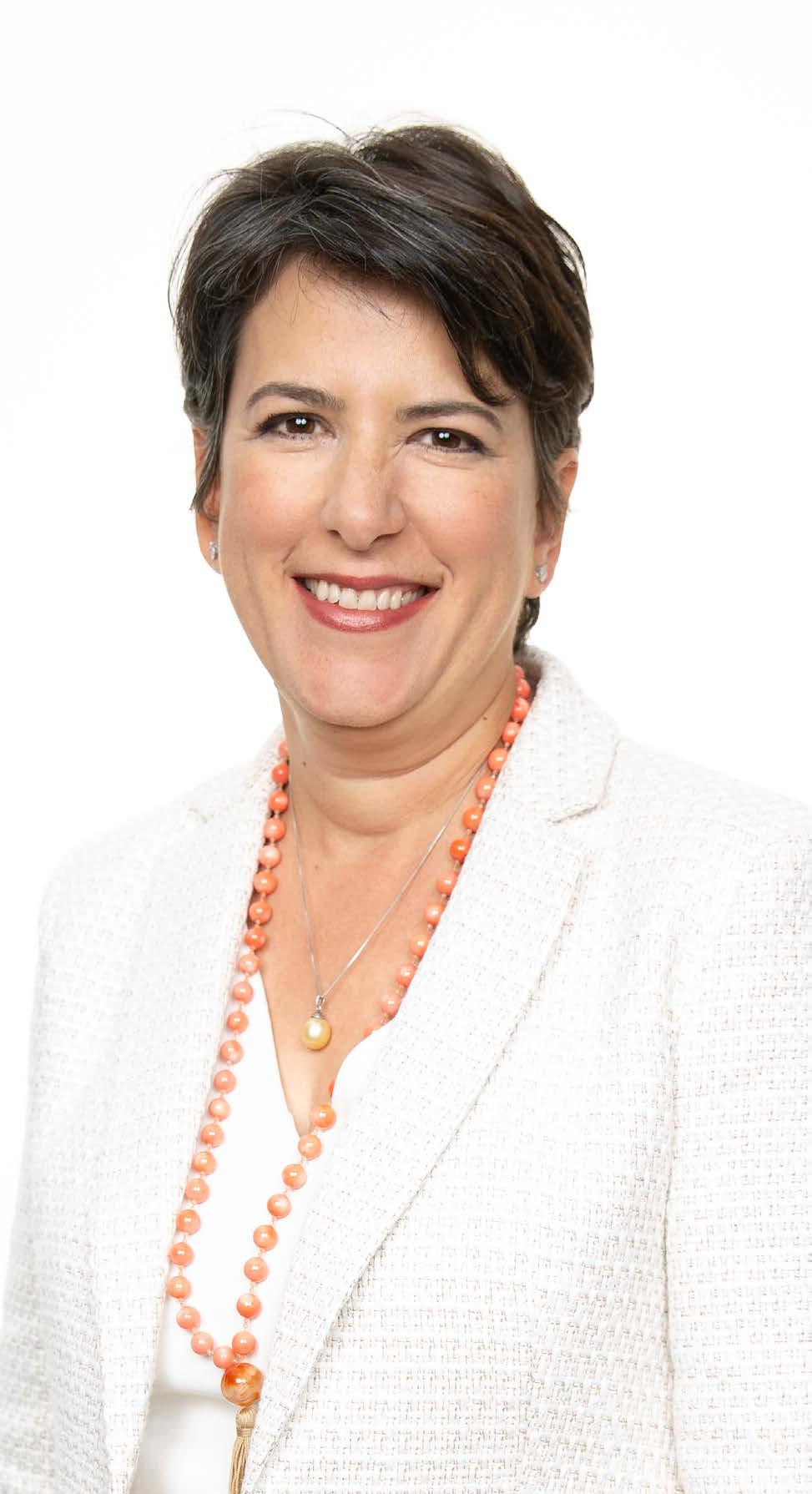
Aon

LESSONS LEARNED
As a champion and advocate for others, Carreira-Slabe shares six insights that she has gained throughout her career that anyone, at any level, can utilize to prosper and get ahead:
Believe in Yourself, and Be Yourself
“This is where confidence comes from and is really important in career development. When I have done very well and hit it out of the ball park, I was comfortable being myself and I wasn’t pretending to be someone else’s perception of me.”
Take Risks
“I have grown the most professionally when I took a risk, stretched myself outside of my comfort zone, and allowed myself not to be entirely perfect.”
Network
“Find out who your fans are. Nurture your fan base and network with people that want to promote you and believe in you.”
Be Strategic
“Write down the top three things you must accomplish today, and do it well. Don’t get lost in the day-to-day emails and phone calls, which can lead to low-value tasks, draining limited resources and time. Understand and prioritize what is key to your career and development.”
Be in the Moment
“Concentrate on one thing at a time, and if you can’t be in the moment, be human enough to recognize that and try again another time.”
Take Stock
“Recognize your own achievements. This allows you to recharge your batteries and celebrate who you are as a woman.”
During a 2018 trip to Mexico, Carreira-Slabe heard promising young women call for more help in building their confidence and connections. She found that many of her female colleagues want to listen to successful stories from other women at every level of the business and learn from their experiences, whether those are successes or mistakes. She also discovered that these women desired to have their accomplishments better recognized. Many women said they’d like coordinated events to connect with clients and similar WIN chapters at the national and regional level.
All of this, Carreira-Slabe says, is key to WIN’s success. The purpose of WIN, after all, is to allow women to take time to reflect and focus on how to improve their careers.
“We’re so busy with our careers and our families that we don’t always hit the pause button,” Carreira-Slabe says. “I strongly believe in the power of women to address challenges. It feels good to help and to share experiences, as a mentor once did for me, so we can overcome those things that keep us from achieving our full potential.”
Carreira-Slabe is also an advocate of the need for flexible work schedules. She says that this is usually seen as a women’s issue but that it’s really a gender-neutral issue. “Men are also caregivers for children or aging parents,” Carreira-Slabe says. “For instance, a male colleague in Mexico requested flexibility because he must drive his daughter to the nursery in the mornings.”
This ties in to the ever-growing, universal discussion of diversity and inclusion across
corporations. “Any company that is going to succeed has to embrace diversity and inclusion,” Carreira-Slabe says. “That is the path to allowing colleagues to actually be themselves and feel more comfortable coming to work, which then sparks innovation and creative thought that leads to better problem solving for our clients.”
At Aon this year, the top two hundred leaders, Carreira-Slabe included, incorporated D&I objectives into their annual goals. “We will be a more productive and innovative firm because we foster diversity in an open environment,” Carreira-Slabe says.
The first step to accomplishing these objectives, she says, is to talk about them meaningfully. Carreira-Slabe says, “The D&I conversation needs to take place as an ongoing debate because it is an ongoing cultural change for any company.”
Aon launched unconscious bias training for management, which seeks to address implicit biases in human interactions and how they influence behavior and the decision-making process. For example, recognizing cultural behaviors are important. Aon’s second strategy in creating an inclusive work environment is in its annual, global colleague survey that is distributed to its fifty thousand employees.
“Our managers take the feedback seriously,” she says, “and will track progress to ensure we’re moving the needle.”
From WIN to D&I, this all adds up to Carreira-Slabe’s goals as a global leader and making Aon a place that supports and celebrates its employees.

Turning the Tide in AntiCorruption
ALEJANDRA MONTENEGRO ALMONTE IS exactly where she wants to be. As a member at Miller & Chevalier in Washington, DC, she uses her passion for the law and her love for Latin America to design meaningful compliance programs and conduct internal investigations to fight corruption throughout the region.
Looking back, Montenegro Almonte says being a lawyer has been her dream for as long as she can remember. After graduating from Harvard Law School, she found a new path in international arbitration and cross-border investigations. Later, during her years as an associate at Weil, Gotshal & Manges, she found her niche conducting corruption investigations.
Montenegro Almonte worked there for several years until she joined gategroup as in-house counsel to focus on legal issues in Latin America and develop an anti-corruption compliance program for the company’s North America and Latin America operations. Taking a leap of faith, Montenegro Almonte made the switch away from the law firm and into a company culture that, she says, ended up giving her invaluable insight into the business world.
BY KASEY CHEYDLEUR
Alejandra Montenegro Almonte’s love for the law and Latin America shine through her work as a core member of the anti-corruption team for Miller & Chevalier
“As general counsel, I saw the inner workings of a company, and that had always been a little bit of a black box to me, having been at law firms that are such a different model,” Montenegro Almonte says. “At gategroup, I learned the importance of presenting legal advice in a way that could be readily implemented by the company. This is quite different than arguing against a counterparty or crafting a winning a legal argument. In-house, I learned not just to advise on the law but also to help the company operationalize legal standards and expectations so that compliance with the law was both meaningful and not obstructing the business goals.”
She loved her time at gategroup, but she was invited to meet with the international department at Miller & Chevalier, which
has a deep compliance and anti-corruption practice and a strong focus on Latin America. The firm’s pragmatic approach to practicing law coupled with its first-rate experience in Latin America presented an opportunity too good to pass up. So, she joined its Latin America anti-corruption and compliance team in 2016.
“At Miller, I found a firm with deep-rooted expertise in compliance and anti-corruption across different industries,” she says. “They understand that legal advice cannot be given in a vacuum. There is no one-size-fitsall solution. It’s important to stop and learn the business so that our counsel cannot just be understood but also operationalized.”
She explains this pragmatic outlook results in the business-friendly approach to legal counseling that made her effective while in-house. With her in-house experience in tow, she learned to always emphasize to clients that enhancing compliance programs further protects the value of their enterprises.
What really sold her on the firm, however, was the Latin America anti-corruption team’s deep ties to region. “The majority of the team has lived in the region for extended periods of time, and several of us are from the region,” she says. “They are, if not native Spanish speakers, near-native proficiency in the language, and—what’s more important to me—they understand the culture of Latin America.”
Today, Montenegro Almonte’s focus is on advising multinational companies on anti-corruption laws, specifically the Foreign Corrupt Practices Act. First passed in 1977, the act, Montenegro Almonte says, prohibits bribery of foreign officials and, thus, may reach companies and individuals outside of the United States that violate the law—which is quite broad in its scope. Essentially, the law may cover subsidiaries of US-based companies and even non-US-based companies that trade or operate in the United States.
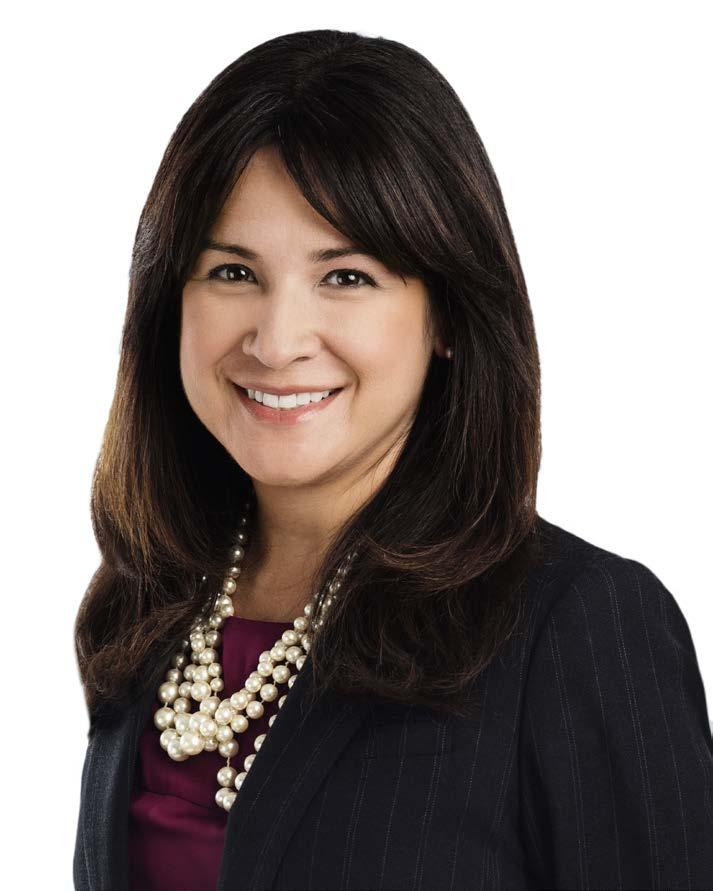
Alejandra Montenegro Almonte Member Miller & Chevalier
So, Montenegro Almonte advises companies on developing compliance programs that help them detect, prevent, and respond to situations where their employees or agents may be making inappropriate payments to those foreign officials. To properly do this, she needs a deep understanding of the company’s operations and existing control systems to identify where it may be vulnerable to employees using company funds for illegal purposes. This might include looking at vendor-management systems, accounting systems, existing ERP systems, and the company’s overall environment risk-management procedures.
Understandably, some companies might be resistant to this, viewing compliance programs as added bureaucracy. Montenegro Almonte says that she works with companies to help them understand that properly designed compliance programs can and should exist as integral parts of existing procedures.
“People sometimes have knee-jerk reactions to compliance programs,” she says, “but when done well, they come to understand that compliance ultimately protects their enterprise value and is in the best interest of the company and shareholders.”
After gaining a deeper knowledge of a company, Montenegro Almonte then works to develop policies and procedures that will help mitigate identified corruption risks, both internal and external, which is important to note because corruption risks vary from company to company. Finally, because of her in-house experience, Montenegro Almonte can help companies effectively implement those policies and procedures. It is here where Montenegro Almonte’s and her team’s deep understanding of the cultural differences between the United States and Latin America and within the region help most.
Montenegro Almonte says that cultural understanding is critical because it provides invaluable context. For example, in the
“As companies become more global, they realize that, to be a good corporate citizen, you have to demonstrate you have these compliance procedures in place.”
context of compliance, it is not uncommon to encounter initial hesitation from non-USbased companies and their employees. To an outsider, this may look like obstinacy and an unwillingness to cooperate. Still, to someone that understands the cultural context, it is evident that the hesitation may come from lack of understanding of why a US law applies and fear of participating in a foreign legal process.
In the past few years, however, she has seen a tidal shift in Latin America toward a greater recognition for the need for anti-corruption and compliance programs. The discussion shifted from US laws, and now many Latin American countries are creating anti-corruption laws, and many companies are taking those laws very seriously. “Now,
the buy-in is much higher,” she says. “As companies become more global, they realize that, to be a good corporate citizen, you have to demonstrate you have these compliance procedures in place.”
On a recent panel in Costa Rica, in fact, someone shared how happy they were that she was attending because Central America was a fly-over zone for US lawyers for many years, but they wanted help with compliance, too.
“Corruption has really fractured the social structures in Latin America for so long, and there’s this conception that, ‘Oh it’s just an accepted way of life,’” she says. “When you’re from there and you spend time in these countries, you understand it’s not an accepted way of life. No one likes it. So, to be able to help turn that tide and to empower organizations and
people who are trying to make strides in changing that cultural perception is really what this is about for me. By helping people hold wrongdoers accountable, the perception that nothing is going to happen starts to erode.
In addition to developing compliance programs, Montenegro Almonte also conducts internal compliance investigations for companies in addition to defending them if there are external investigations into the company.
Montenegro Almonte loves her work, and it shows. Yet she never would have found herself here if she hadn’t taken some risks, so her best advice to new lawyers and professionals at the beginning of their career paths is to always be open.
“Be open, and don’t be afraid to go off course when opportunities present themselves because I wouldn’t be where I am and I wouldn’t have had the exceptional experiences that I have if I hadn’t been open,” she says. “Leaving my prior law firm and going to a company was terrifying, and a lot of people said I was making a huge mistake, but the years I spent there were enriching beyond expectation. They made me a much better outside counsel than I would have been had I followed the path I had set out to follow.”
Never one to shy away from a challenge, Montenegro Almonte looks forward to continuing to affect changes in Latin America and the world of anti-corruption and compliance at large.



We asked the business leaders in this issue:
What was your most awkward interview moment?

“A candidate indicated he was fluent in Spanish. I was thrilled to chat with a candidate in my native tongue, but, beyond hola, my words only confused him. Turns out he ‘overestimated’ his fluency, trying to pad his résumé.”
—JOSEAN FERNÁNDEZ, OPPENHEIMERFUNDS (P. 118)
“The interviewee was not a fit, and after he was notified that we decided to go in a different direction, he asked me for a recommendation letter.”
—DENNIS
CALDERON, INSEEGO (P. 109)
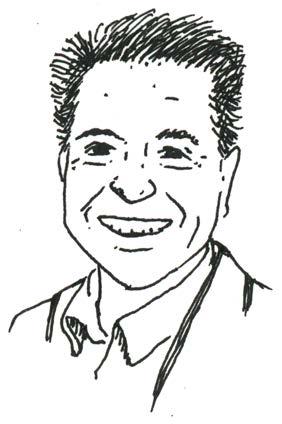
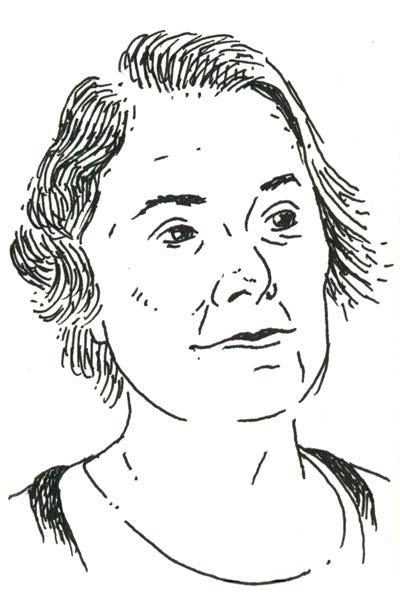
“A candidate for a C-Suite position couldn’t recall how many people he oversaw in his current role and kept circling back to correct himself, even after the CEO and I had moved on.”
—LISA PEREZ, PROSPERITY READY (P. 82)
“I spilled coffee all over myself prior to a day of interviewing. It allowed me to apologize for my appearance and break the ice with four candidates who were nervous to interview for their first job out of college.”
—MARTI CORTEZ, AMEREN MISSOURI (P. 121)
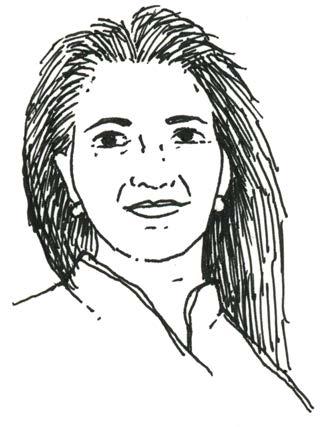
¿Cómo te gustan los huevos?
TOREADOS





“There is one population cohort that sets the United States economy apart from any other mature market in the world: the US Latino .”
—SOL TRUJILLO P.58
